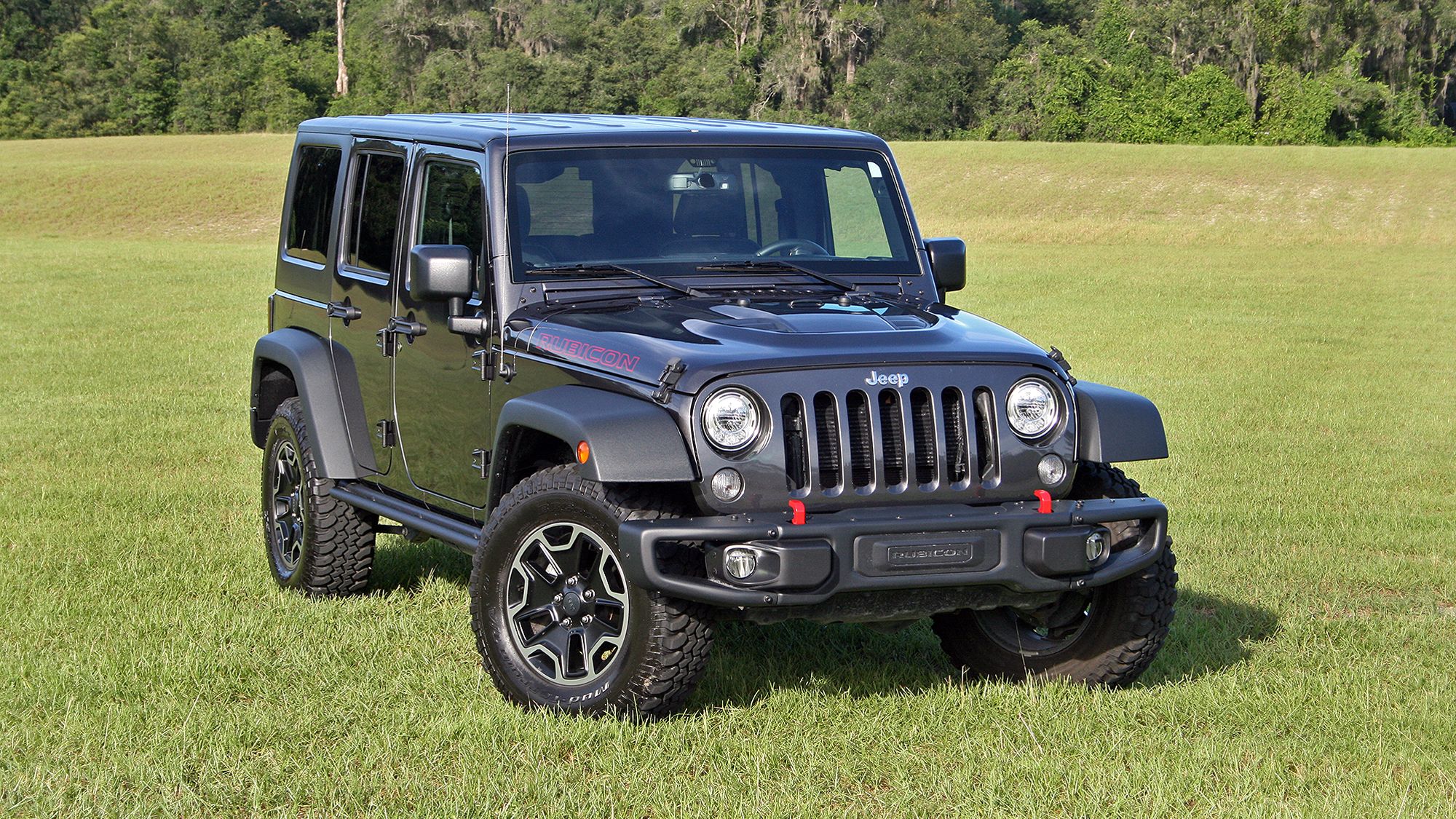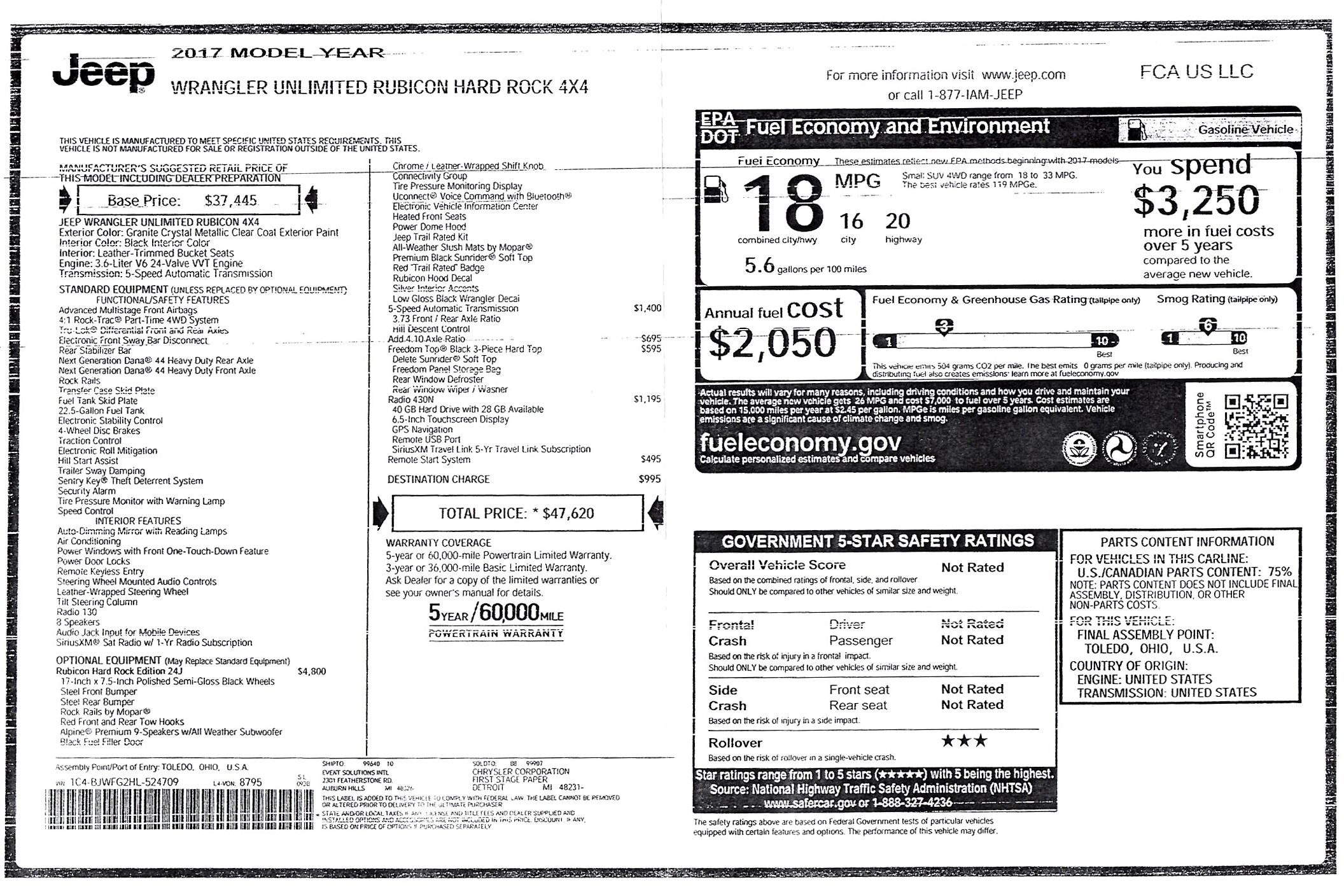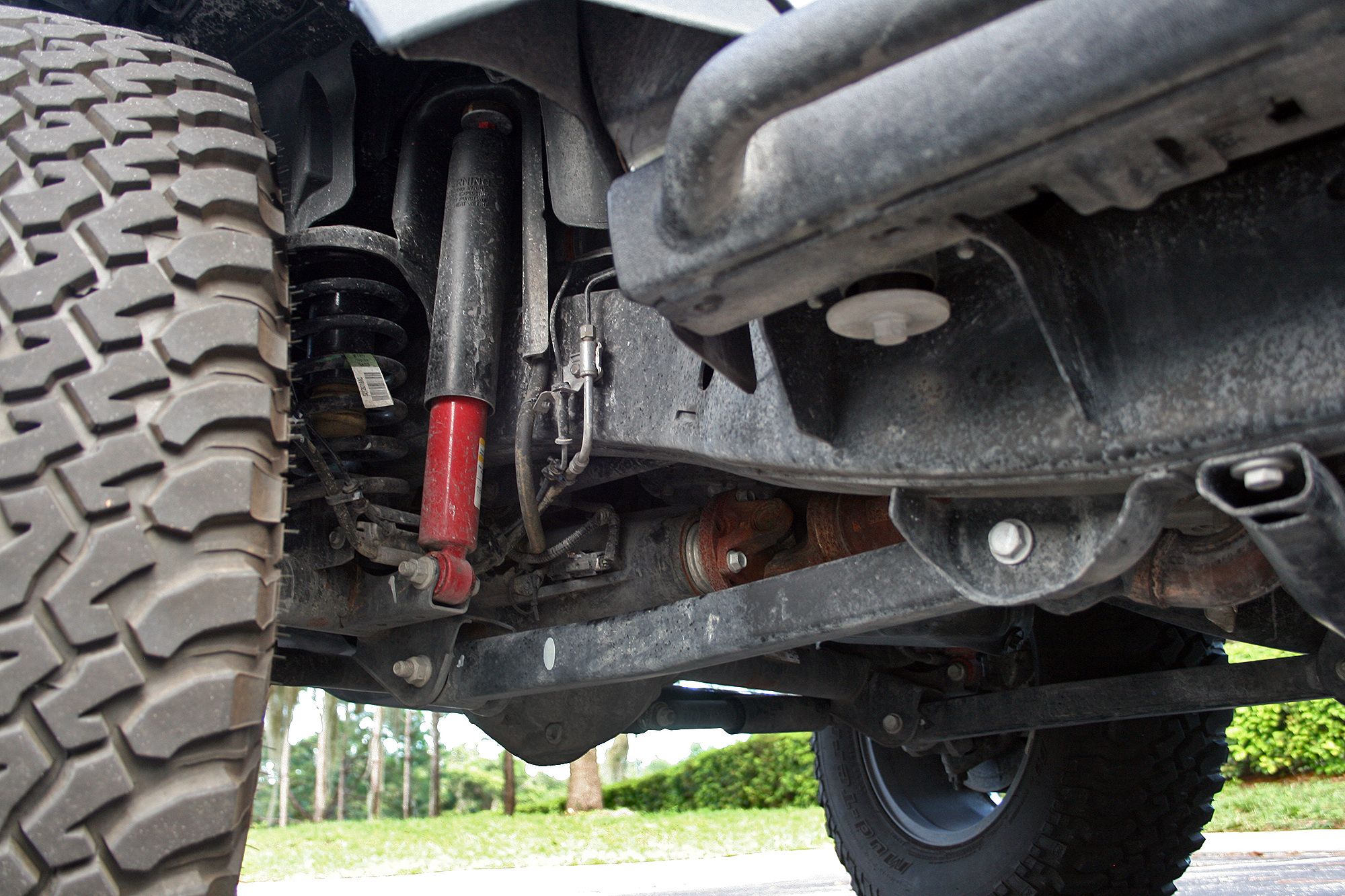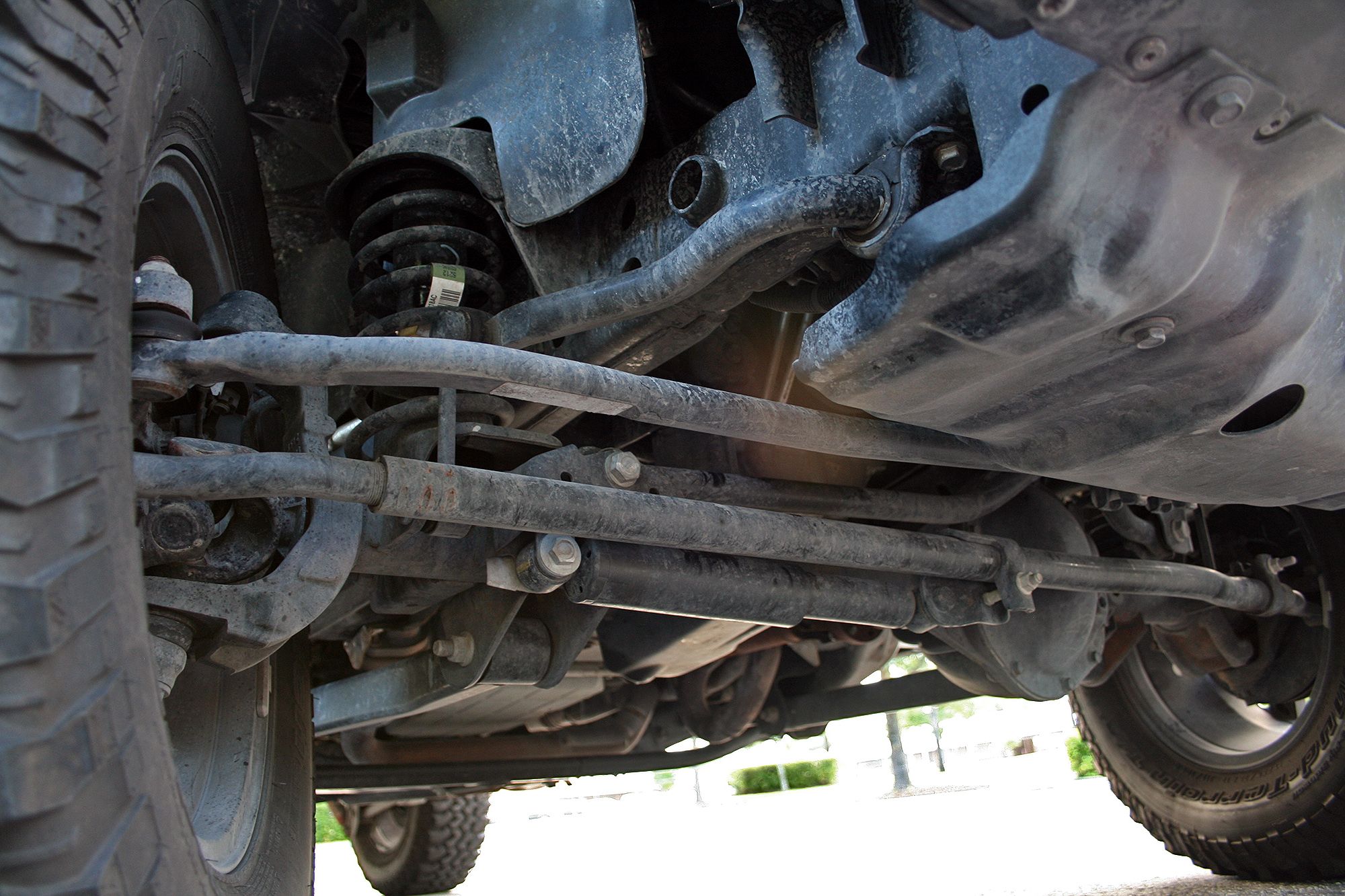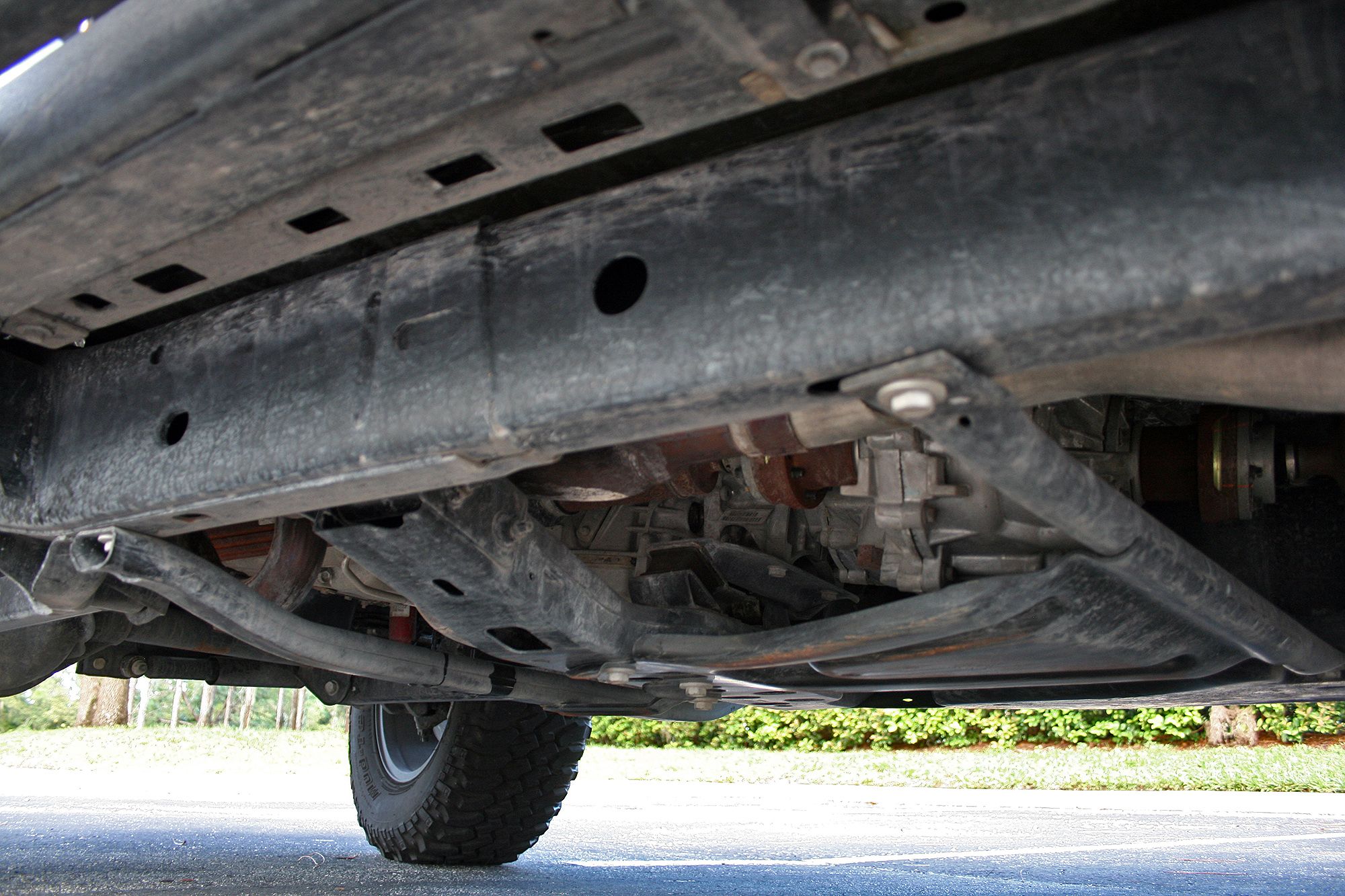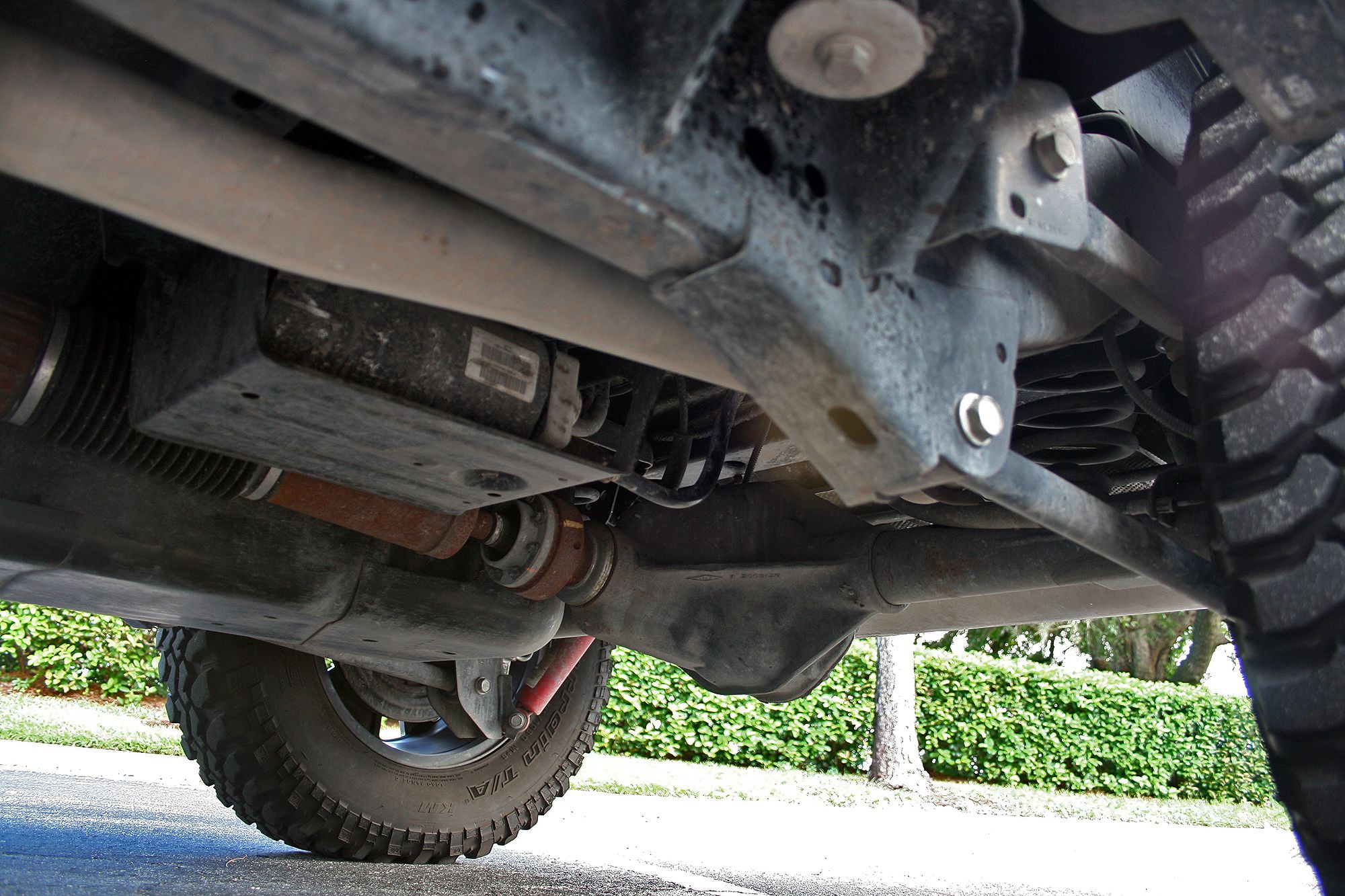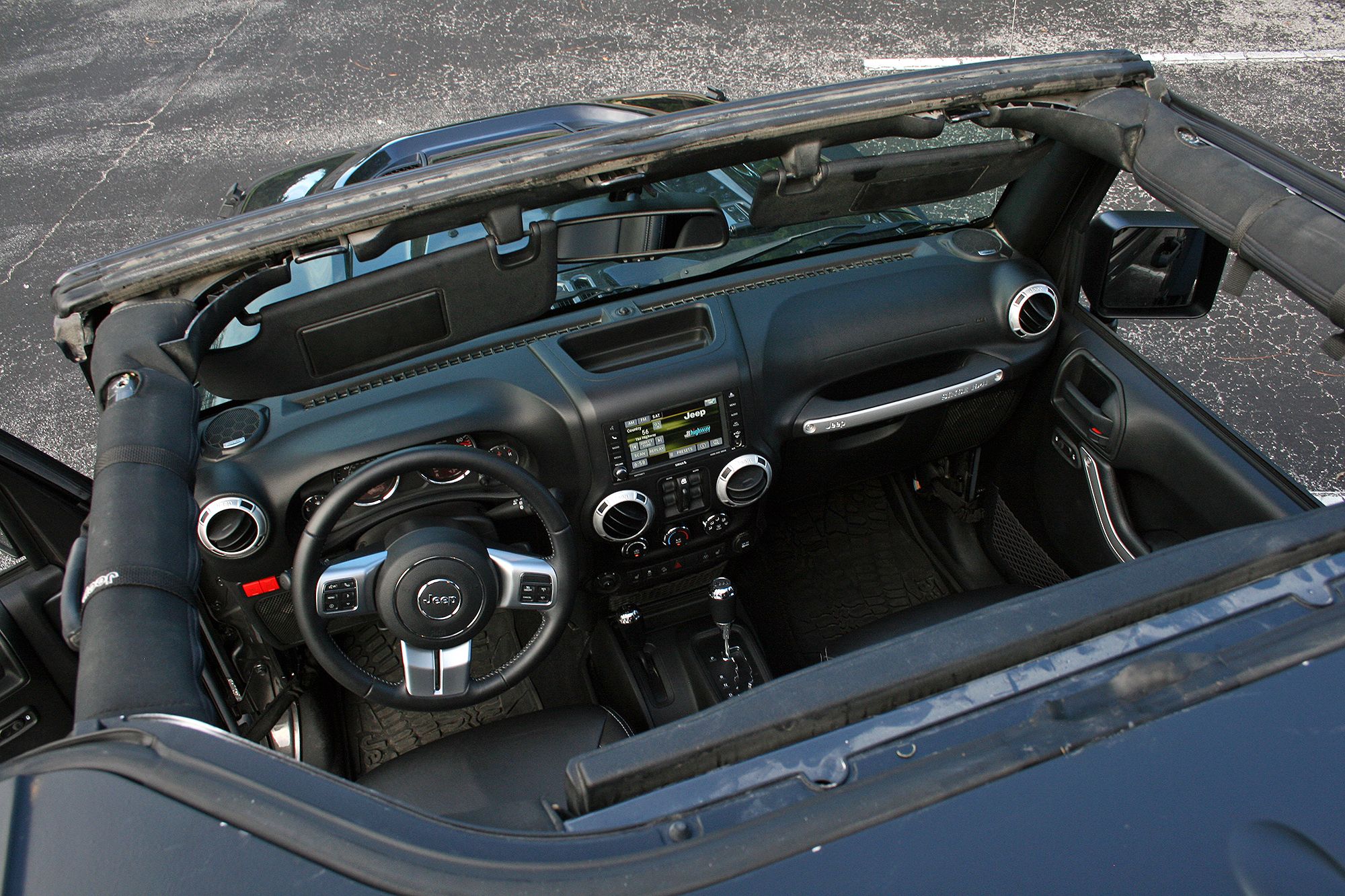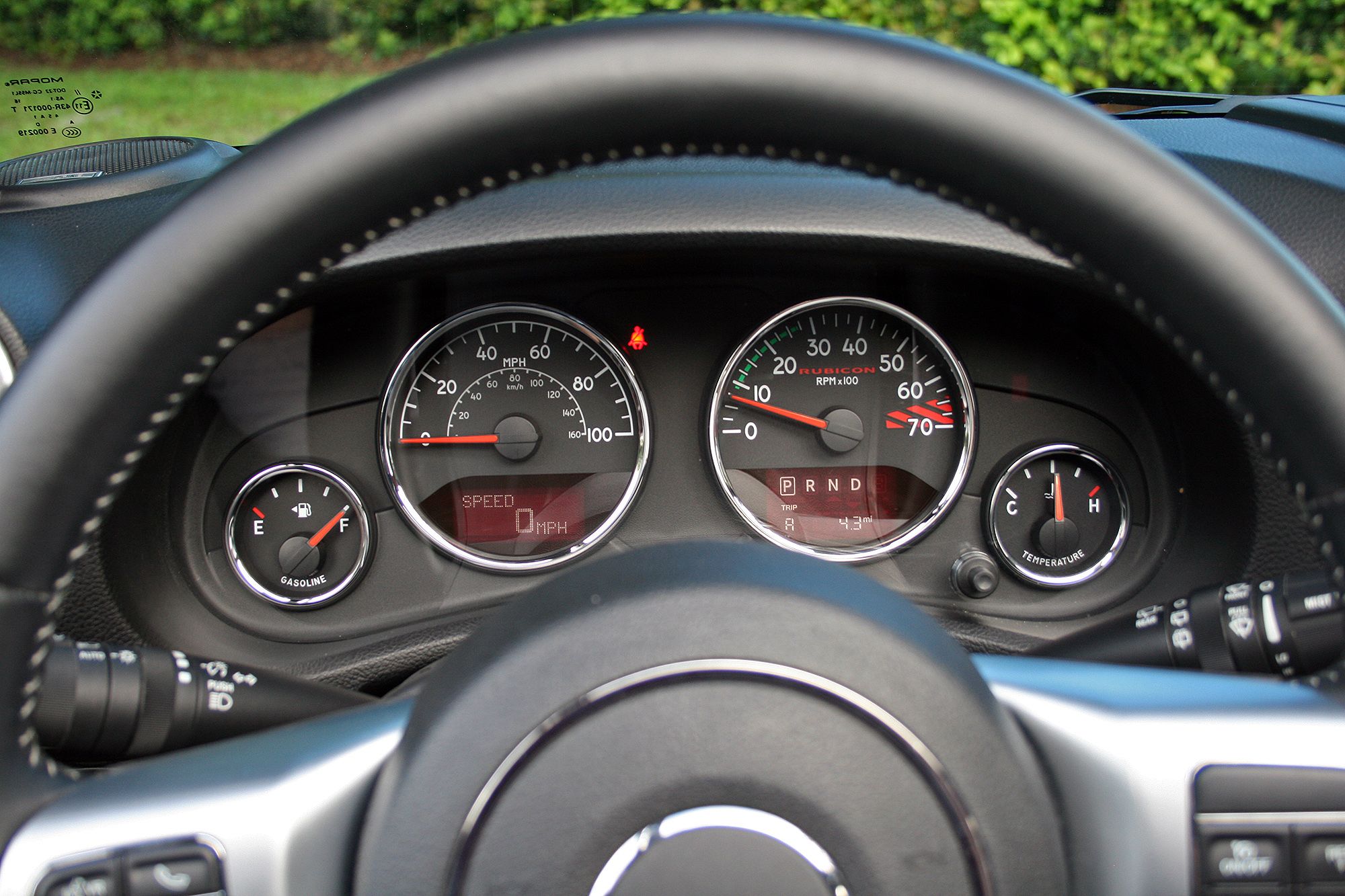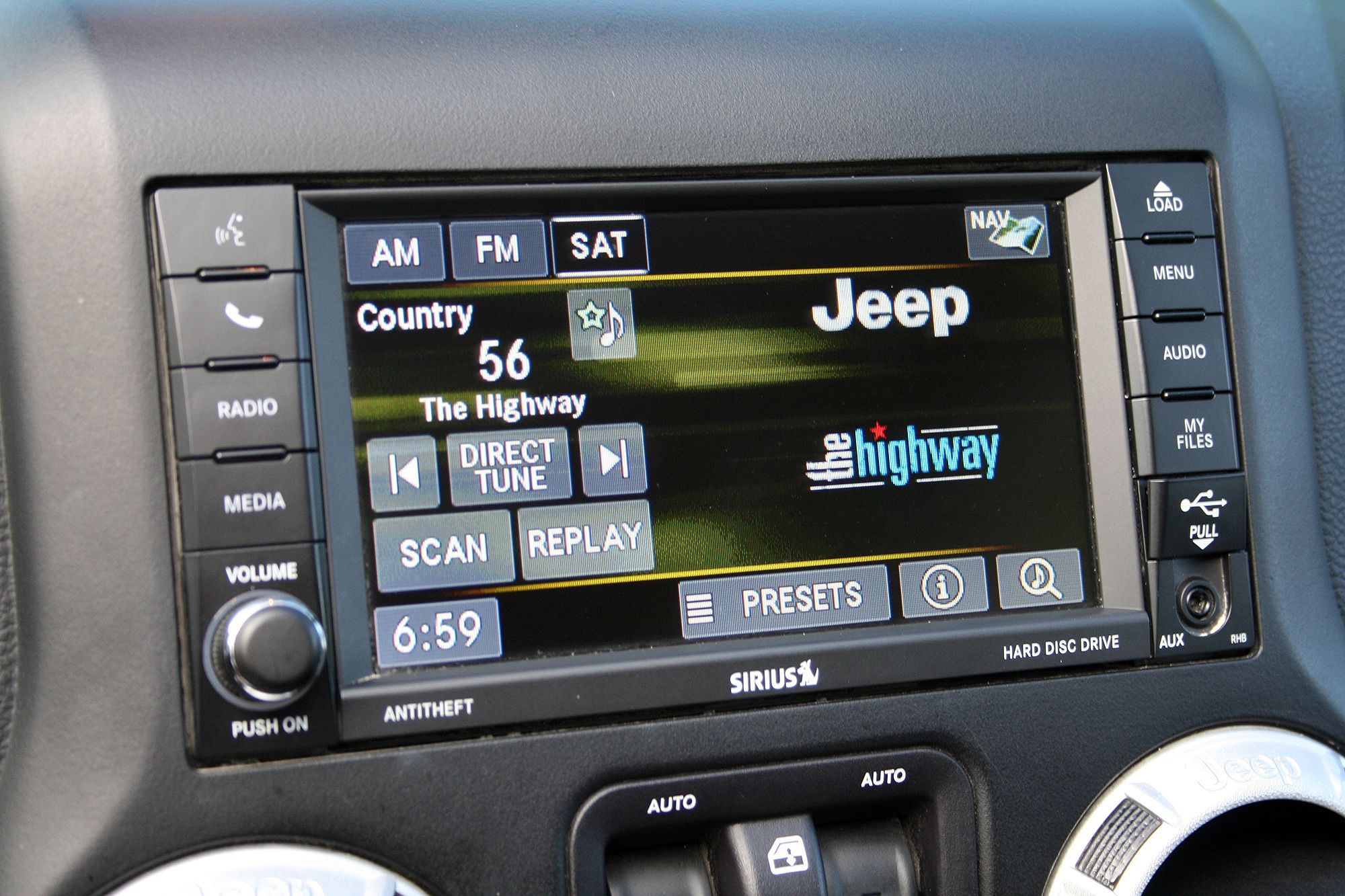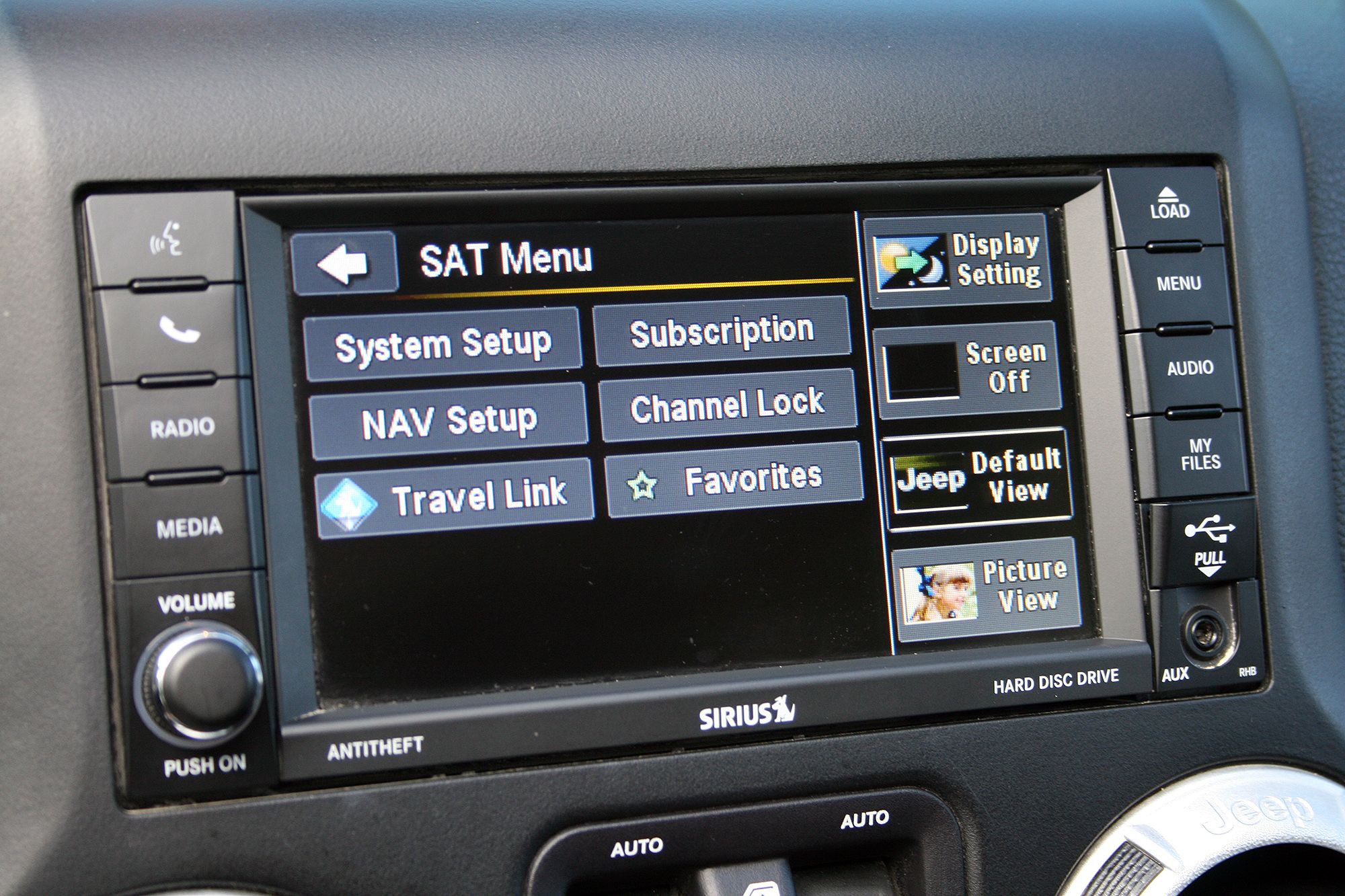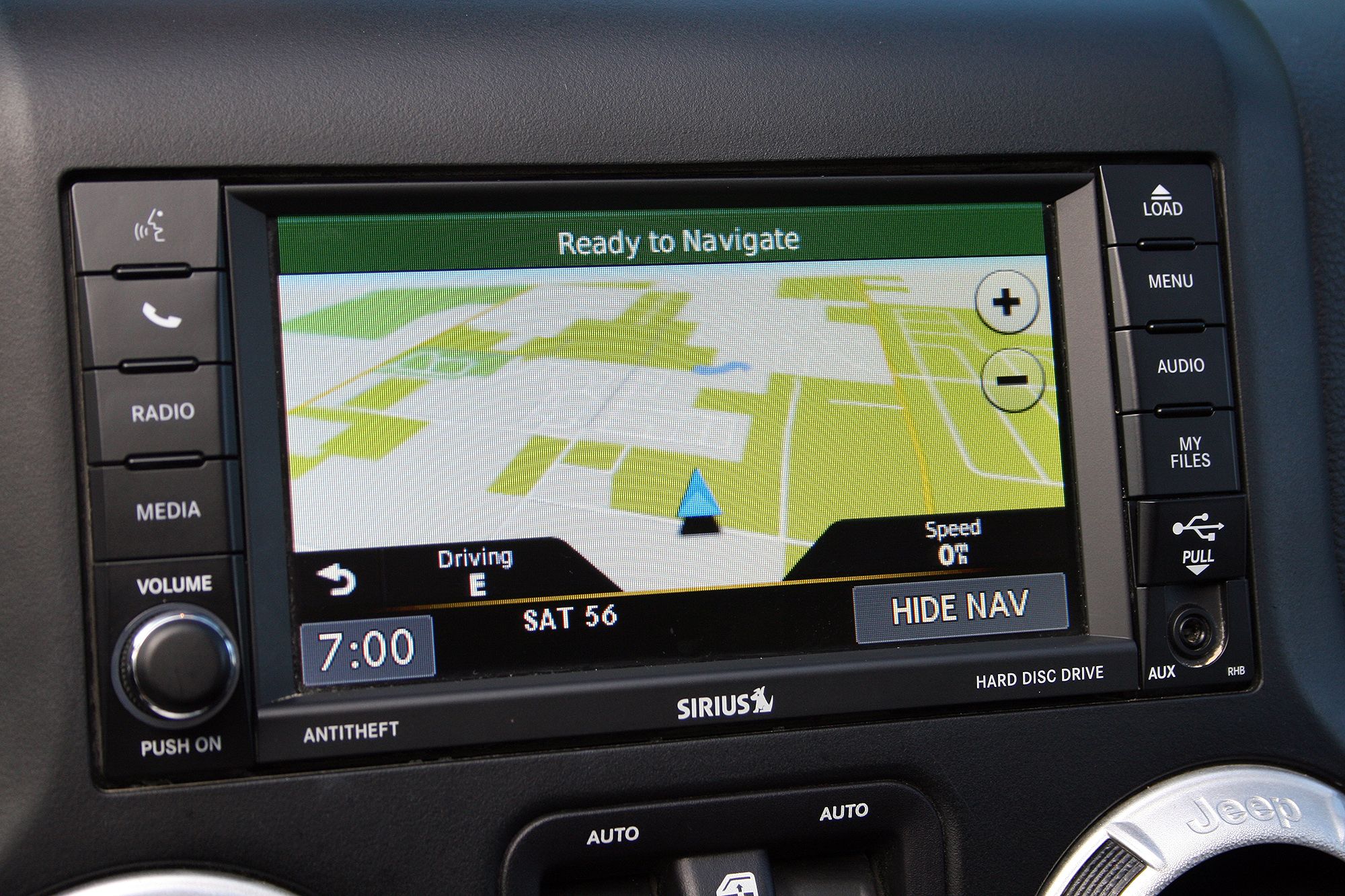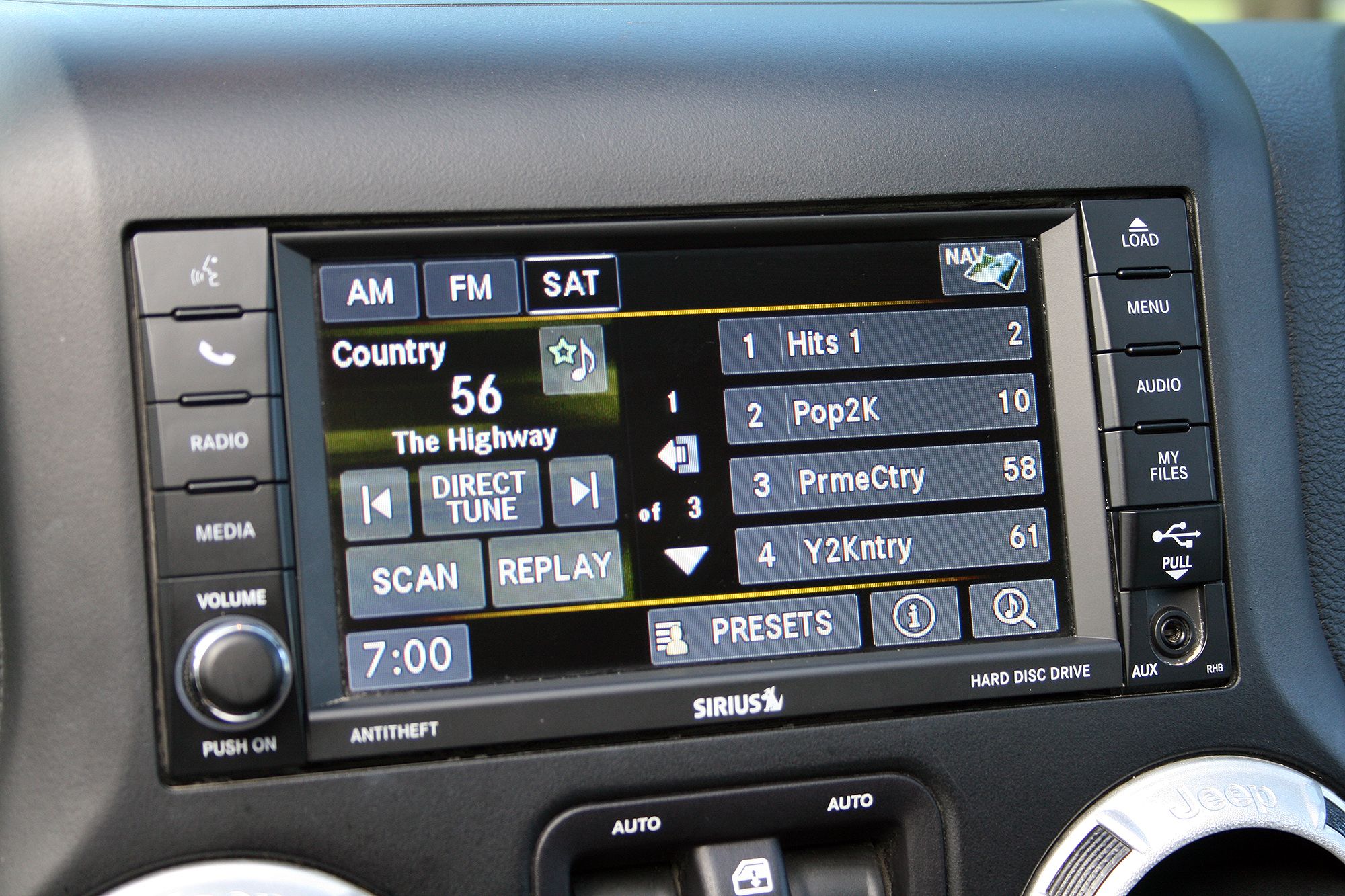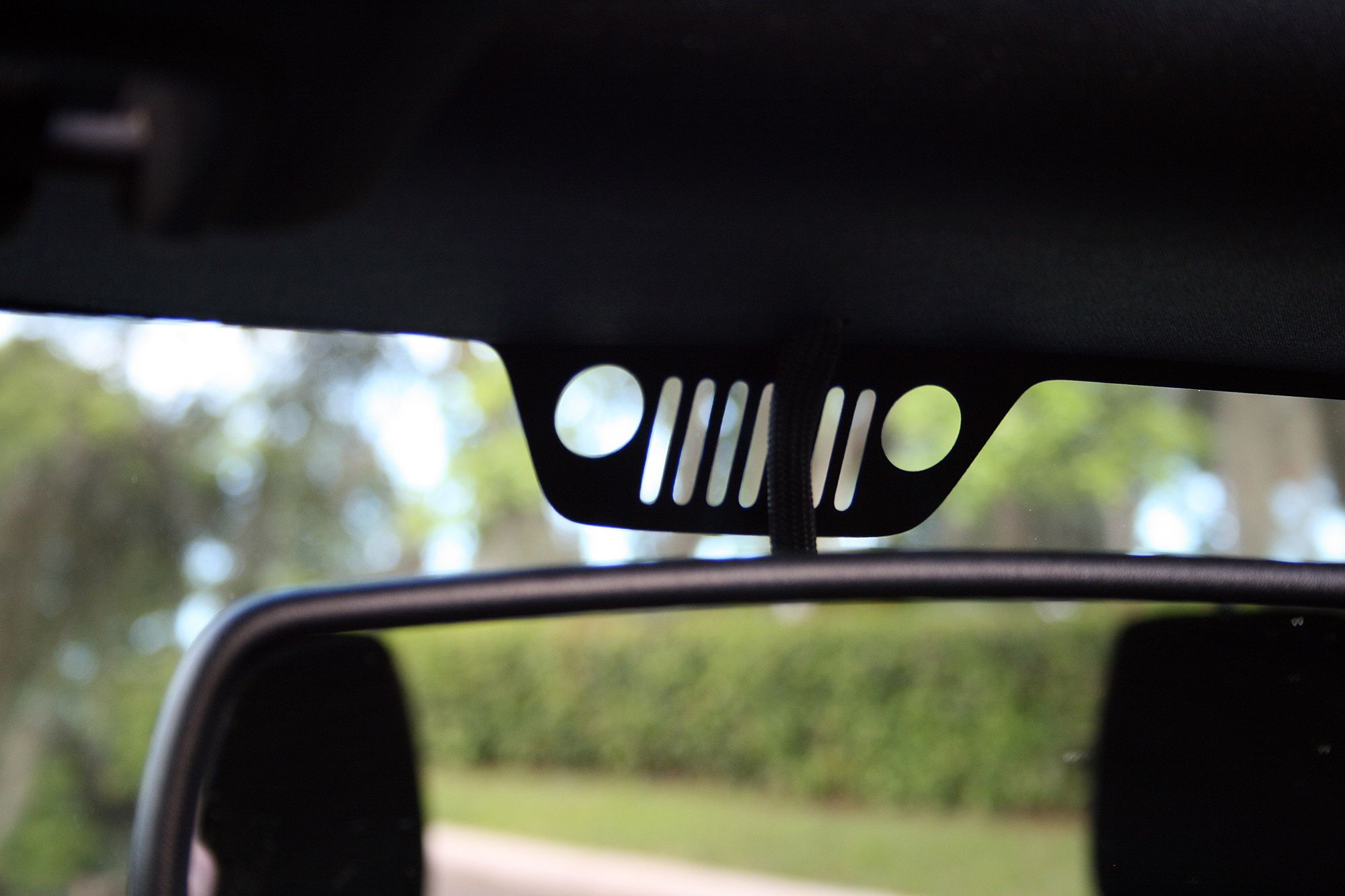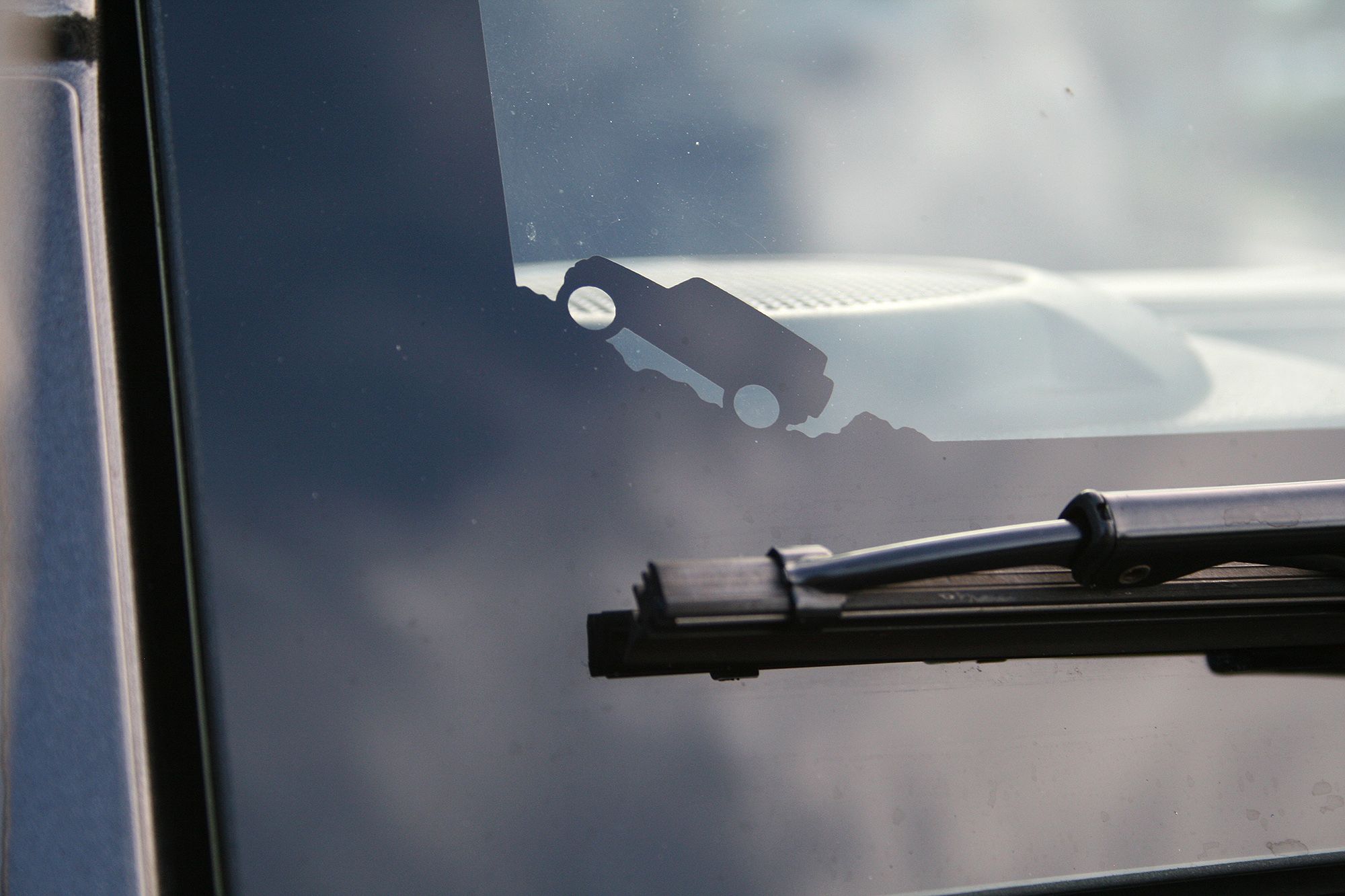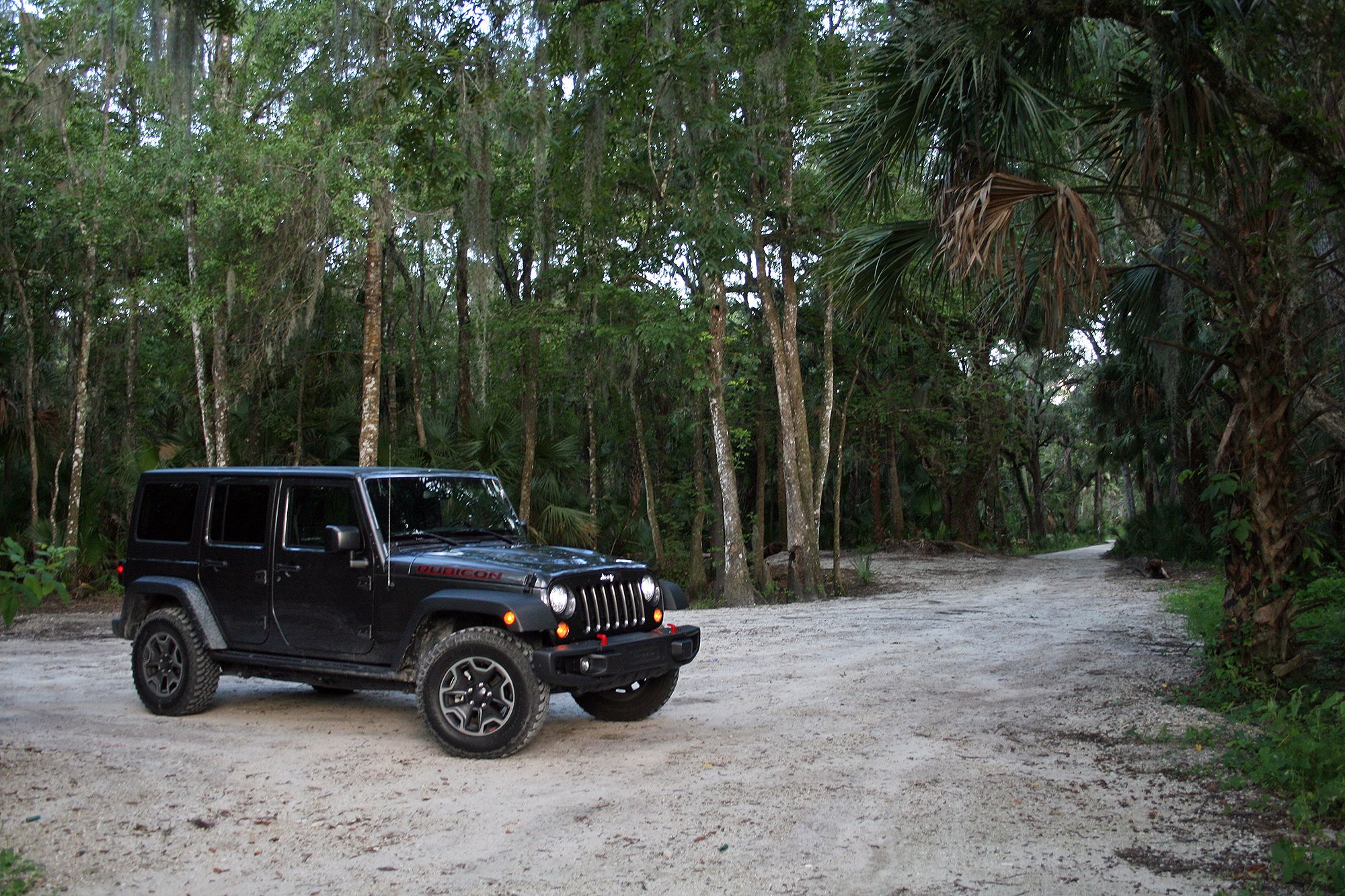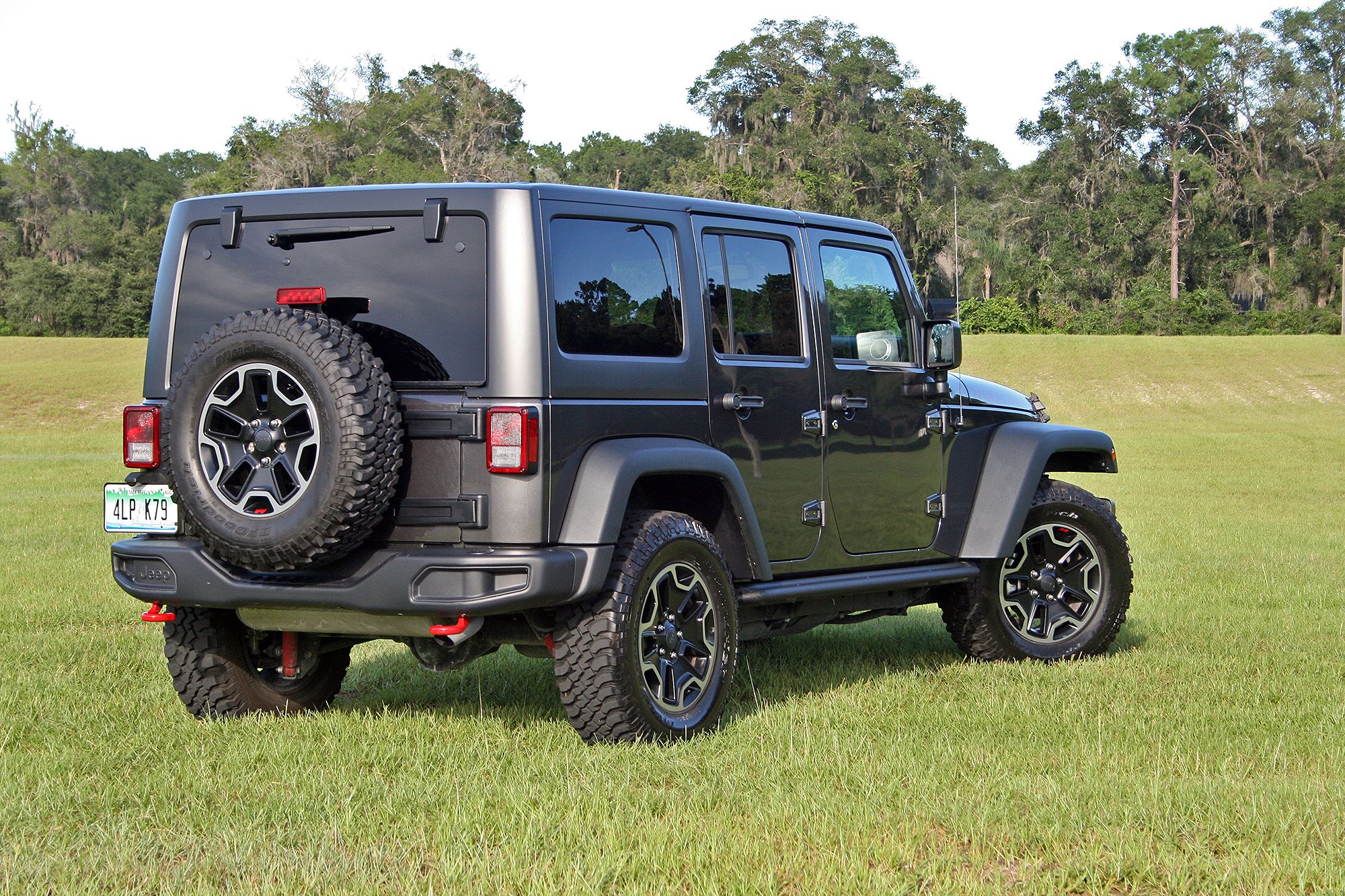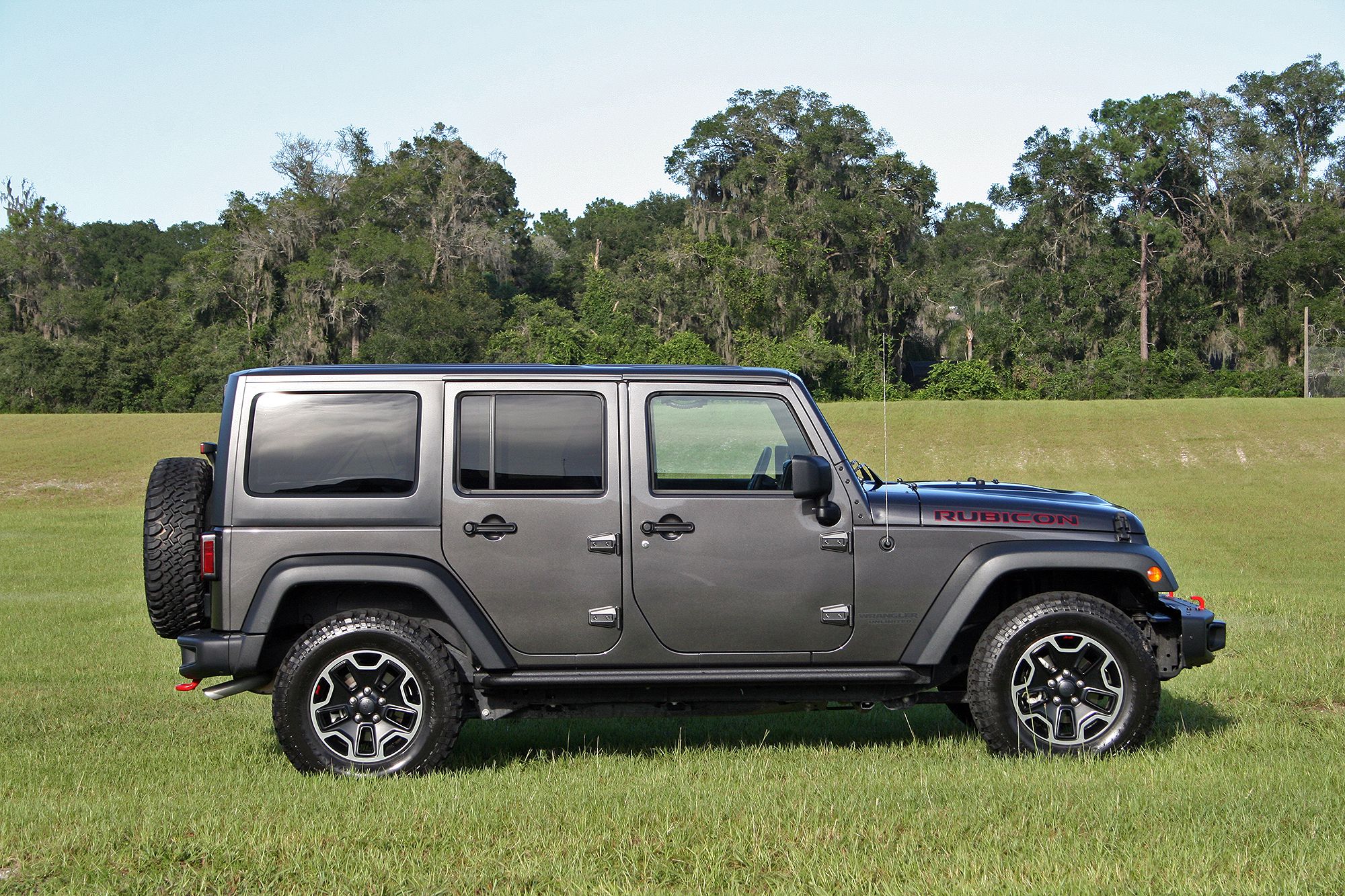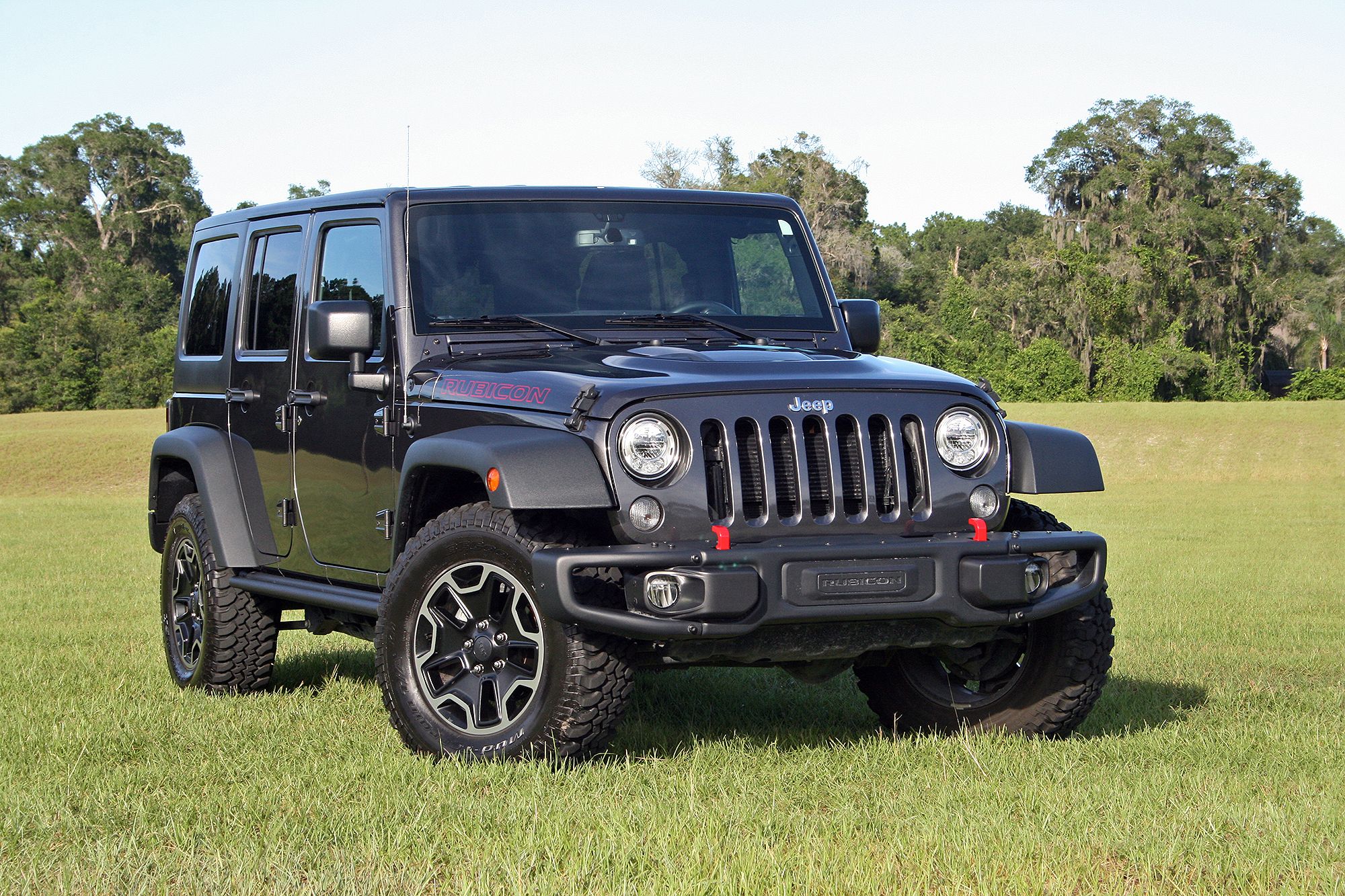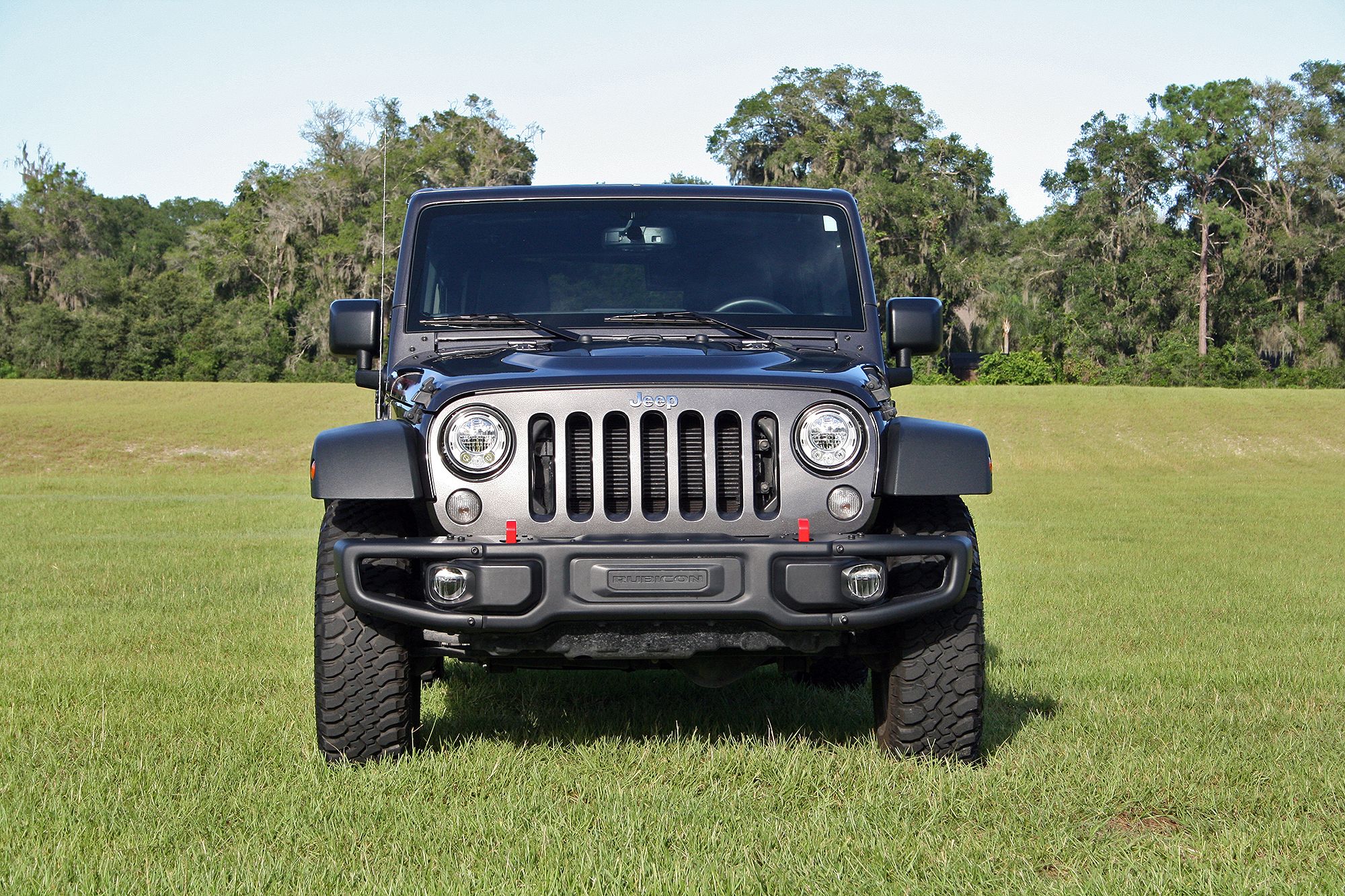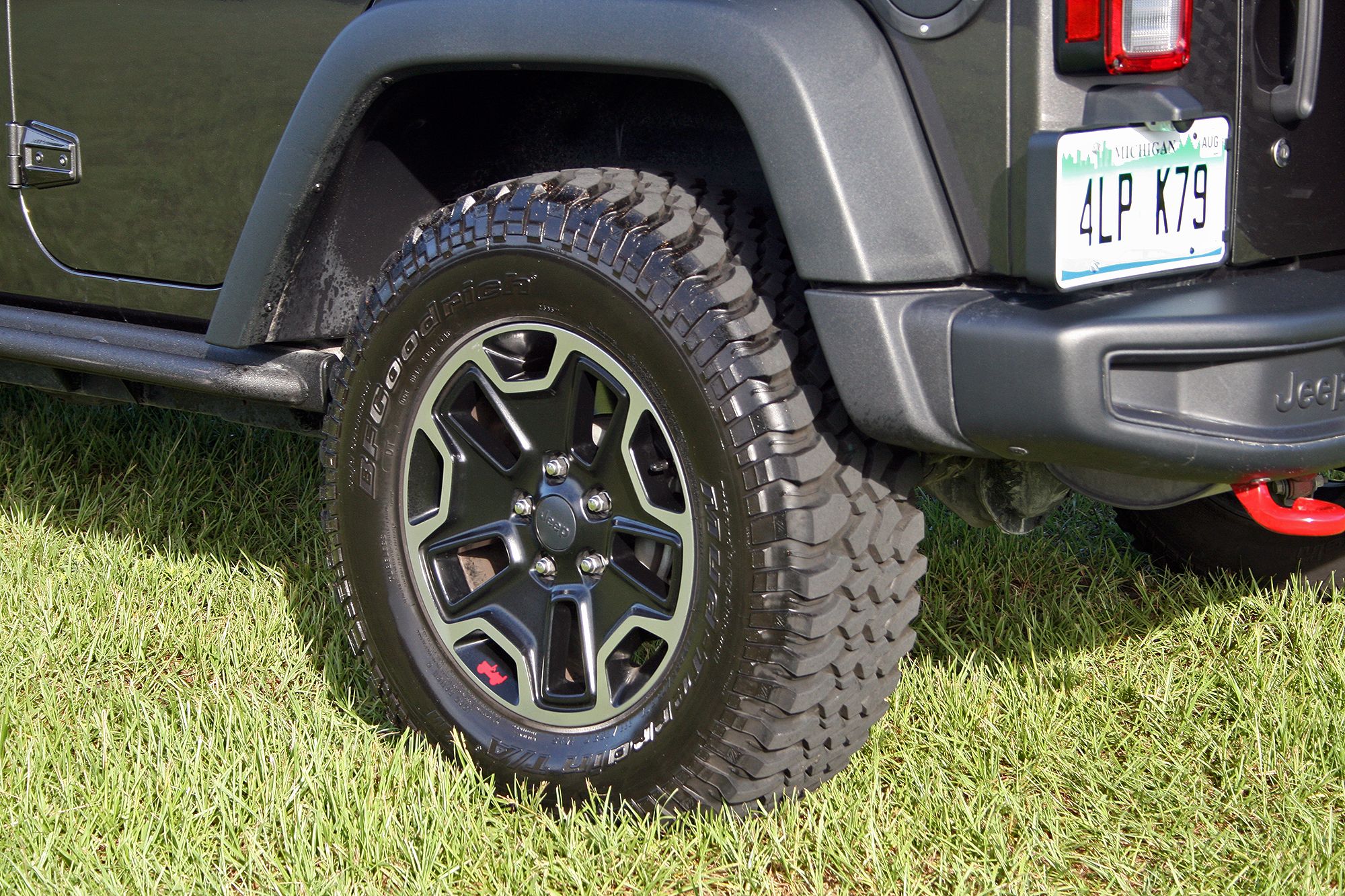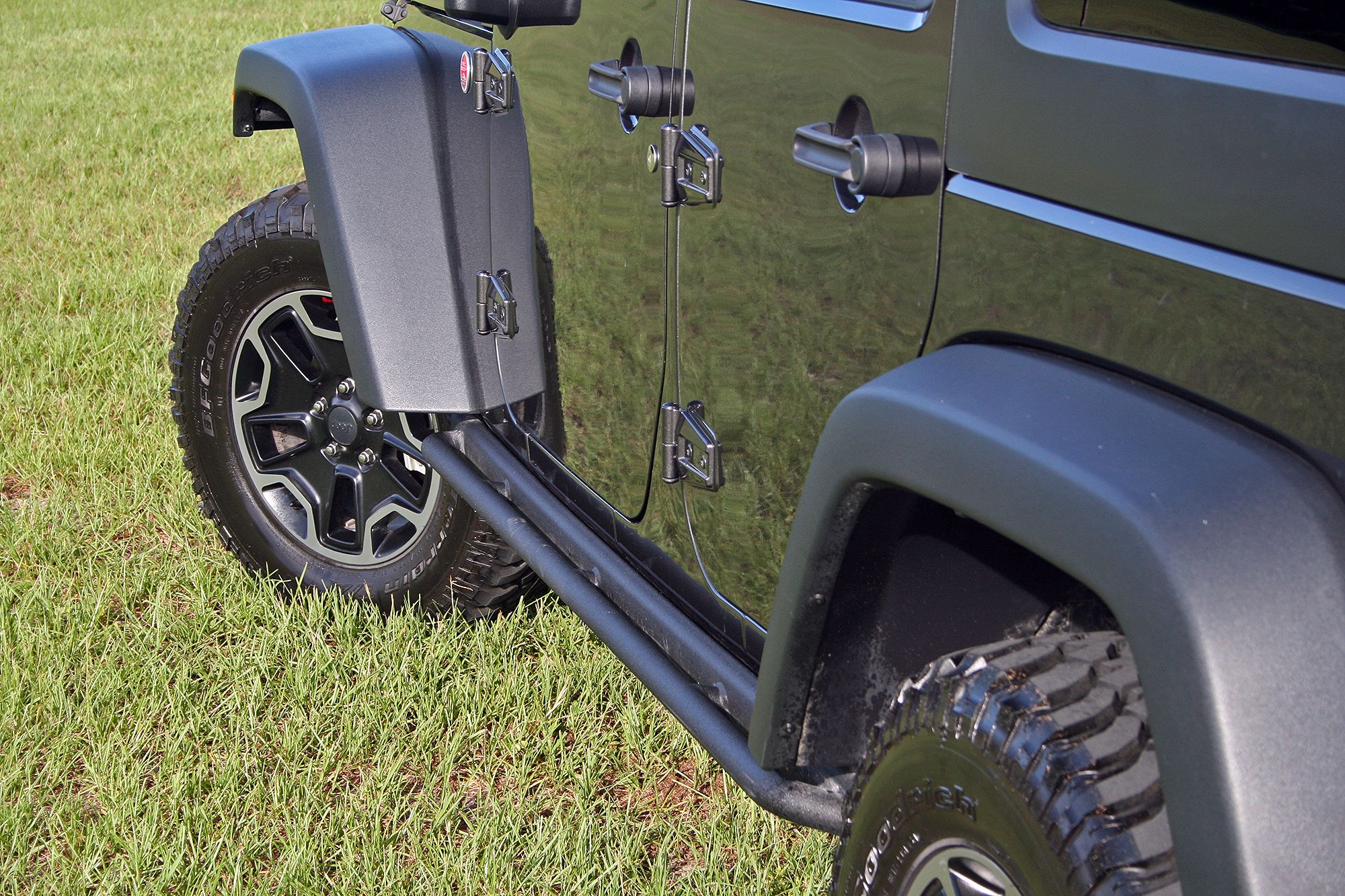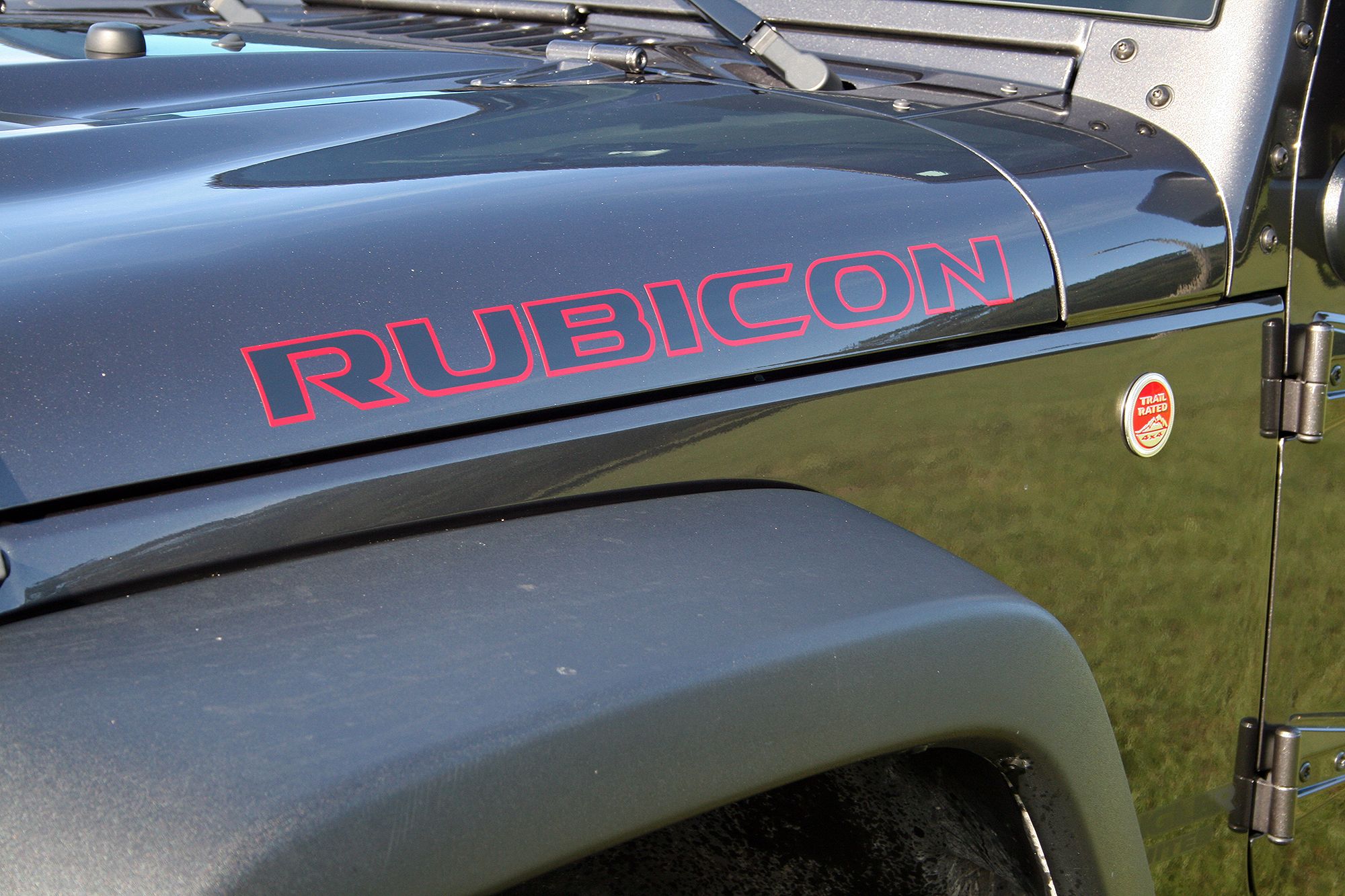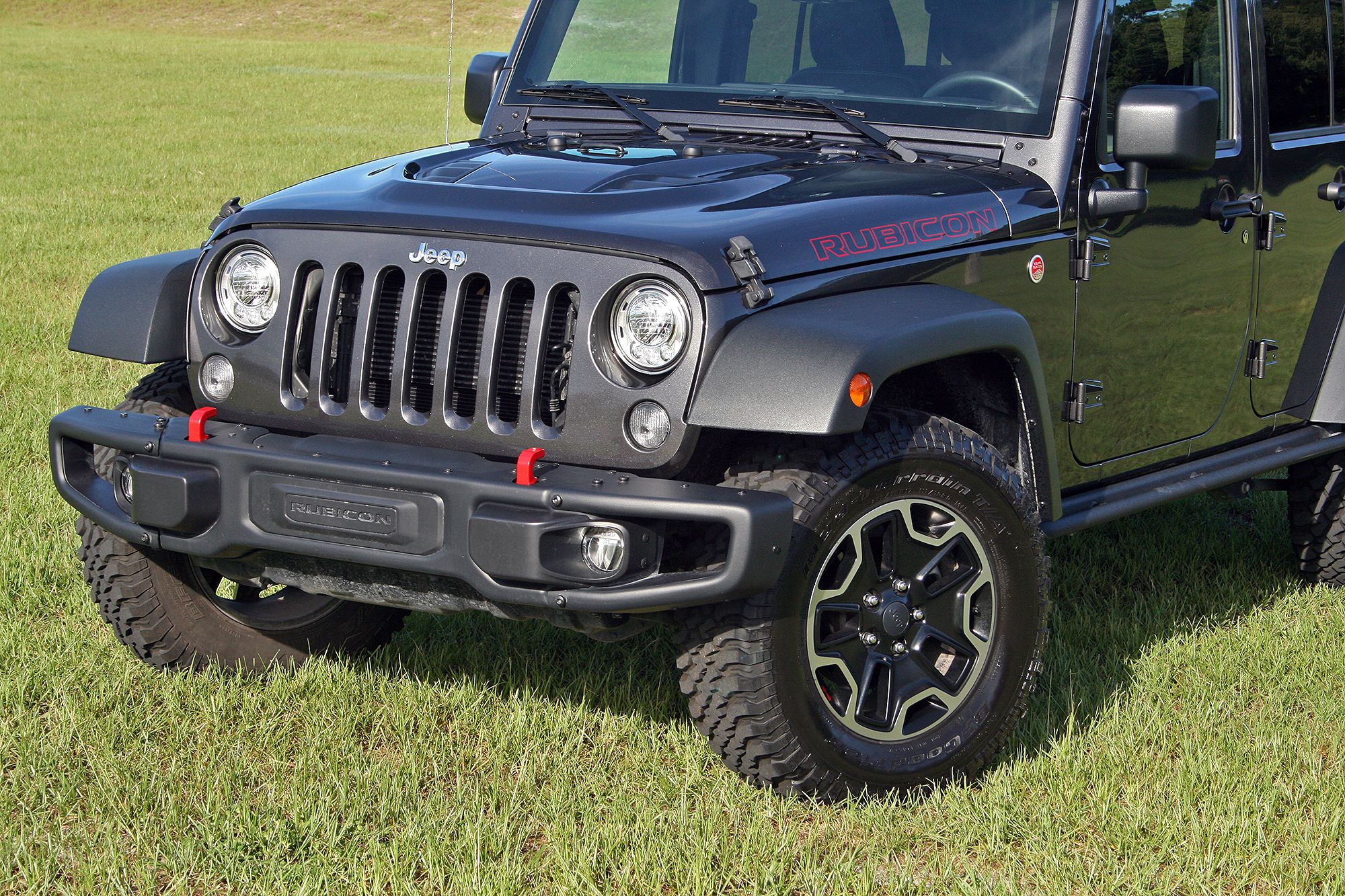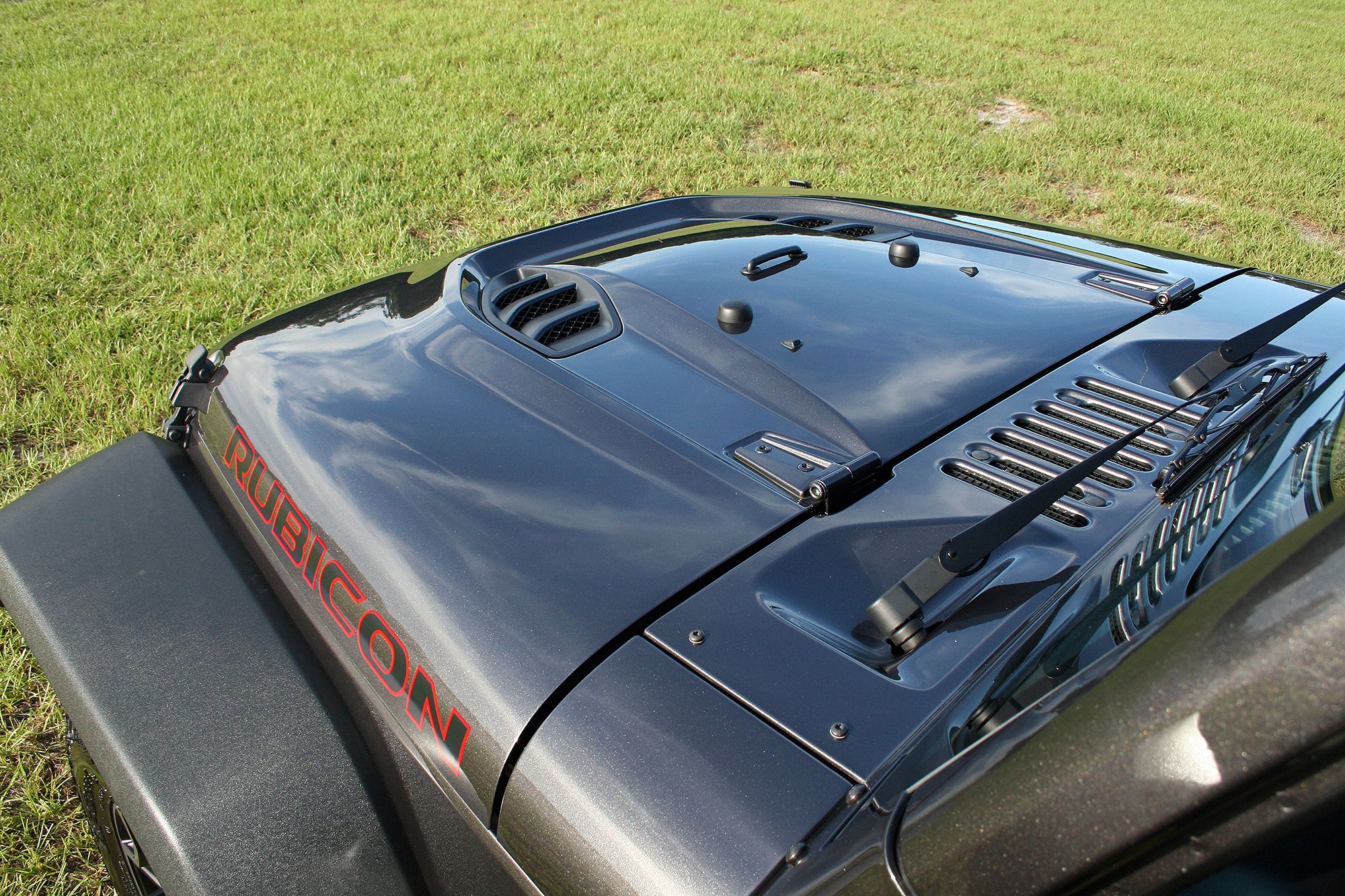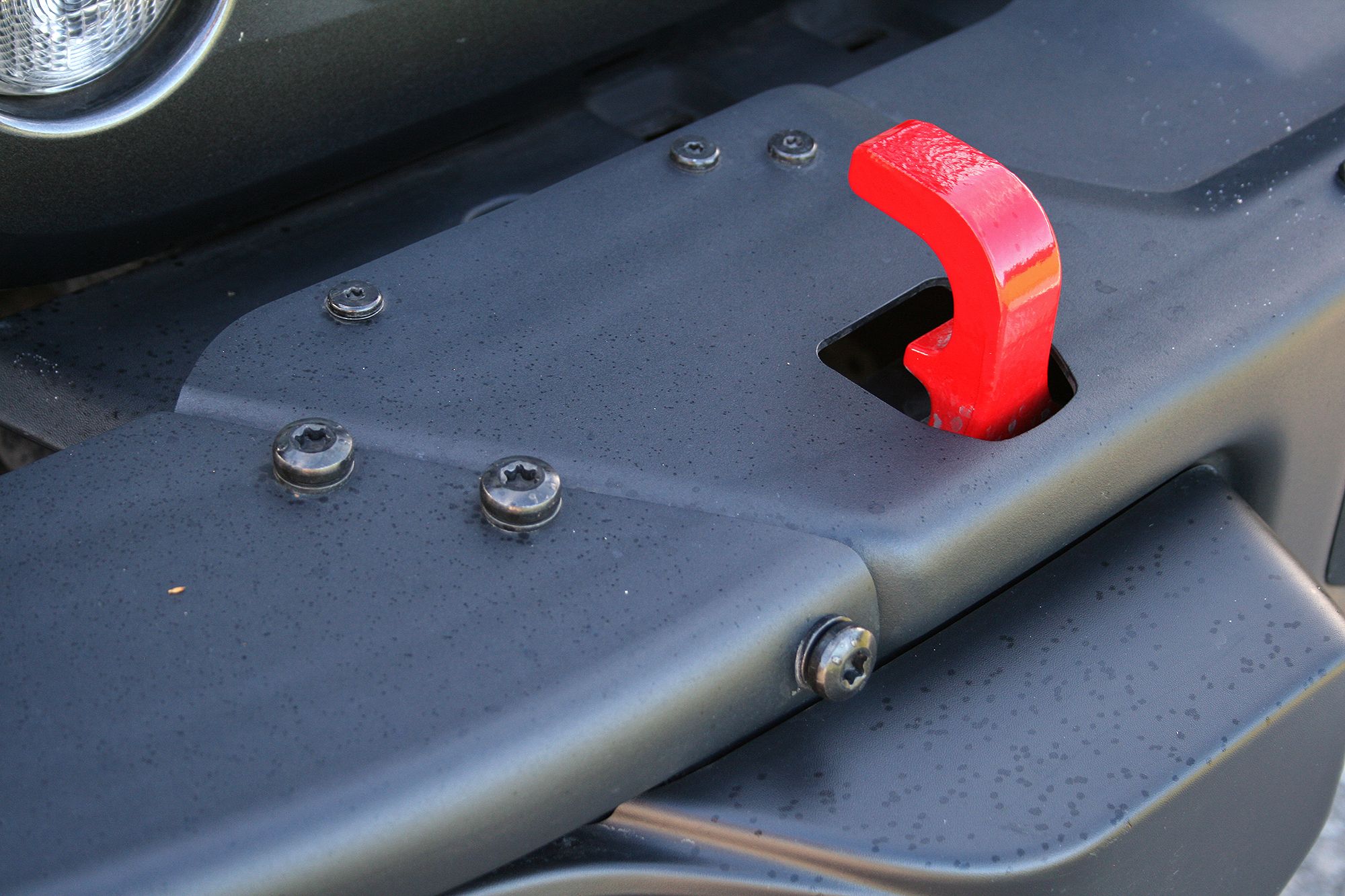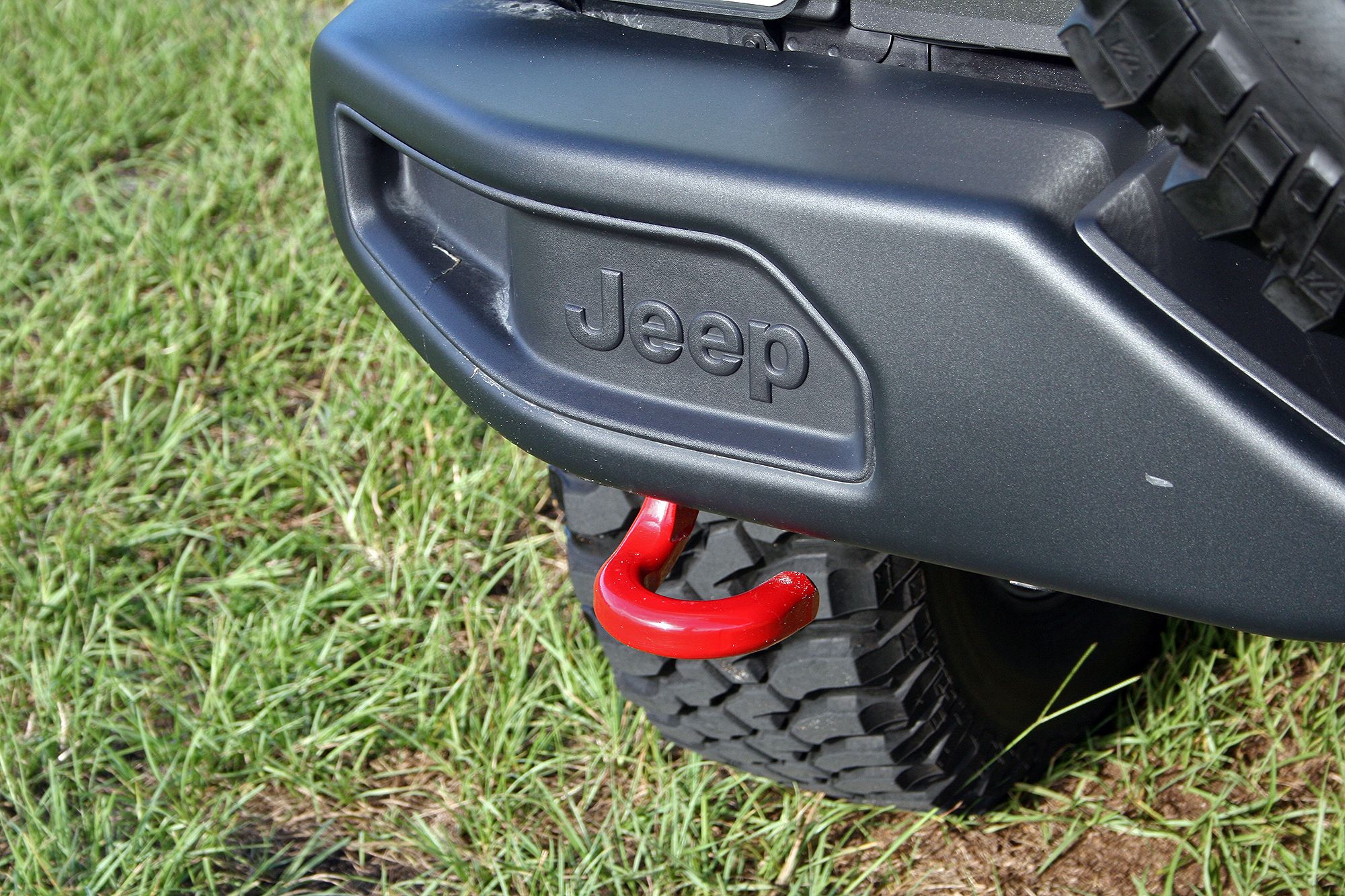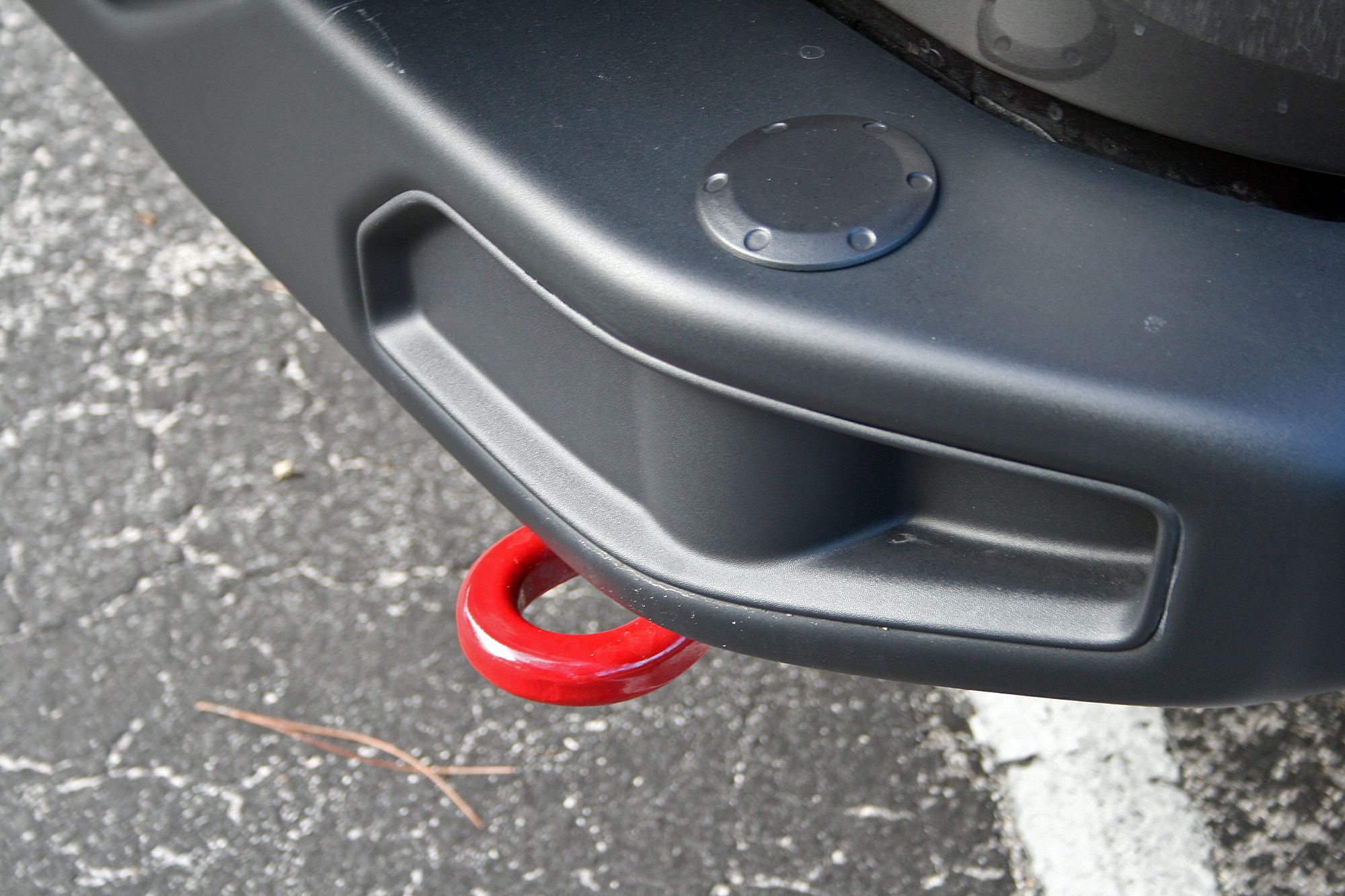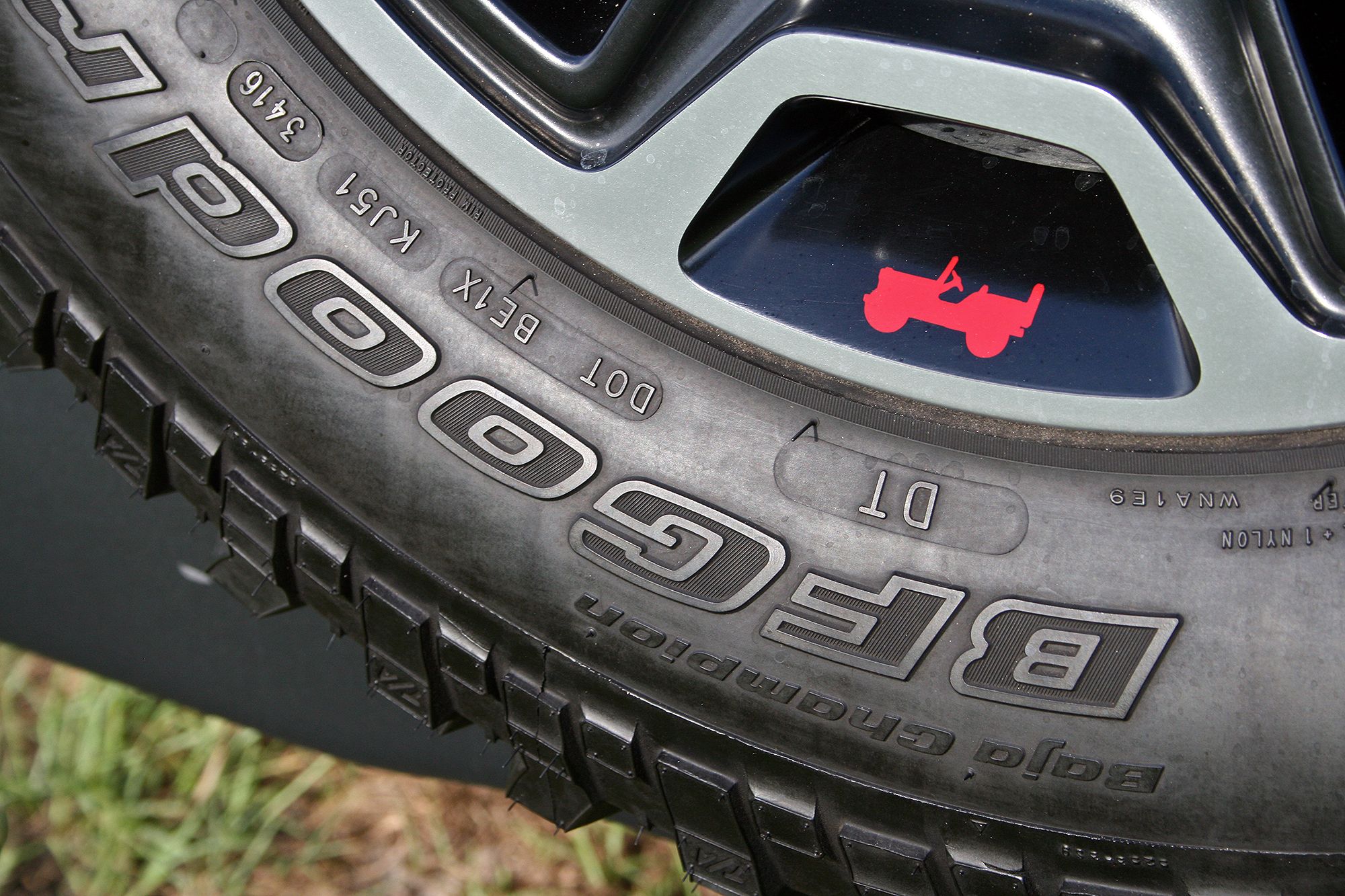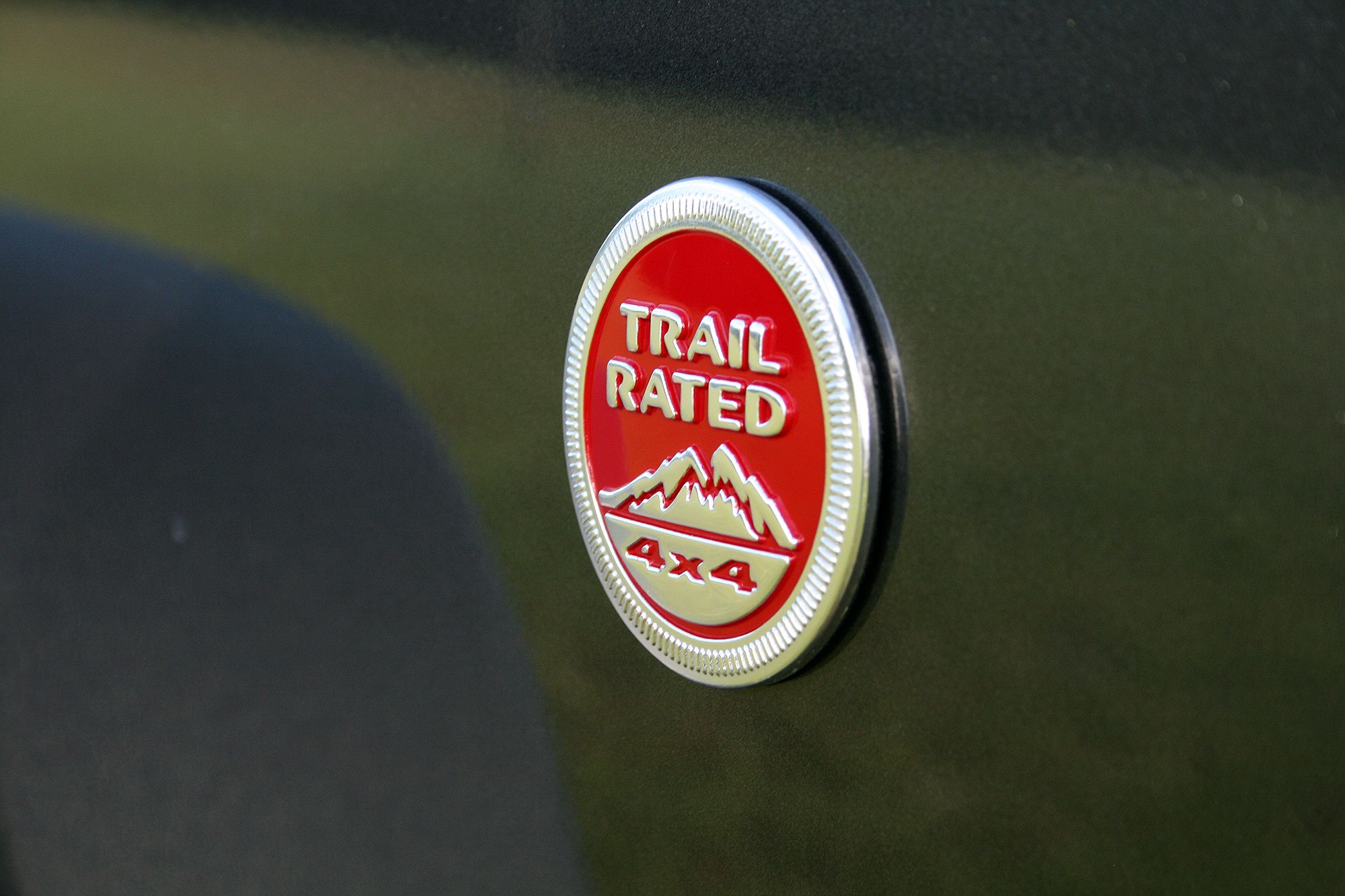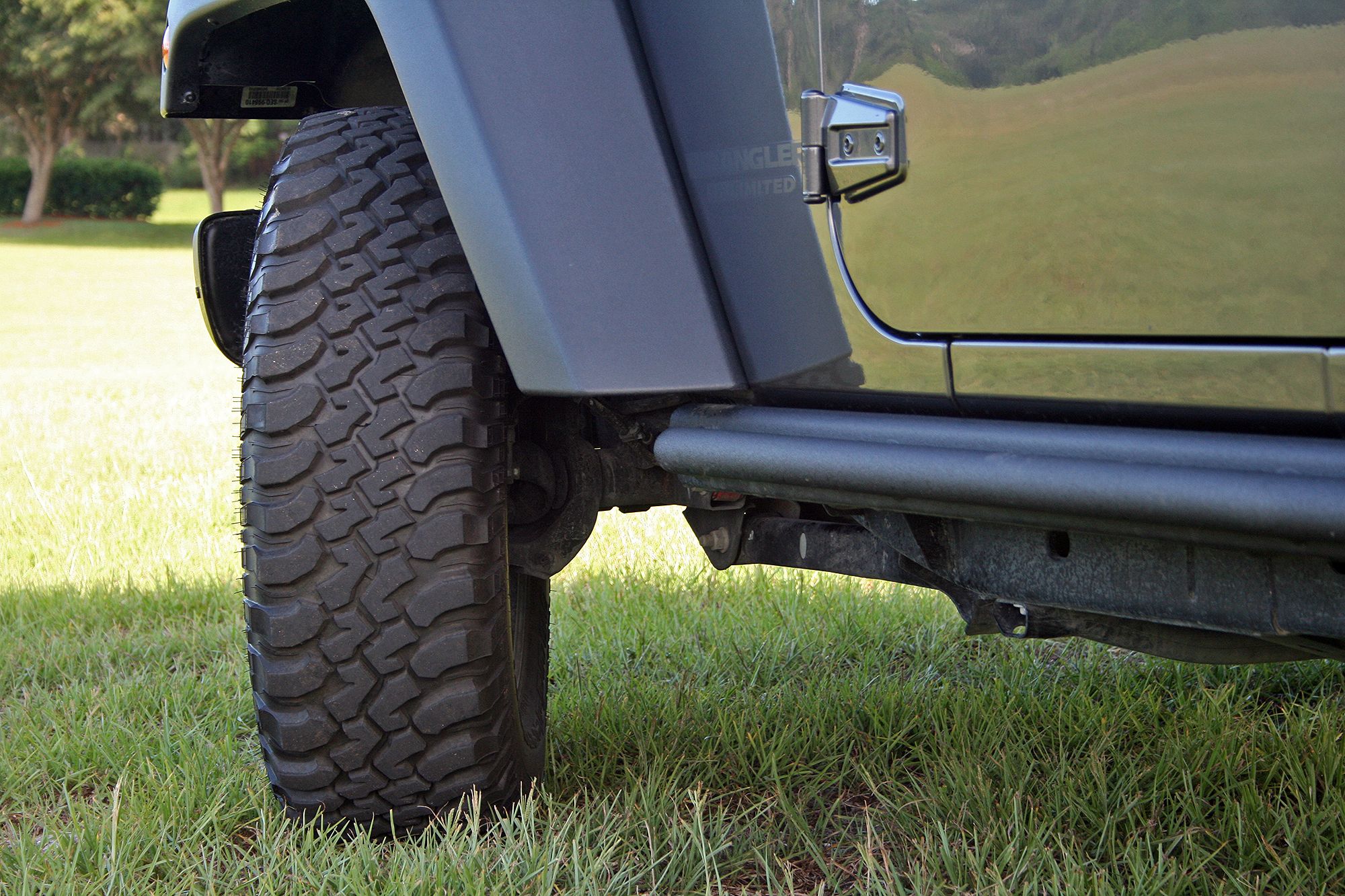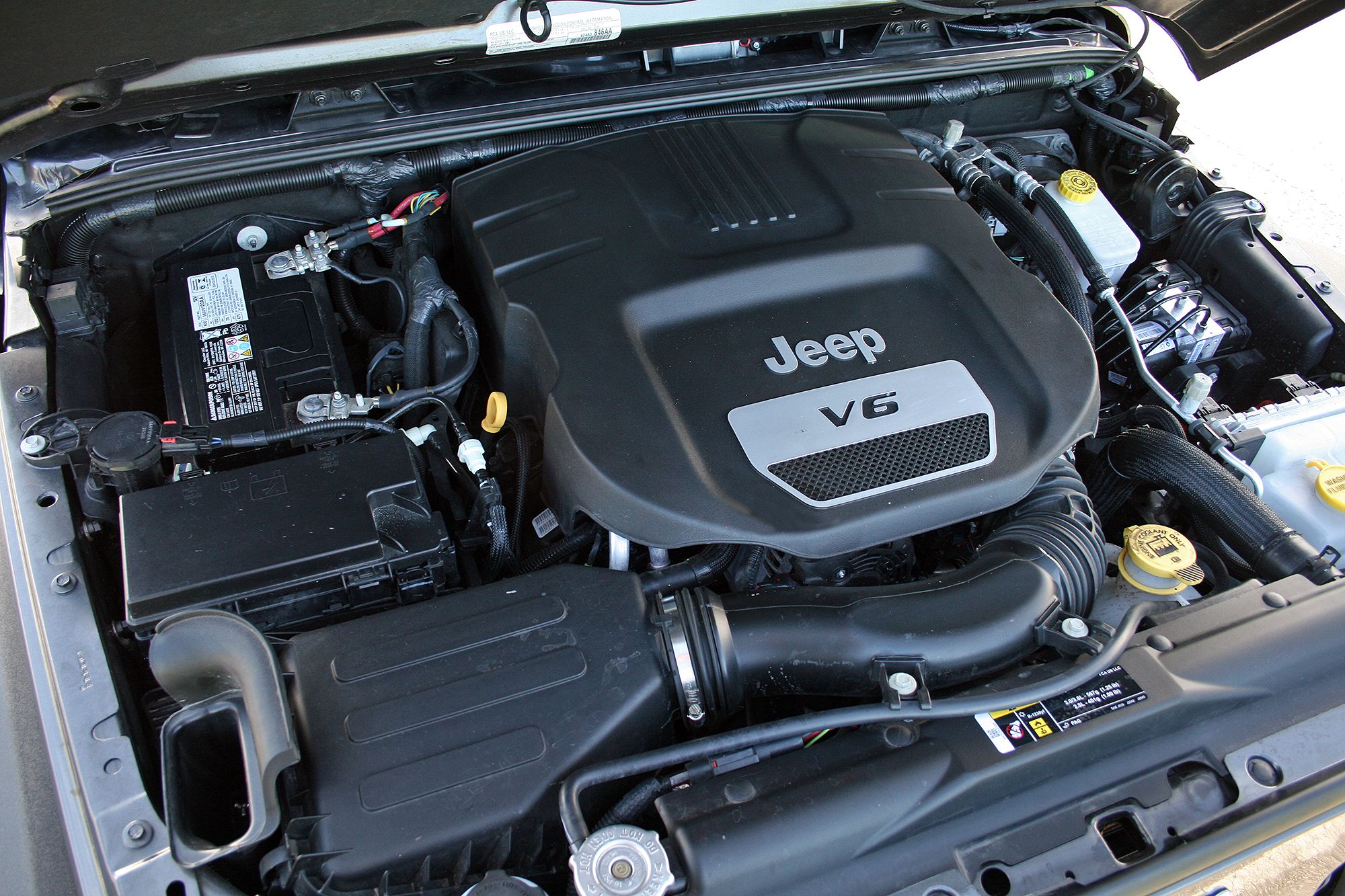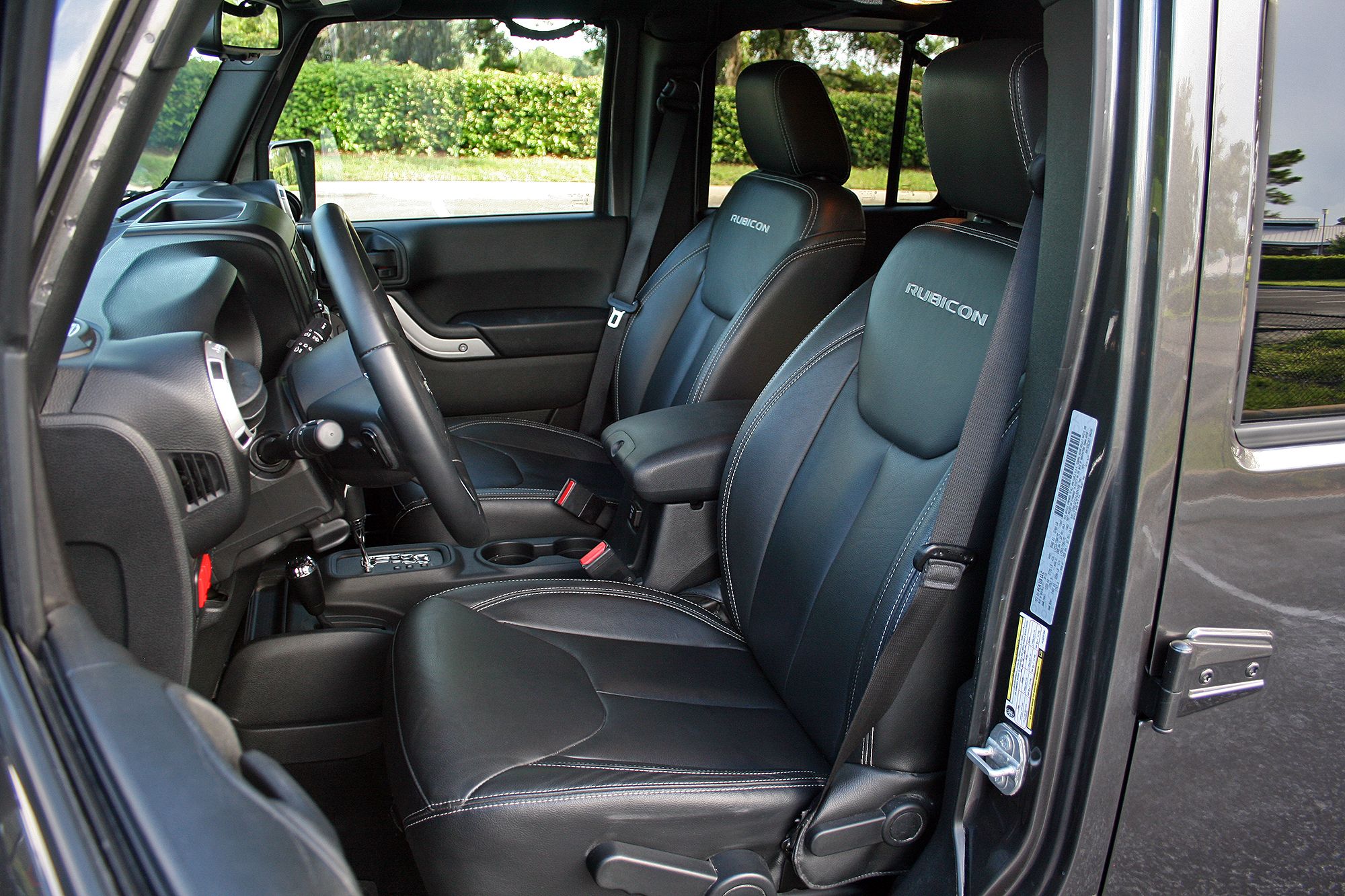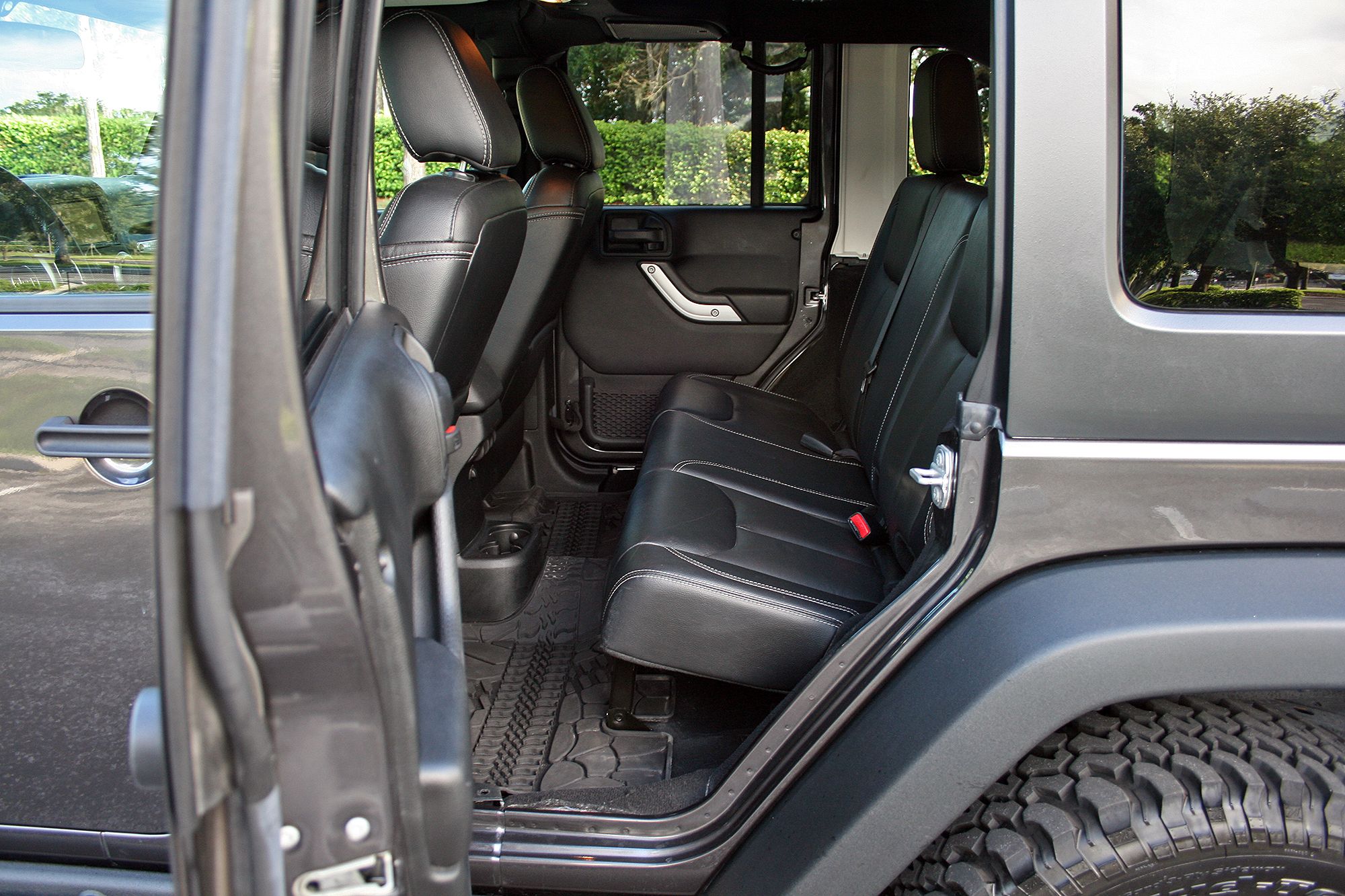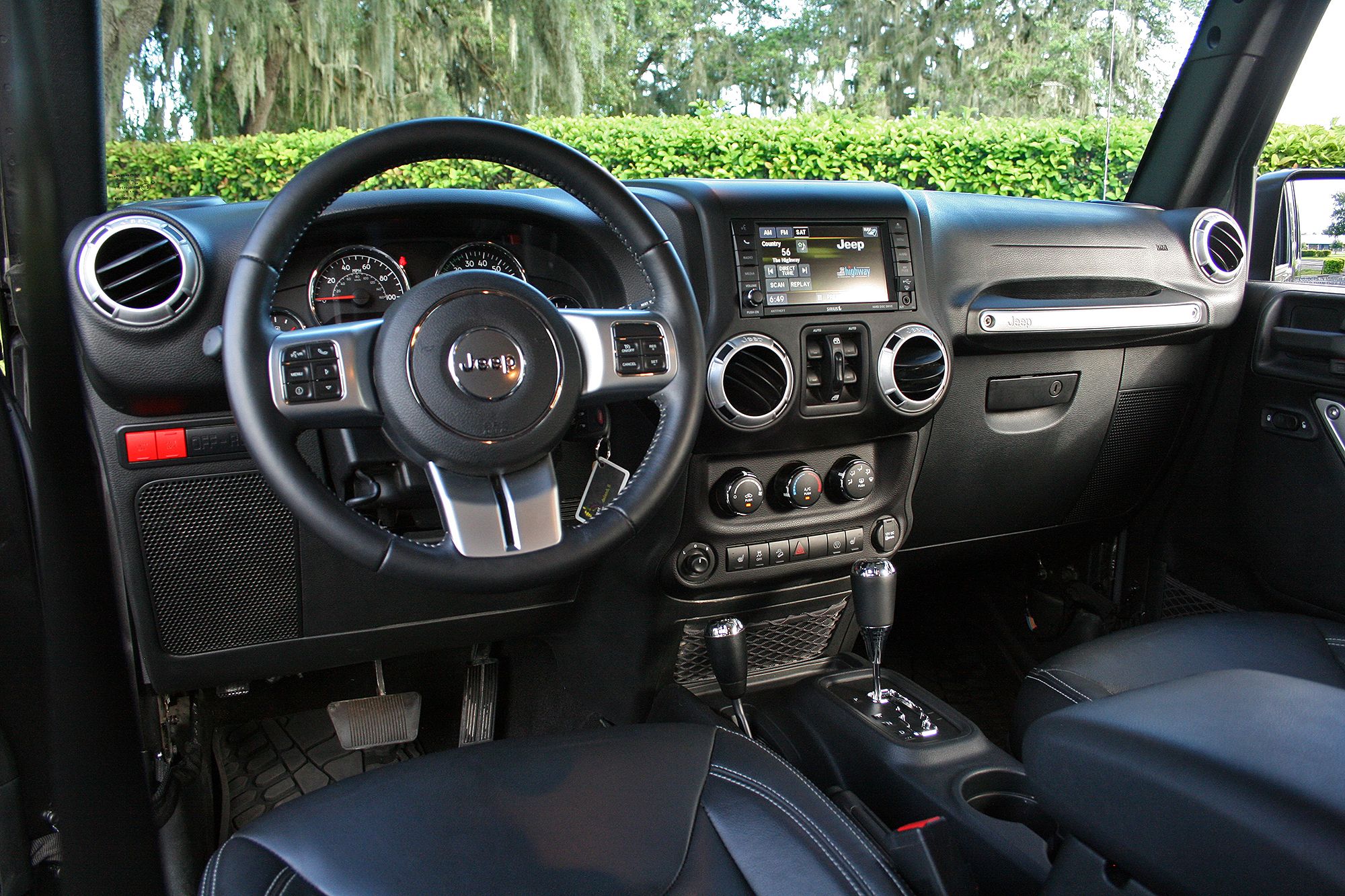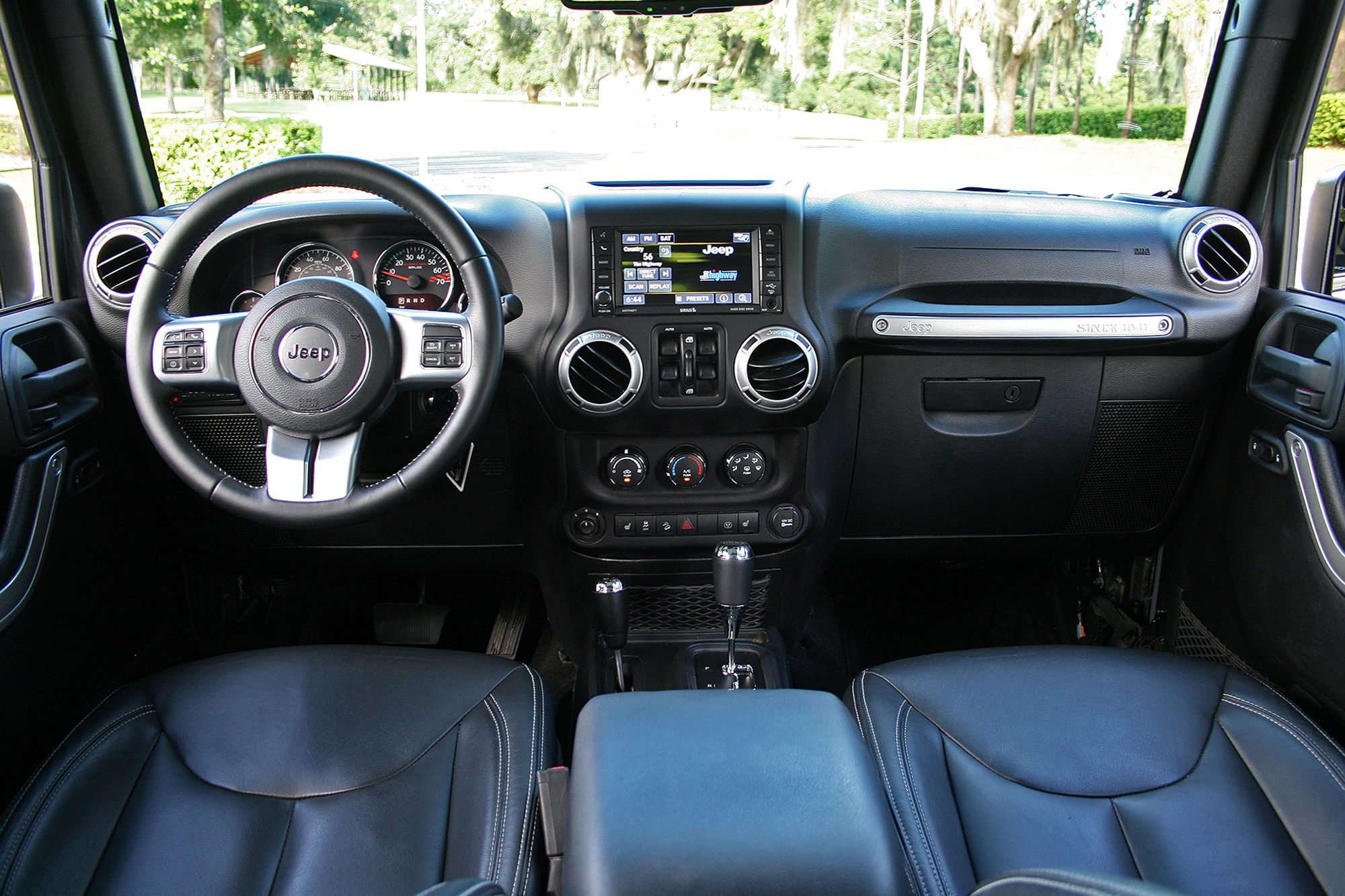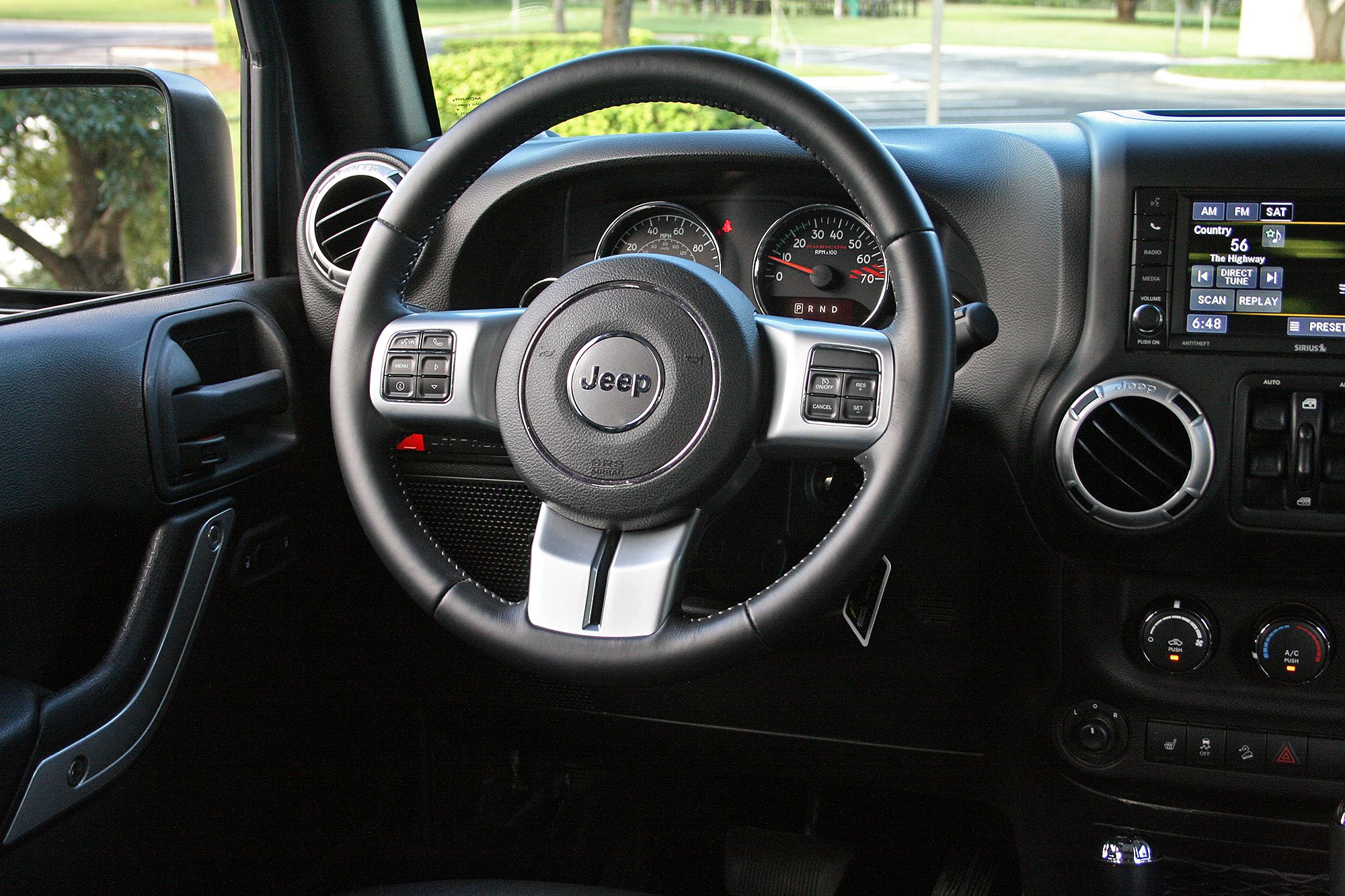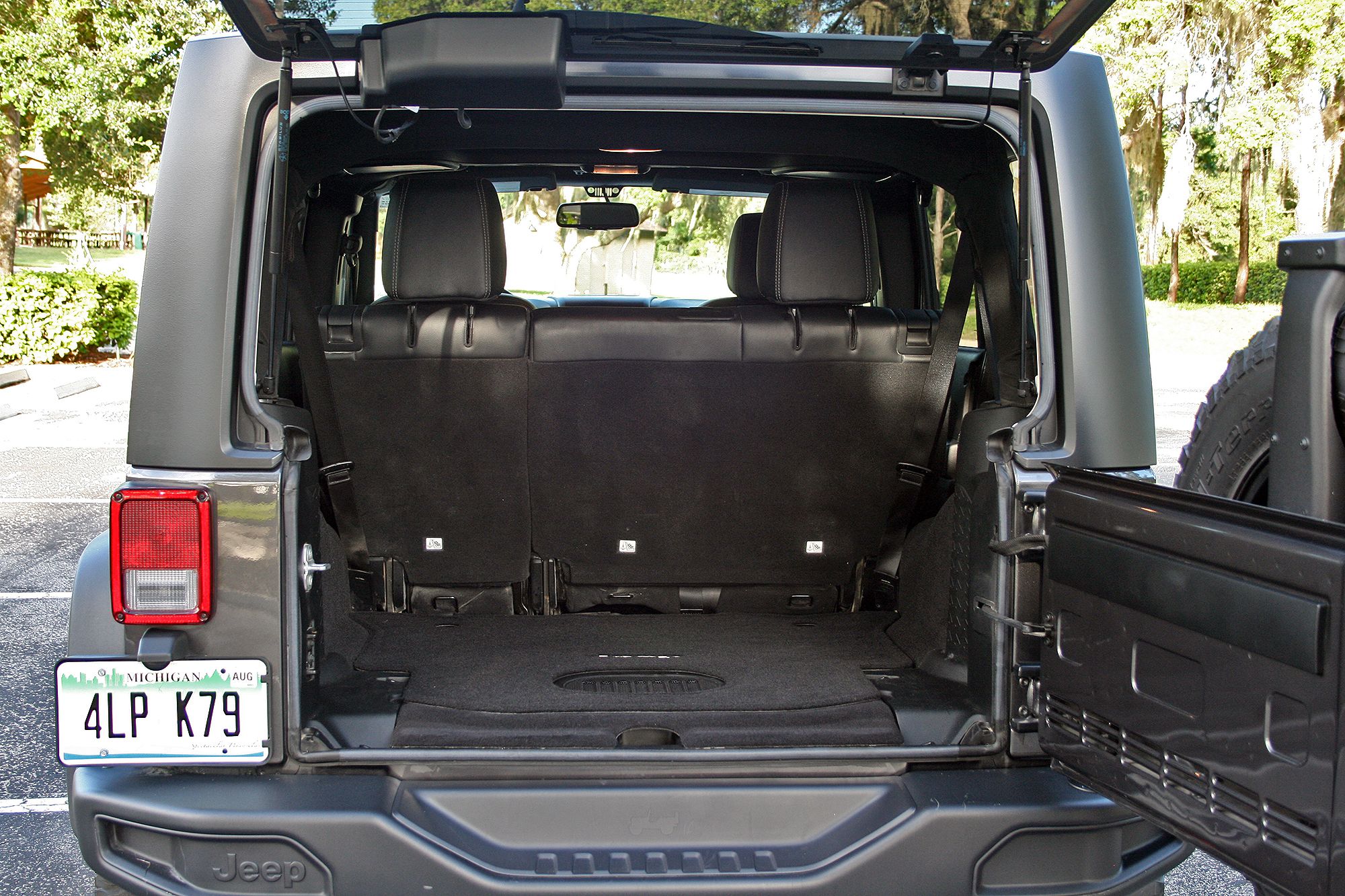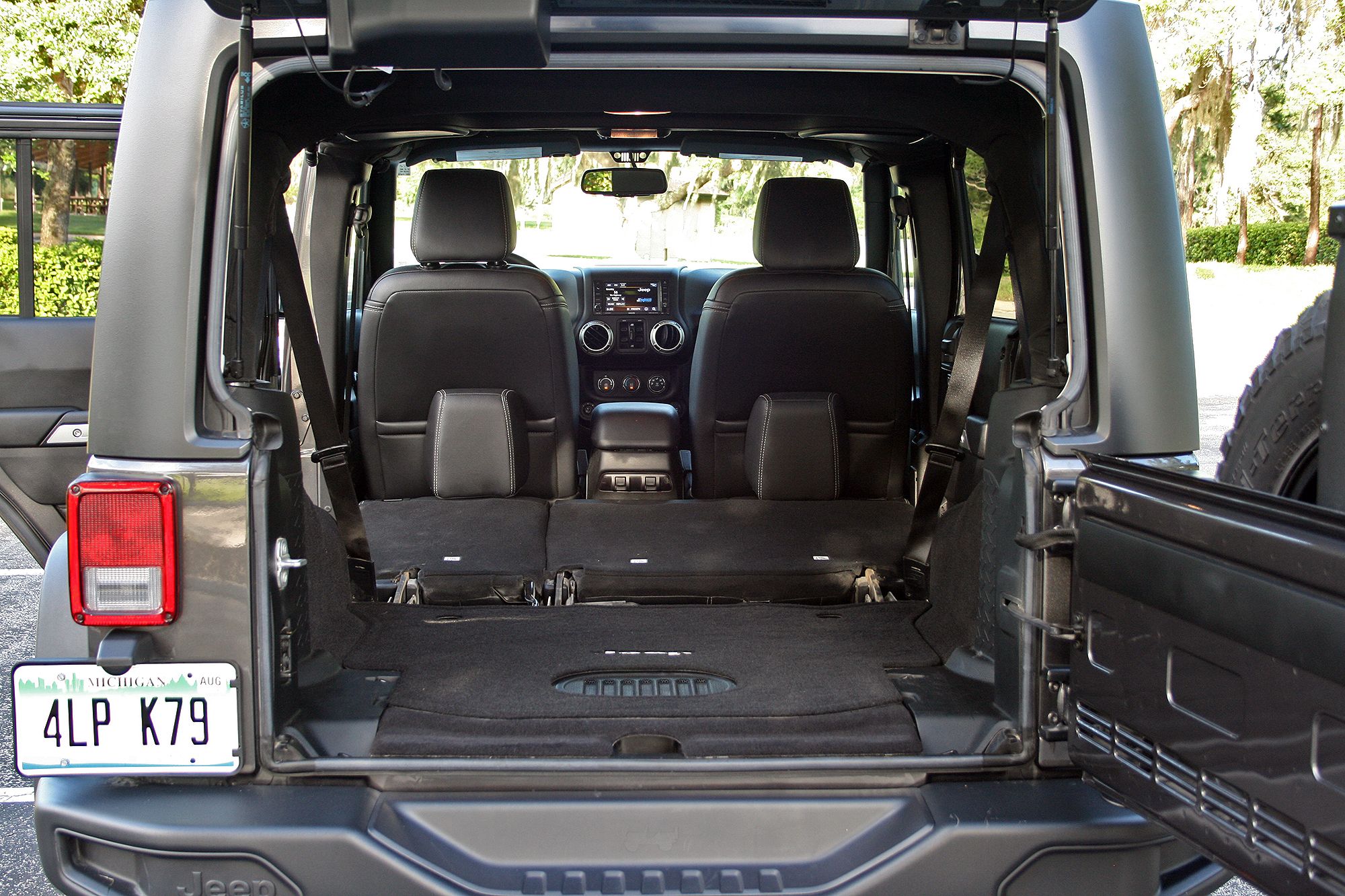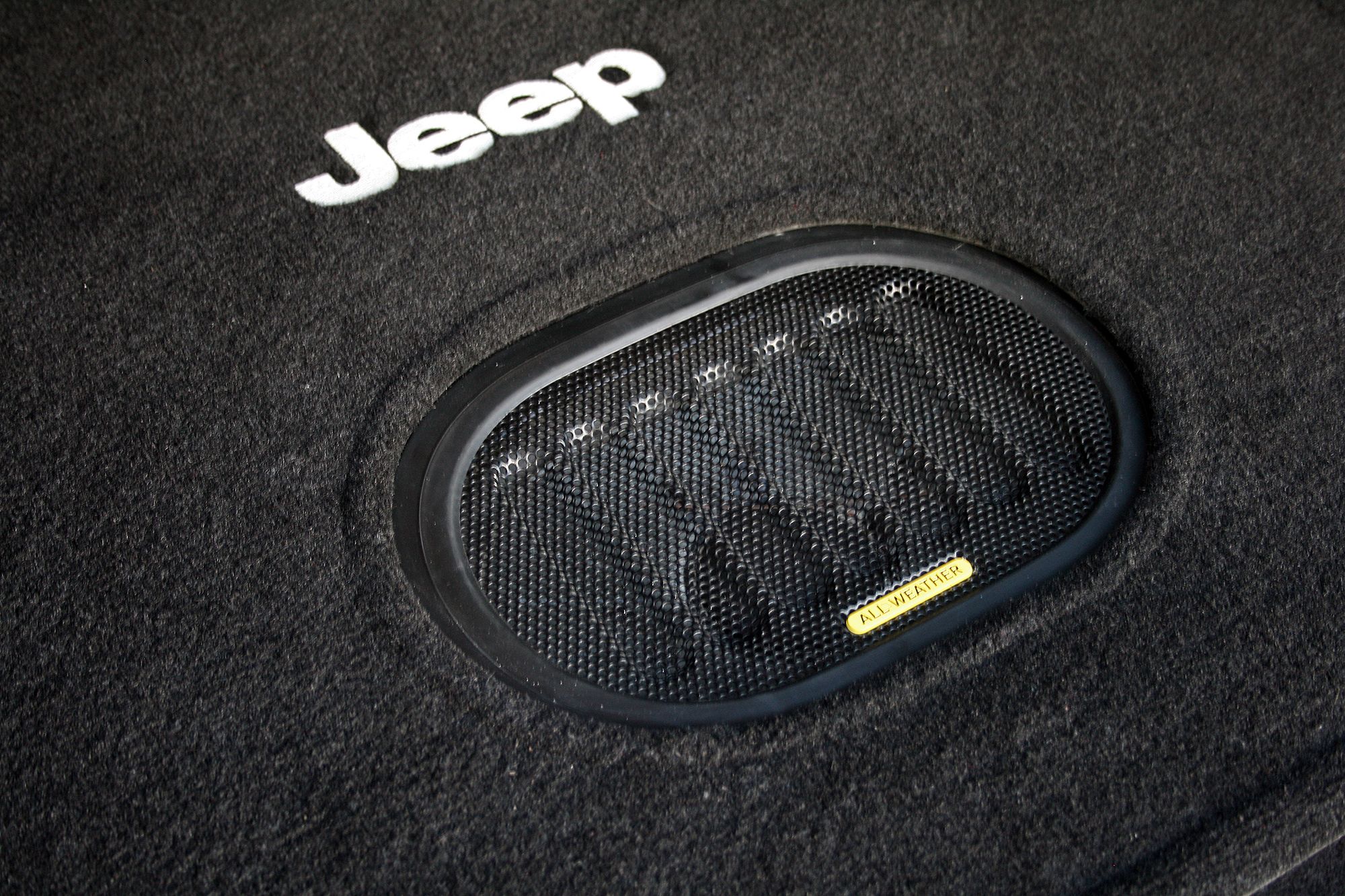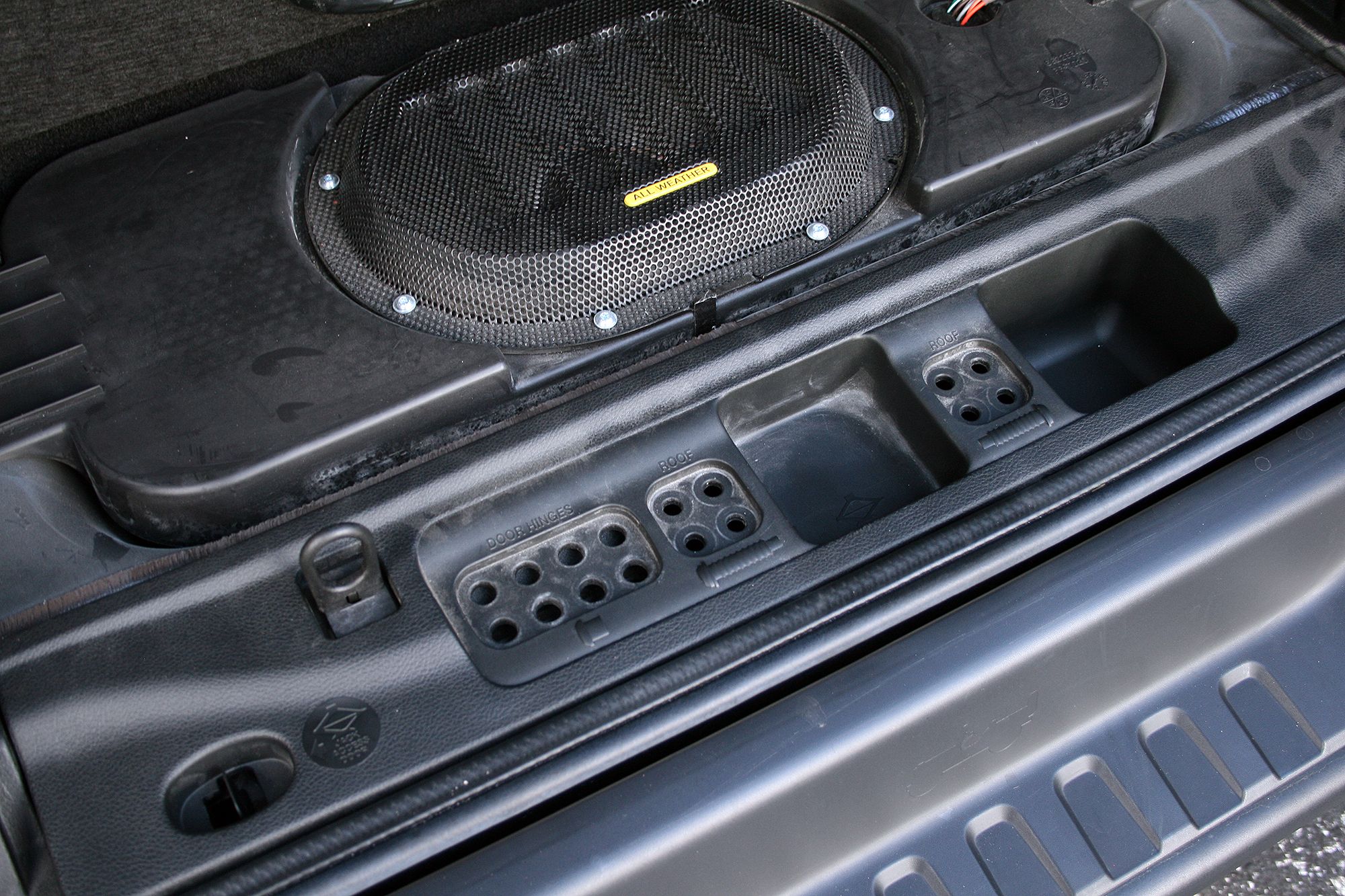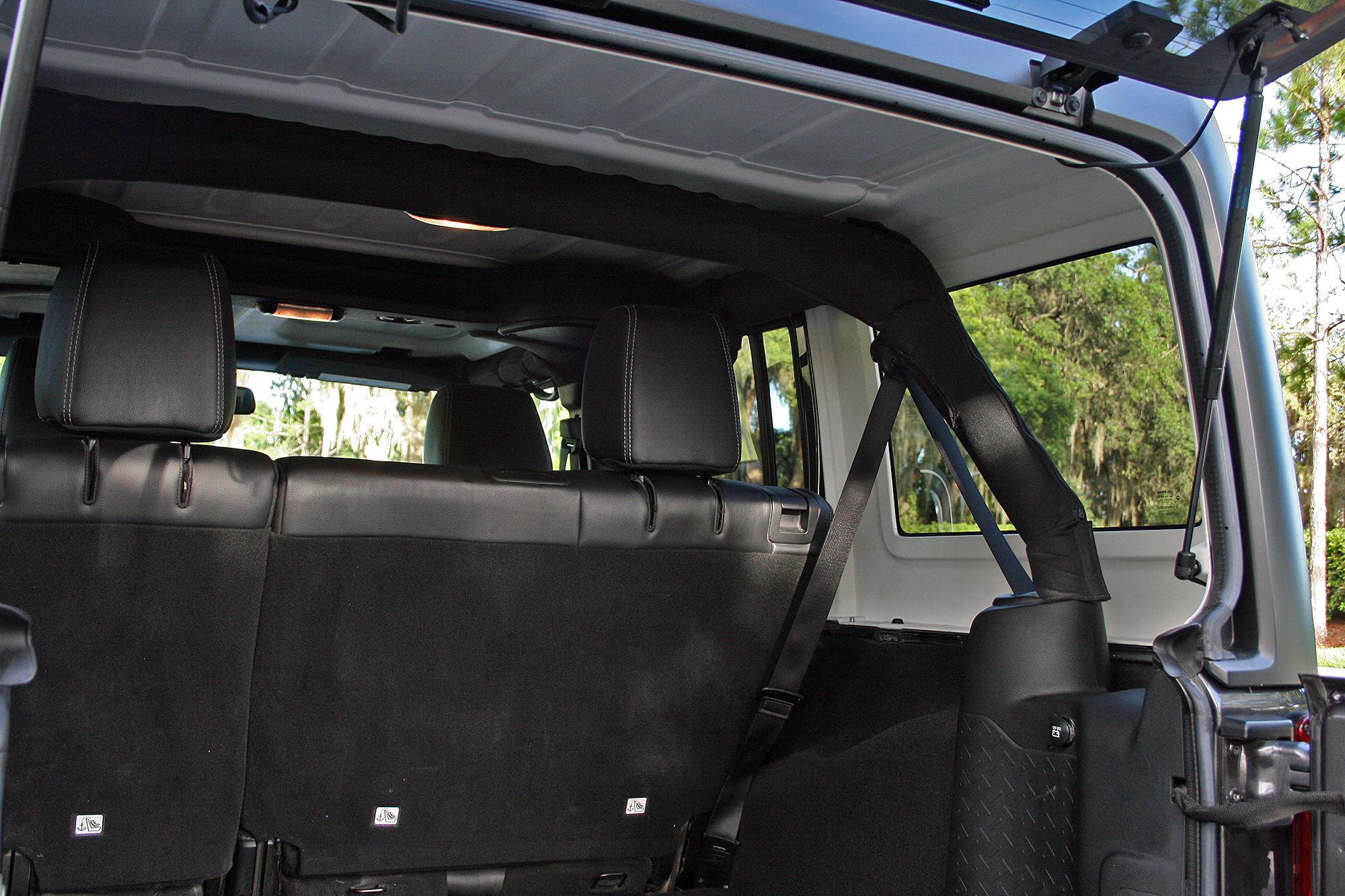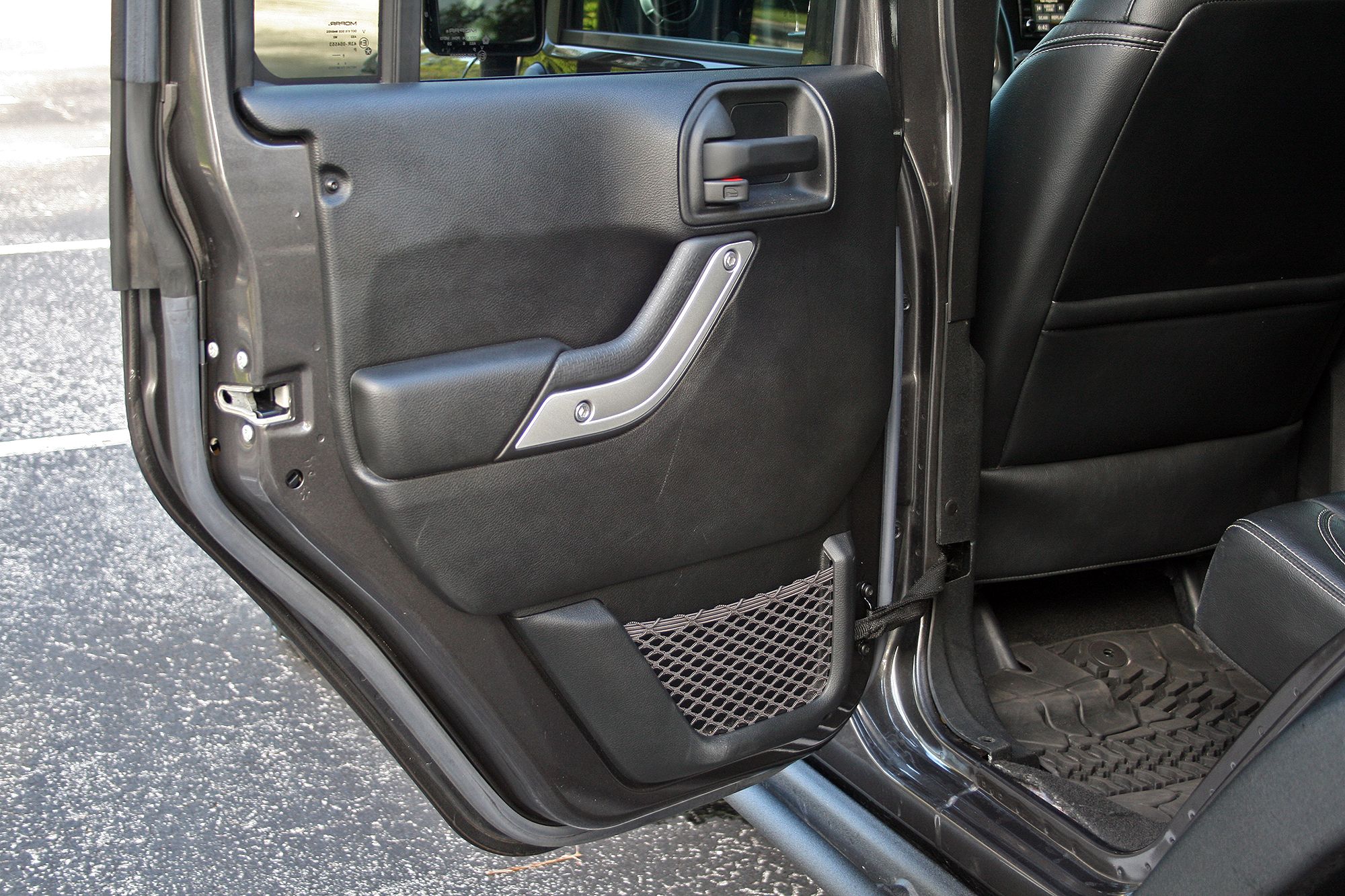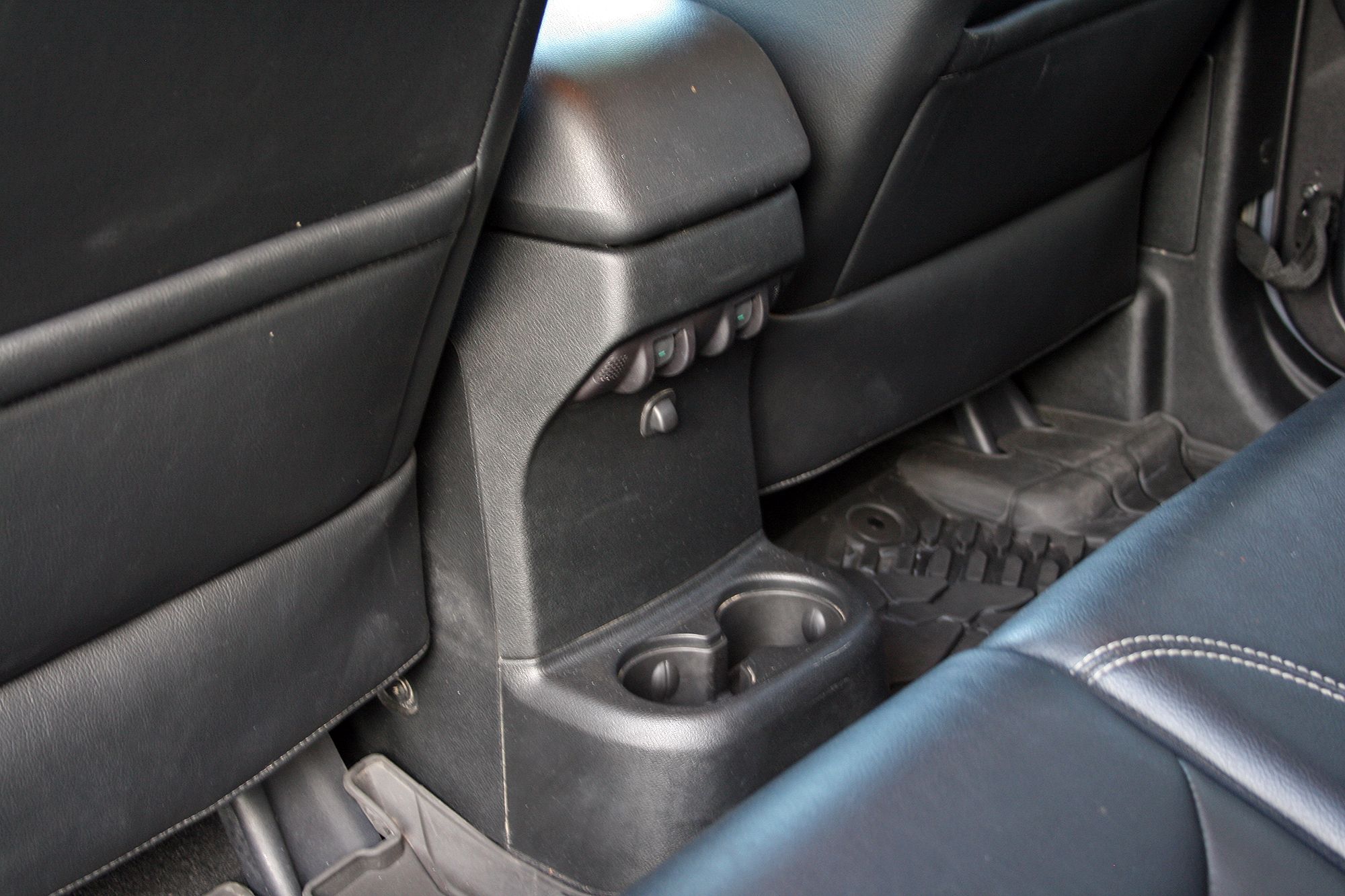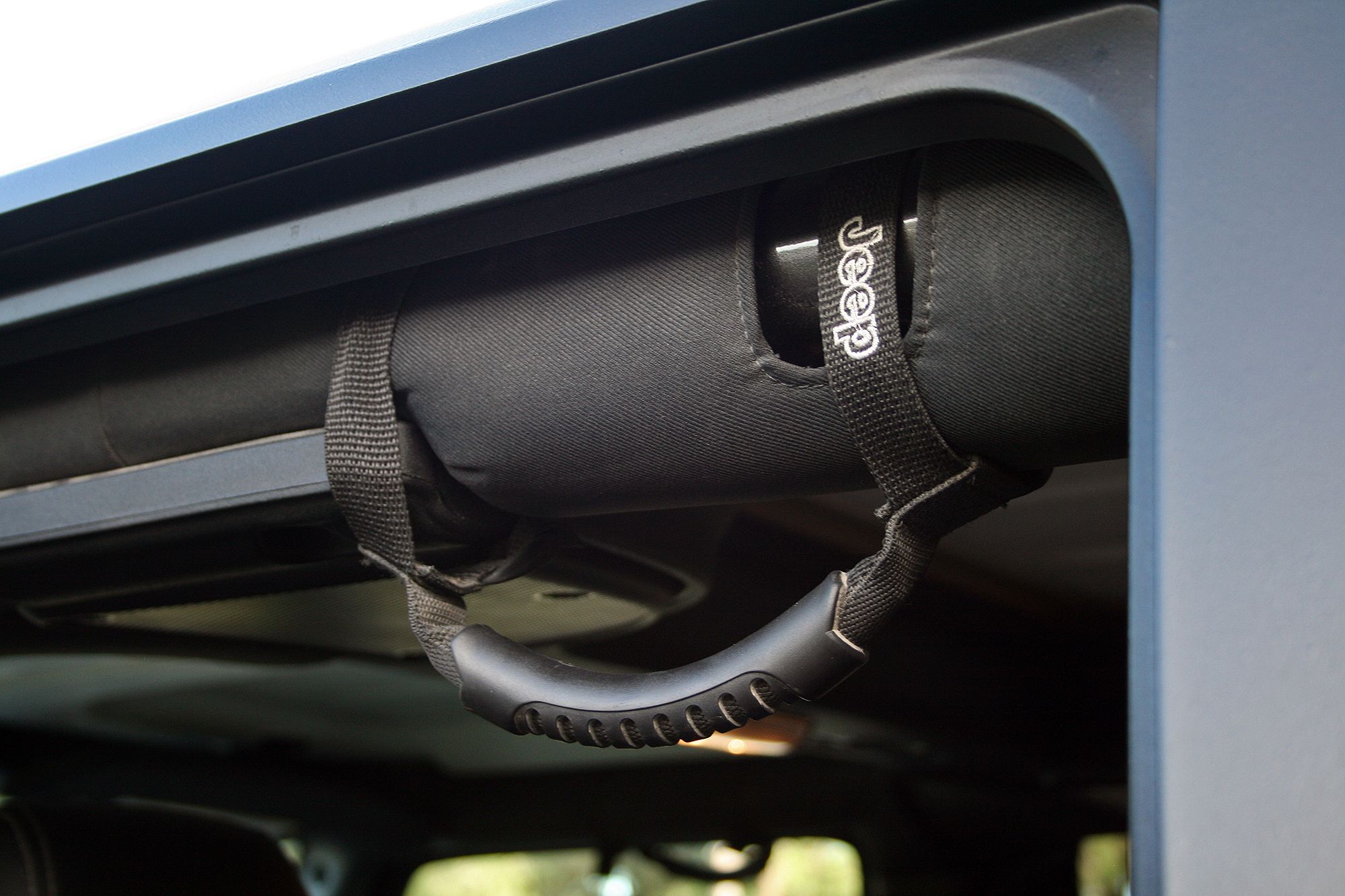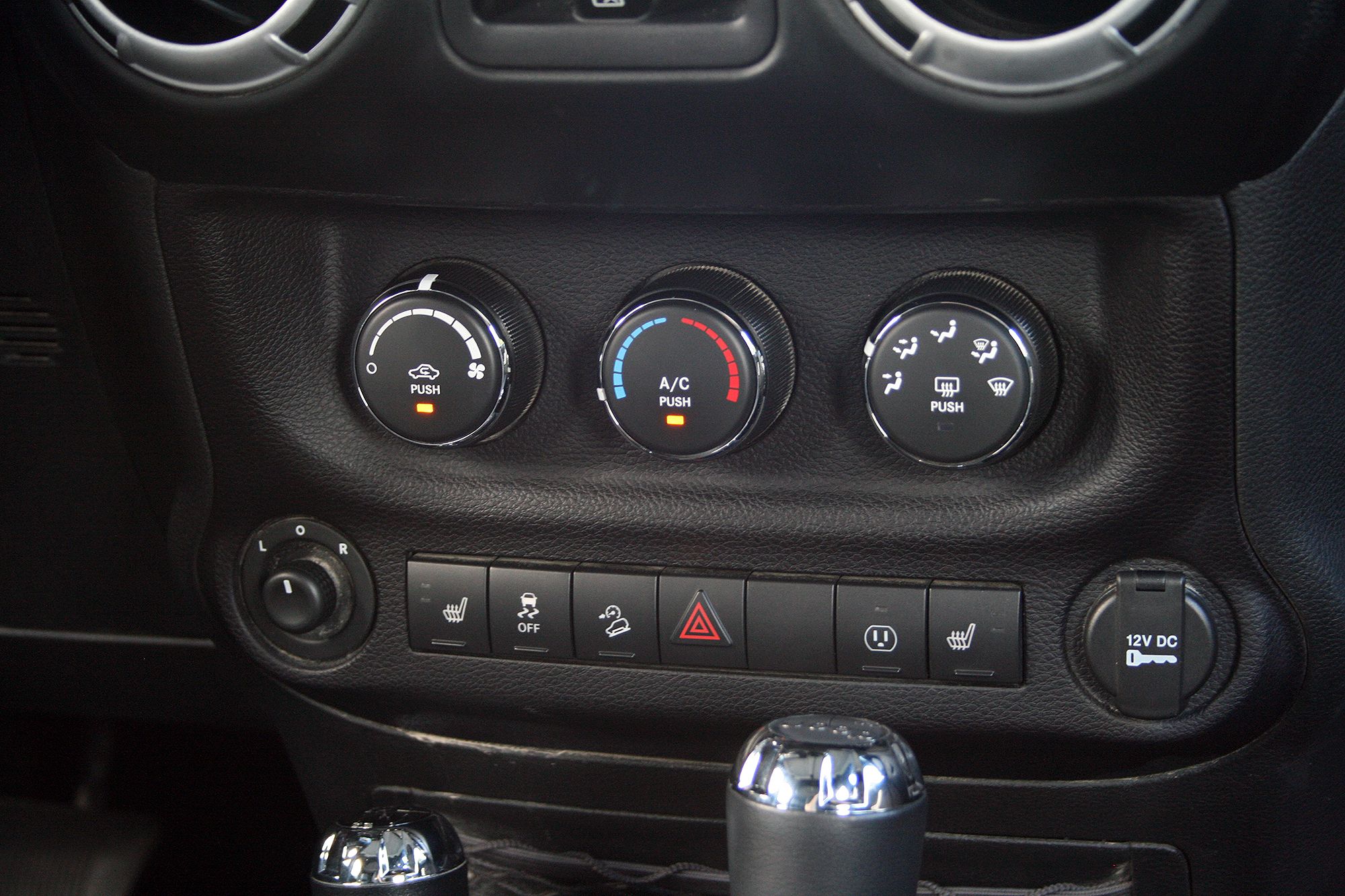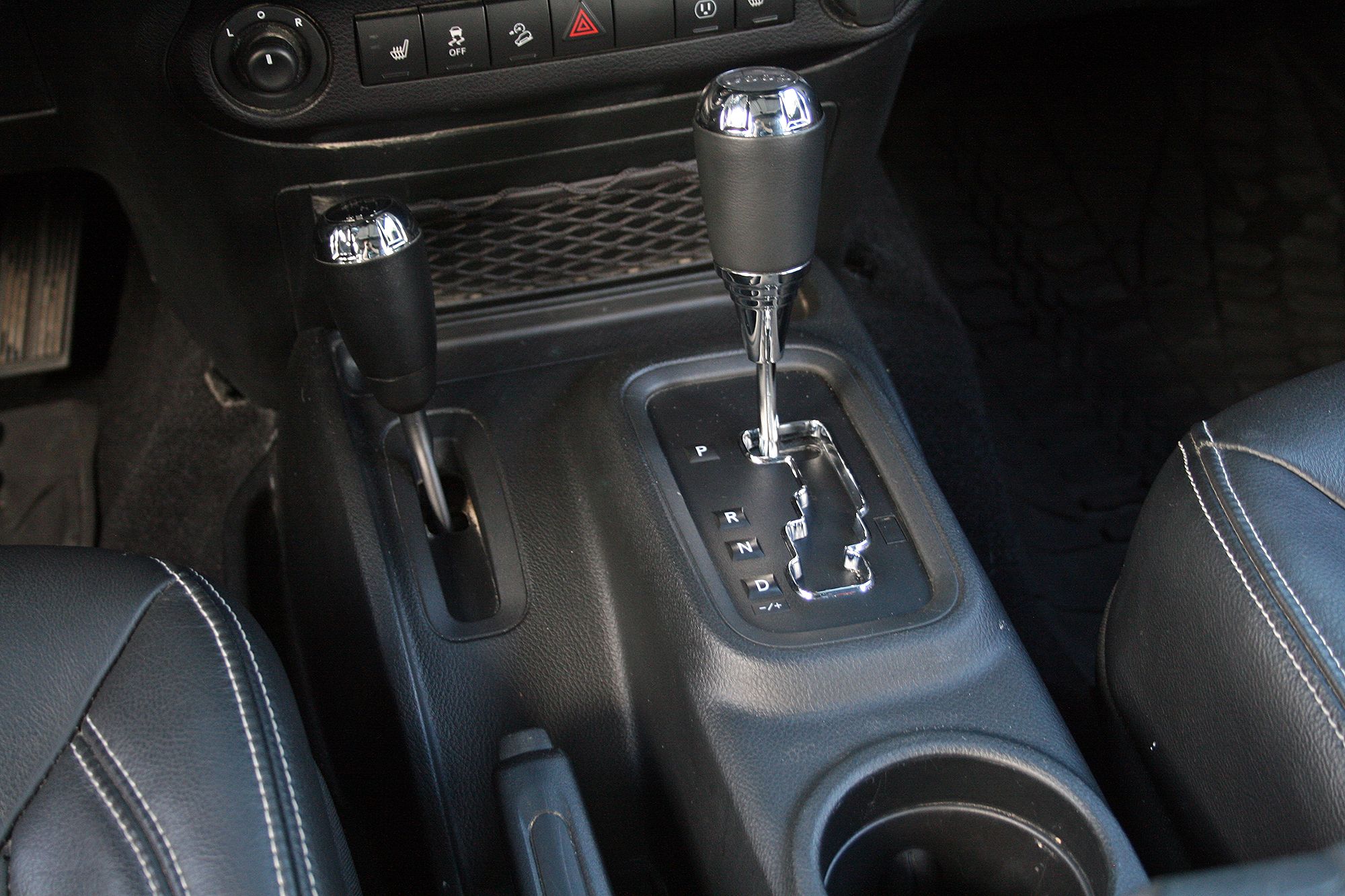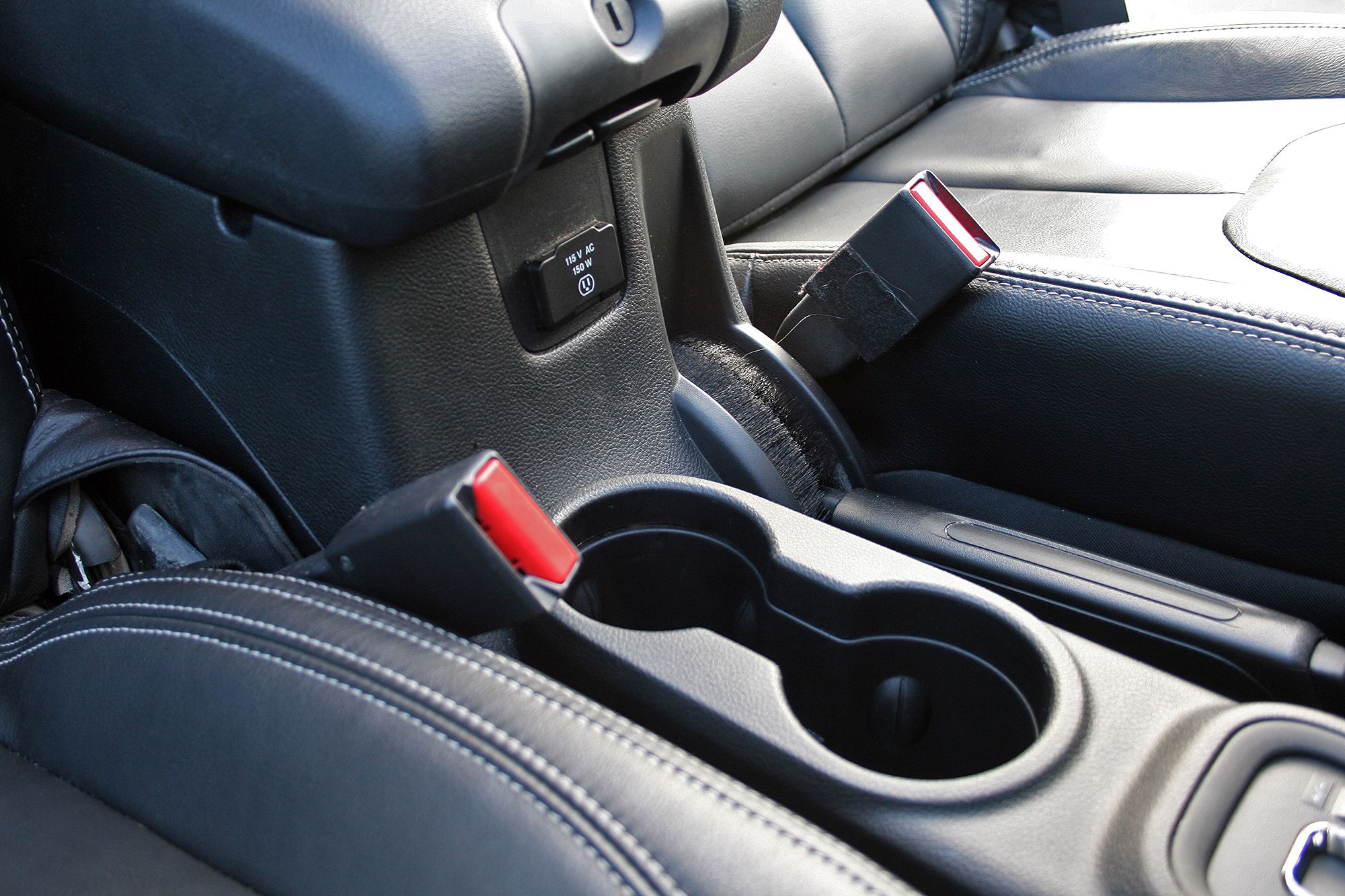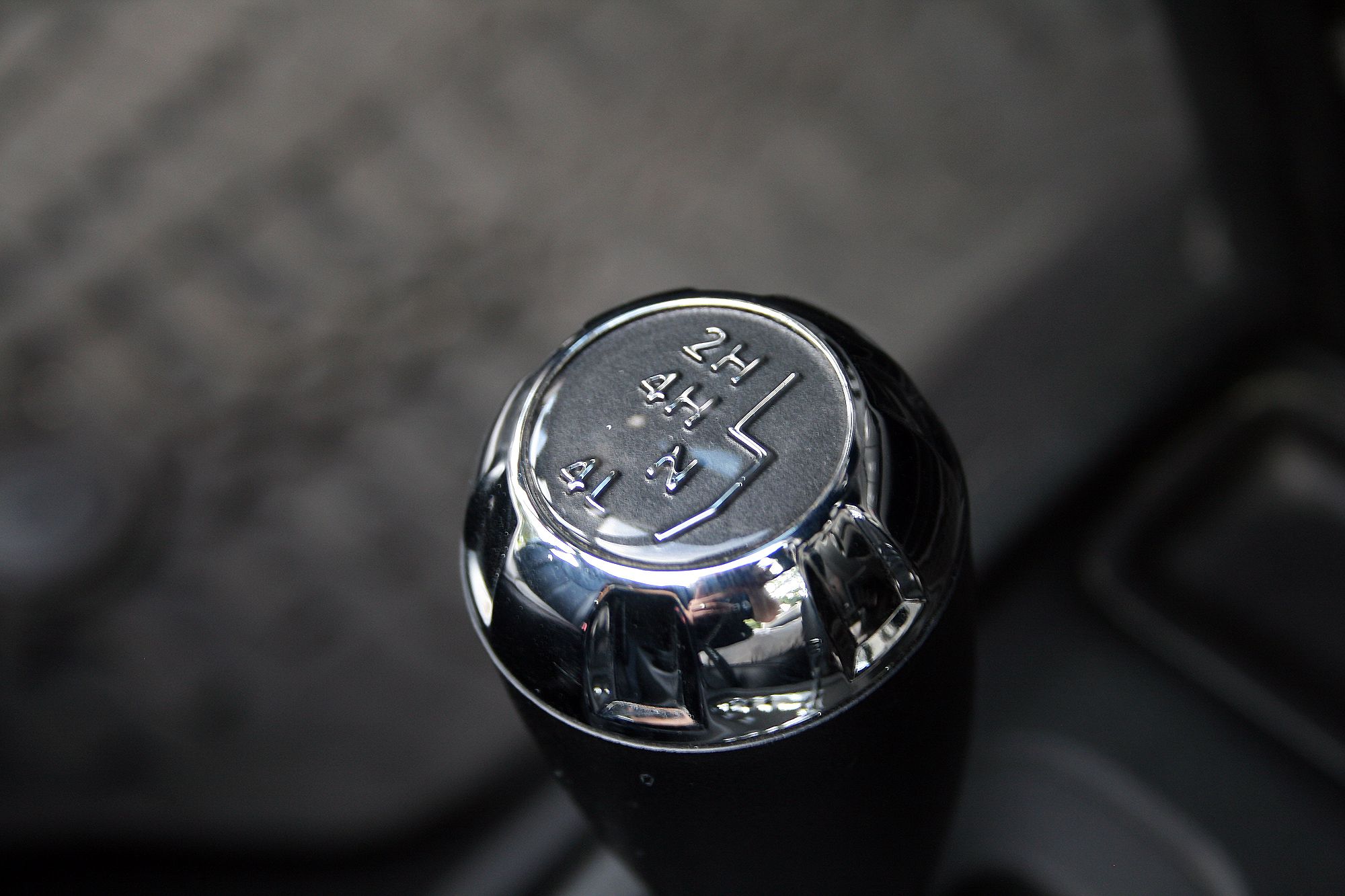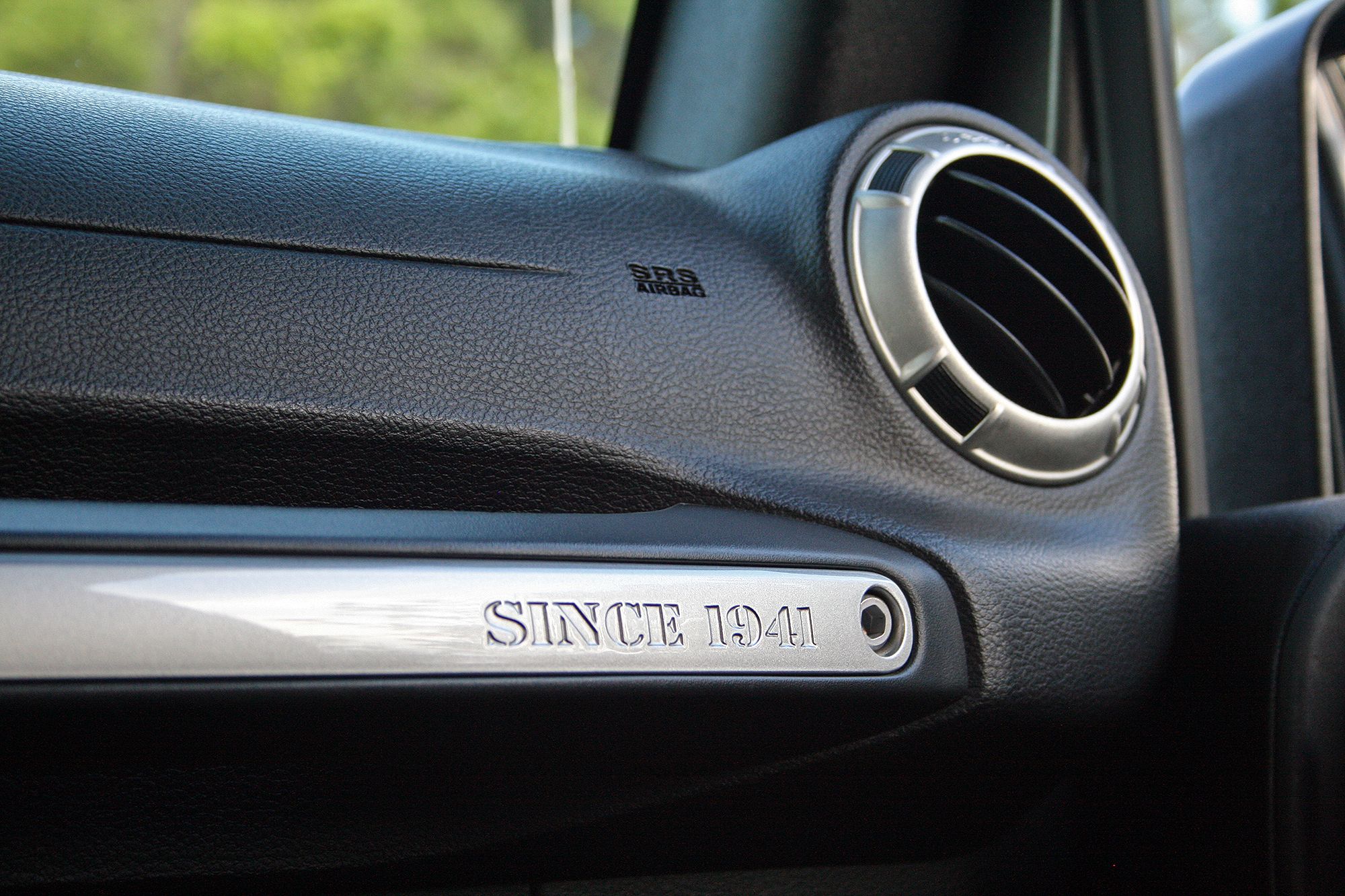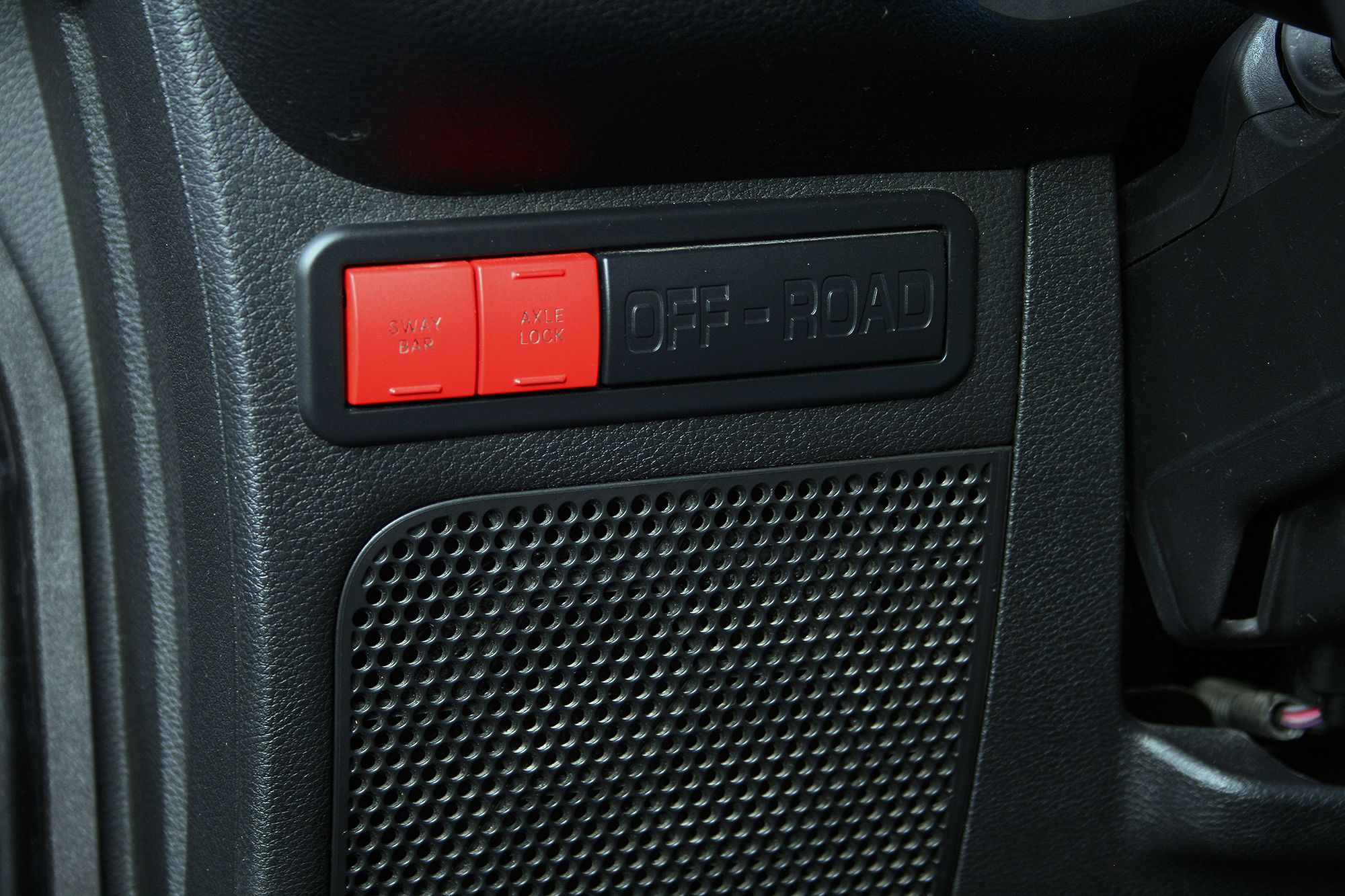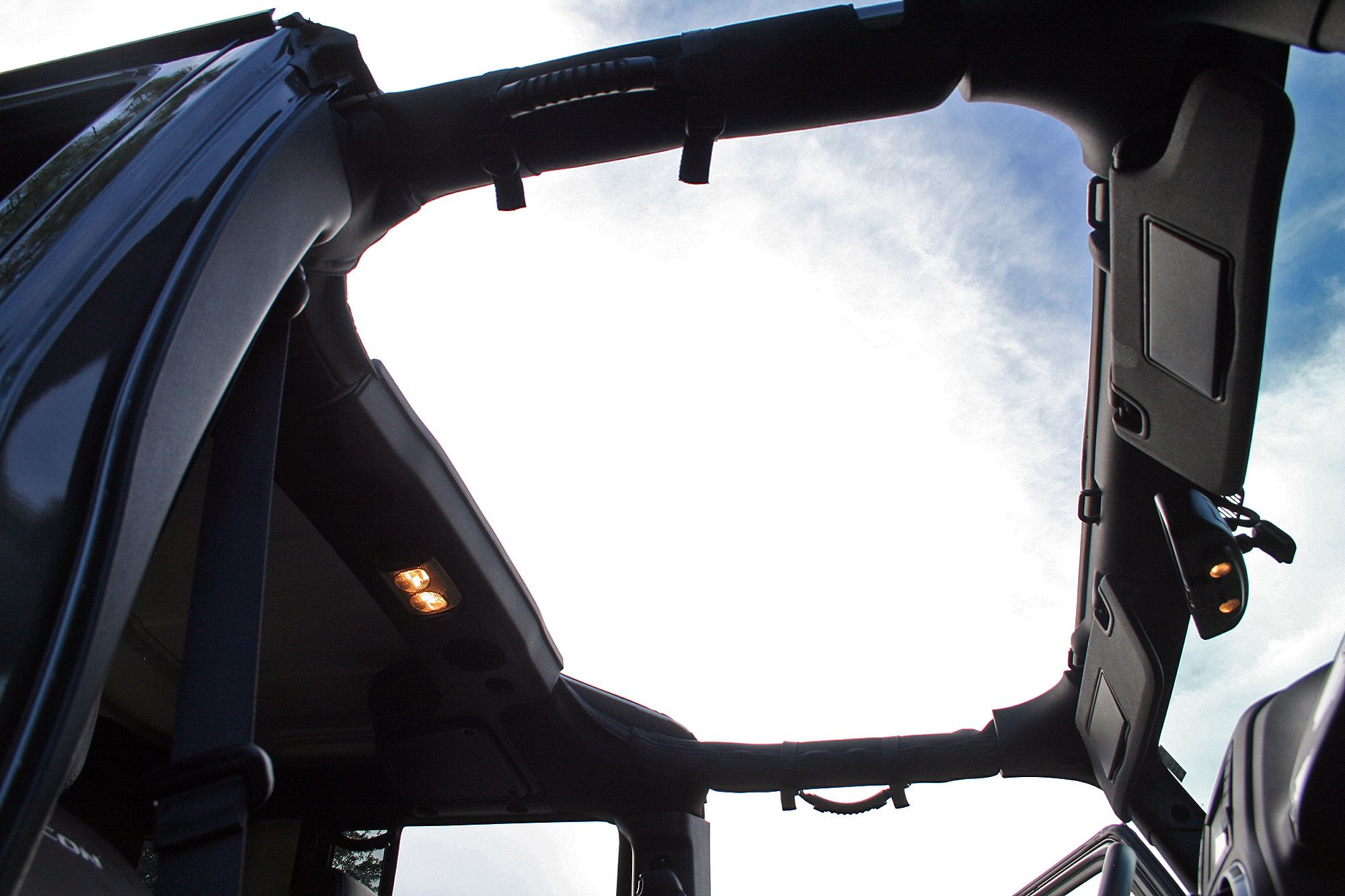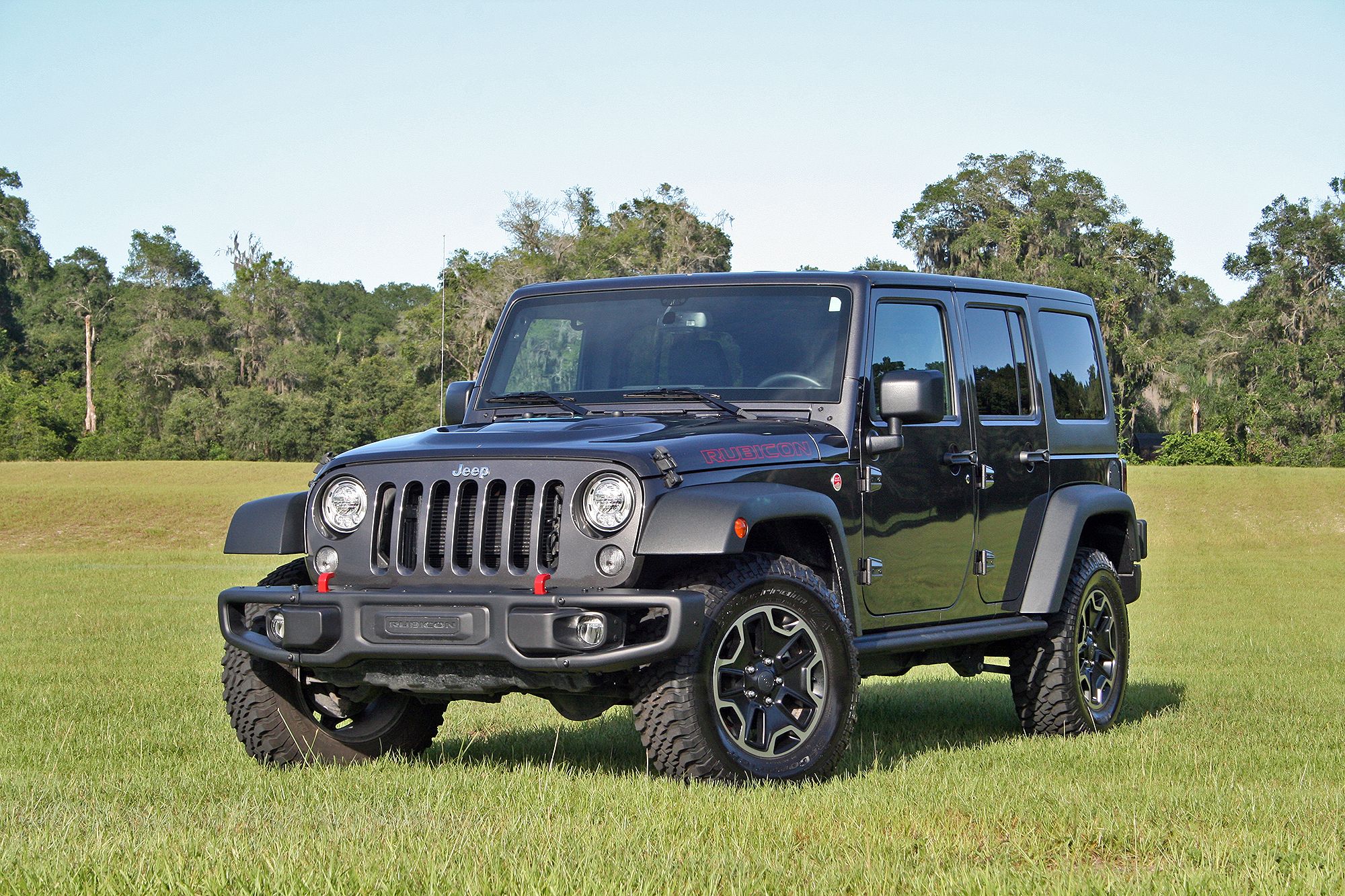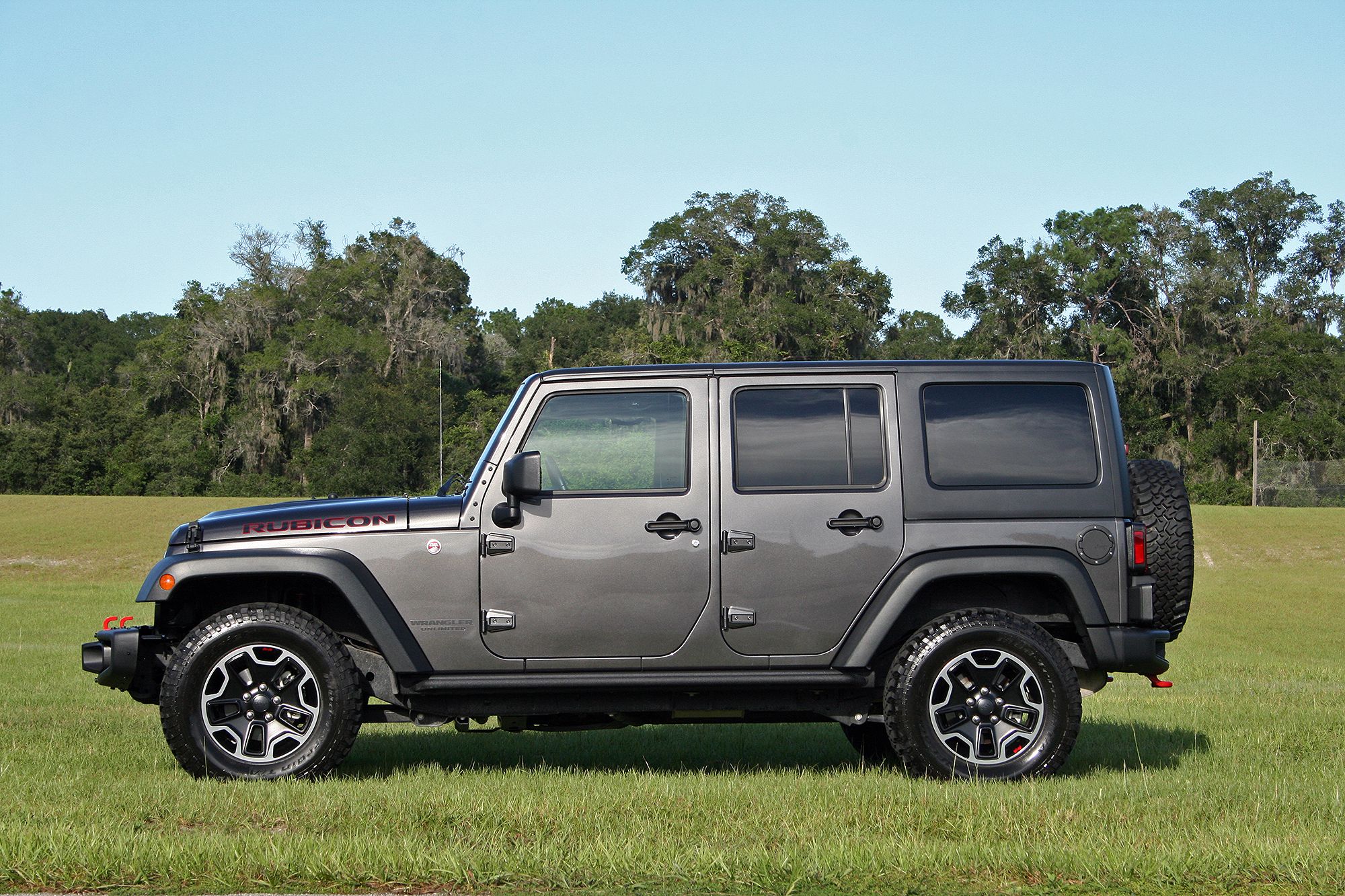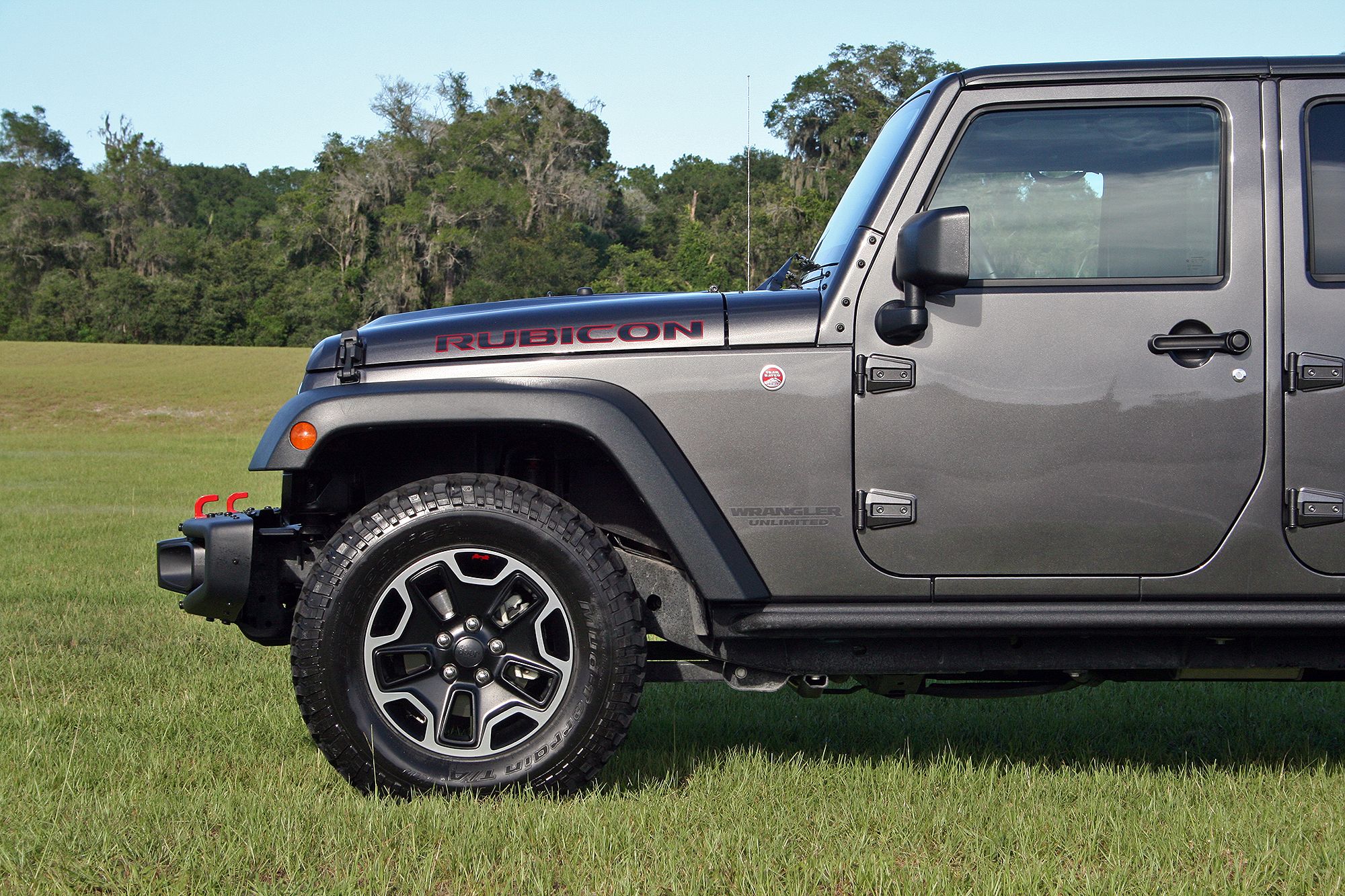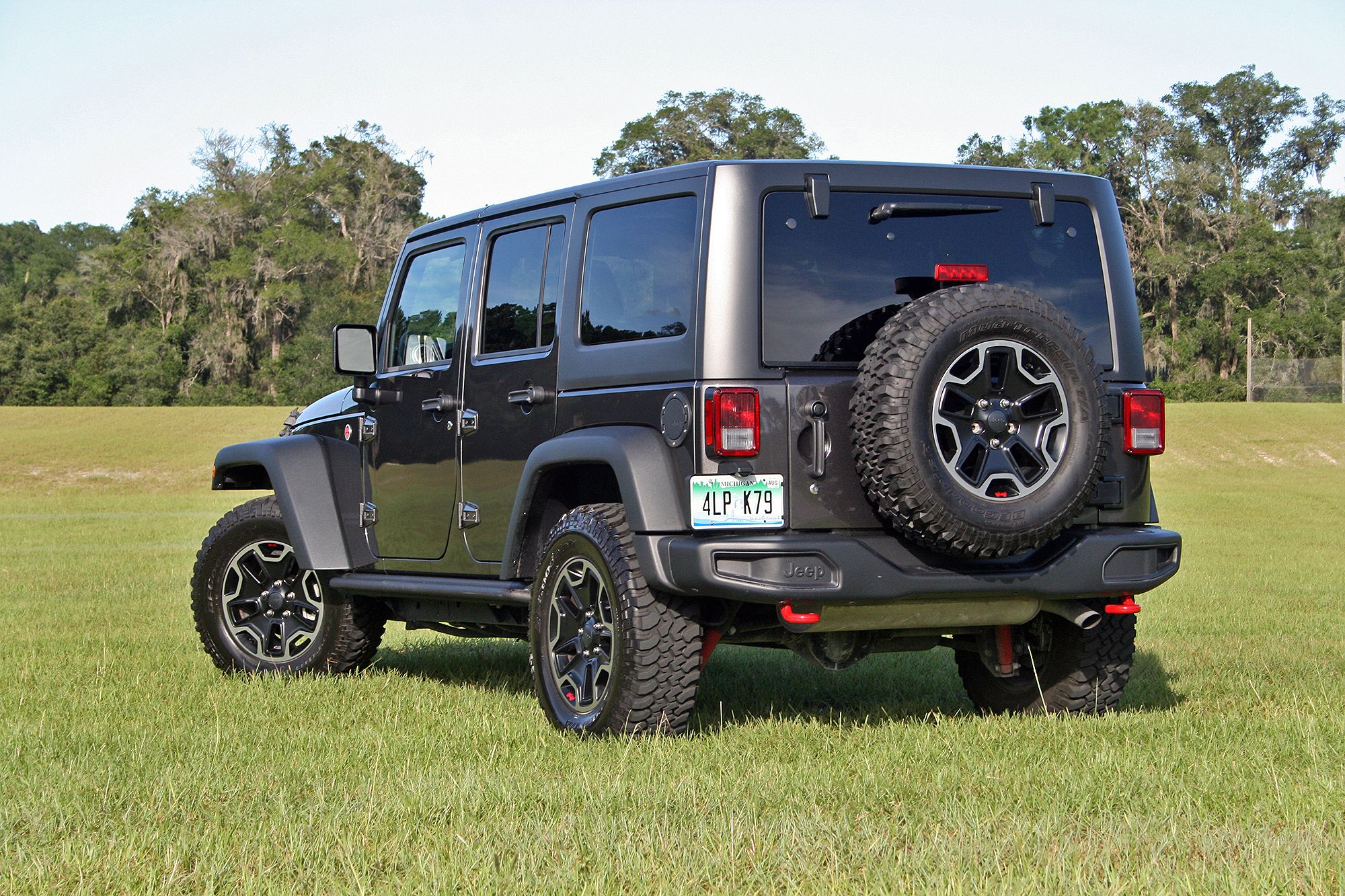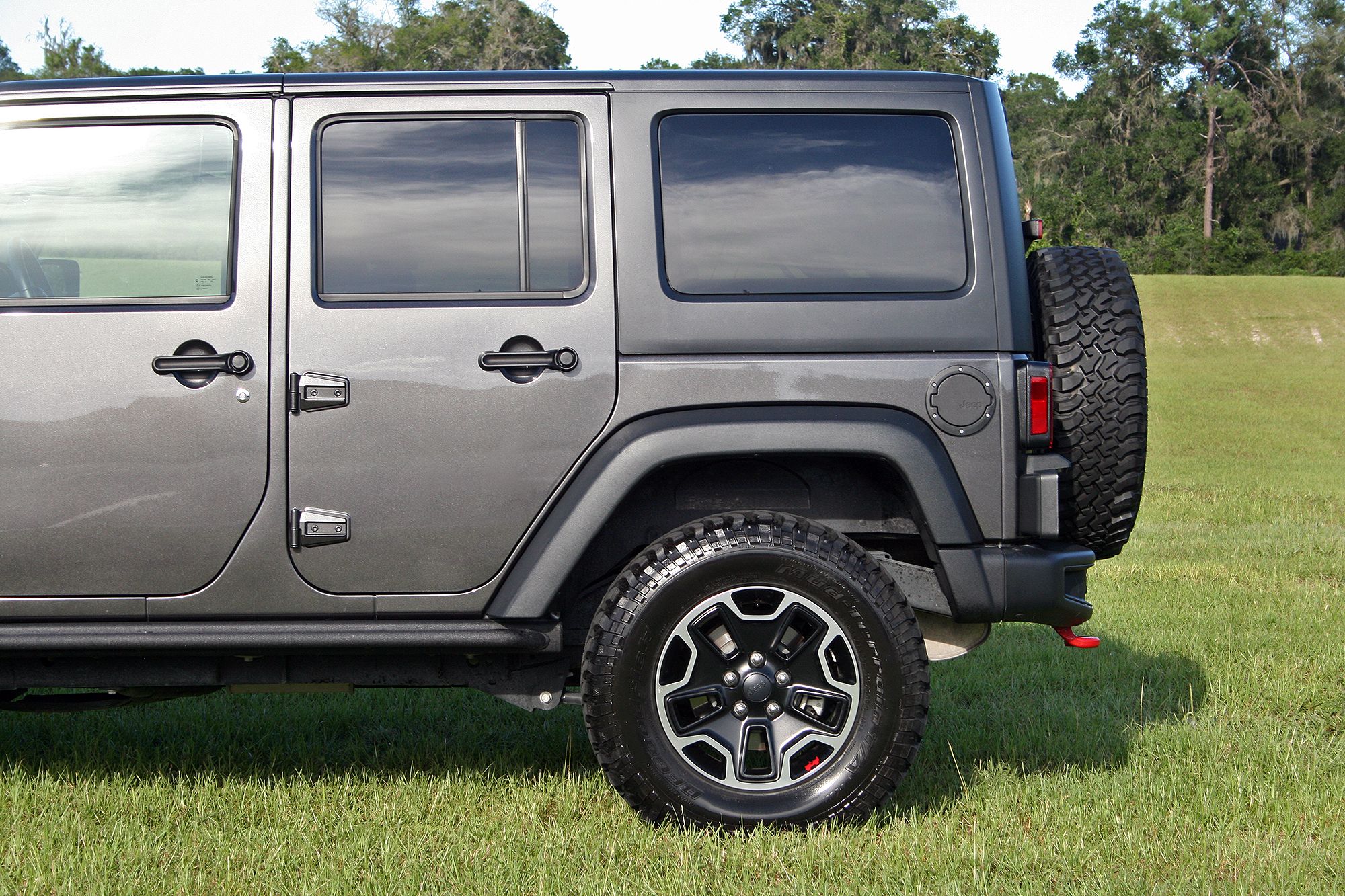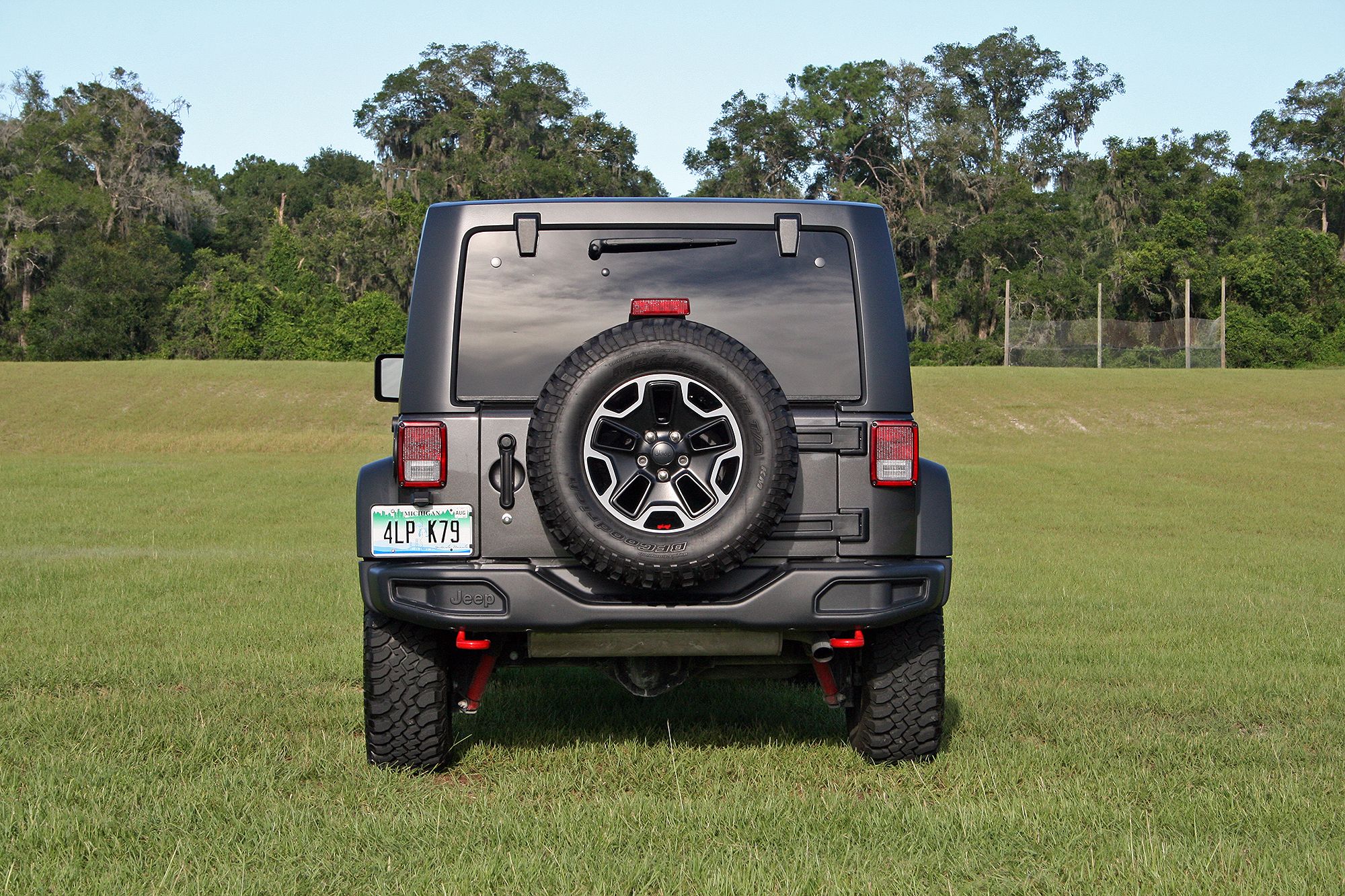Jeep is hardly the oldest automaker, but it’s arguably one of the most iconic. Its premier vehicle, the Wrangler, is slathered in blue-blooded Americana and glorified war history that transcends our continent and into every corner of the globe. Show anybody anywhere that seven-slotted grille and round headlights, and you’ll be rewarded with “Jeep!”
It’s no secret Jeep is completely revamping the Wrangler for 2018, giving it new life with more creature comforts and technology while not diluting any of its rugged off-road capabilities. But before that happens, we’re talking a close look at the current version, the Wrangler JK. It debuted in 2007 and has undergone relatively few changes. Jeep upgraded the interior in 2011 and swapped in the 3.6-liter Pentastar V-6 in 2012 to replace the lazy 3.8-liter V-6. Beyond that, Jeep has relied on special editions to keep the Wrangler fresh. But despite the on-paper stagnation, the Wrangler has exploded in popularity. Jeep went from selling 80,000 Wrangler TJs in 2006 to 202,702 Wrangler JKs in 2015. Much of that can likely be attributed to the Wrangler Unlimited, the four-door version of the two-door SUV. Families could finally justify a Wrangler for both commuting and weekend getaways. Then came the explosion in aftermarket support from companies solely devoted to selling custom parts for the Wrangler. The Jeep community grew and folks hopped on the bandwagon. And who wouldn’t? Just look at it. Read along as I attempt to objectively revaluate a vehicle I’ve been passionate about since the 4.0-liter inline-six was the engine of choice.
Continue reading for more information.
2017 Jeep Wrangler Unlimited Rubicon Hard Rock – Driven
- Make: Array
- Model: 2017 Jeep Wrangler Unlimited Rubicon Hard Rock – Driven
- Engine/Motor: V6
- Horsepower: 285 @ 6400
- Torque: 260 @ 4800
- Transmission: Five-speed Automatic
- [do not use] Vehicle Model: Array
Video Review
Exterior
The Jeep Wrangler Unlimited has retained its shape since 2007, but most won’t have a problem with its appearance. In fact, most Jeep loyalists nervously away the next-generation Wrangler JL, praying its design doesn’t stray too far from convention. My tester, however, breaks slightly from the mold with the Hard Rock package added to the Rubicon trim. Checking the Hard Rock box brings the steel bumpers, the vented hood, the “premium” rock rails, red tow hooks, and a few upgraded bits inside.
The Hard Rock package is more than just for appearances. Its steel front bumper features removable end caps that increase access to the front tires for climbing obstacles. The center section is hollow for mounting a recovery winch – just remove the front and top covers and bold on the mounting hardware. Below the bumper is a steel skid plate that protects important steering and drivetrain components. Remember, these components replace flimsy plastic parts found on the standard Rubicon. The same is true for the rear bumper, too. The Hard Rock’s steel rear bumper is stronger for better body protection and it includes two tow hooks rather than a single hook that comes standard.
Jeep’s use of the Power Dome hood isn’t exclusive to the Rubicon Hard Rock, but it certainly sets it apart from the standard Wrangler. (It’s also found on the Rubicon Recon, Chief, and 75th Anniversary.) In keeping with the functionality trend, the vented hood helps reduce engine bay temperatures. An interesting side effect I noticed during my week of mixed driving is a reduction in hood flutter, the slight hood shake flat-hooded Wranglers have when traveling at highway speeds. Perhaps the vents help relieve under-hood air pressure or maybe it’s the extra rigidity provided by the creased stamped into the sheet metal. Either way, the result is welcomed.
As for the rock rails, the Hard Rock gets the upgraded, or “premium” rock rails with the extended hoop. The standard Rubicon comes with flush-mounted sliders. These extended rails help prevent boulders or stumps from contacting the rocker panels and doors. A side benefit is the ability to stand on them for accessing the roof.
But bumpers and rock rails don’t matter as much as tires. After all, traction is critical to every driving situation. As such, the Wrangler Rubicon comes with LT255/75R BFGoodrich Mud-Terrain KM tires mounted on 17x7.5-inch alloy wheels. The knobby tires provide the extra grip needed in hard-core, off-road situations like deep mud and slick rocks. At 32 inches tall, they help with ground clearance (10 inches) without being too unwieldy for the street. And even with a complete lack of sipping, the tires had no issues in heavy Florida downpours. Hydroplaning over standing water felt nearly impossible as I blasted down rain-soaked roads. The alloy wheels are painted in “Polished Semi-Gloss Black” with a red “Icon” logo thanks to the Hard Rock package. The standard Rubicon uses “Polished Mineral Gray” and a dark gray Icon logo (the side profile of the original Willys MB from WWII).
Doors, Tops, and Driving Free
Part of the Wrangler’s appeal is its open-air driving experience. The doors and top are easily removable, giving Jeepers a wind-in-the-hair experience only surpassed by a motorcycle. A canvas soft top comes standard, but a three-piece hardtop is optional. It’s also what came on my tester. It’s called the Freedom Top and it has removable T-tops above the front seats. Simple latches and two hand-twist bolts hold the plastic panels in place. The rest of the top is a bit more involved to remove. Torx bolts secure the top to the body in several places, and the electrical and water supply must be disconnected for the rear wiper and window washer. Still, it’s a job that can be done in 15 minutes by two people.
Removing the doors is easier. Two short bolts hold each door in place, with one bolt per hinge. The bolts screw in from the bottom and hold the hinge pin in place. By removing the bolts, the hinge pins simply slide upward and out of the body-mounted hinge pockets. A helpful hint: roll the windows down before removing the doors. The window frame gives you something to hold while lifting and carrying. The wiring harness and limiter strap must also be removed, but neither require any tools. For the truly adventurous, the Wrangler’s windshield even folds flat, but doing so requires removing numerous bolts, body panels, windshield wipers, and roll bar supports. It is possible, though.
Exterior Dimensions
|
Wheelbase (Inches) |
95.4 |
|
Overhang — Front (Inches) |
26.7 |
|
Overhang — Rear (Inches) |
30.6 |
|
Track — Front (Inches) |
61.9 |
|
Track — Rear (Inches) |
61.9 |
|
Overall Length (includes spare tire) (Inches) |
164.3 |
|
Overall Width (Inches) |
73.7 |
|
Overall Height (Inches) |
72.5 |
|
Liftover Height (Inches) |
27.8 |
|
Cargo Width at Swing-Gate Opening (Inches) |
58.7 |
|
Cargo Height at Swing-Gate Opening (Inches) |
37.1 |
|
Load Floor Height (Inches) |
27.8 |
Interior
The Wrangler JK’s interior is what truly show the vehicle’s age. While it’s a huge improvement over the 2007-2010 dashboard, the 2011-2017 dash remains a sea of dark, scratchy plastic. The HVAC system only offers single-zone temperature control, the driver information system is wildly dated, the automatic transmission’s gearshifter sounds like it’s about ready to fall apart, and the leather seats are most definitely vinyl. But you know what? None of that matters. The hard-core Jeep enthusiasts doesn’t want new-fangled technology to get wet and break. Everyone else buying Wrangler JKs don’t seem to mind since Jeep sold nearly 200,000 in the U.S. in 2016 – and that doesn’t count Canada and Jeep’s overseas markets.
Still, there are a few gripes I hope Jeep remedies with the next-generation Wrangler JL. First, the 430N Uconnect system is laughably old. It has terrible graphics and even worse user interfaces. it’s simply well past its prime (if it ever had one). Second, would be the overall fit and finish of interior materials. I know, “but it’s a Jeep!” Yeah, yeah it is, but that can’t be an excuse for the upcoming 2018 Wrangler JL. I’m looking forward to a much-improved cabin, and thankfully, it seems Jeep is going to deliver based on the spy shots we’ve seen.
Aside from gripes and blind love, the Wrangler JK’s interior is extremely functional. The dashboard – even the radio – is water-resistant. The carpet flooring is easily removable for cleaning or to just keep out. What’s more, the floor pans have rubber grommets for draining water. What other modern vehicle comes with drain holes for the interior?
Comfort is achievable in the seats, though the manual controls only allow for so much adjustment. Rear-seat legroom isn’t bad and my five-year-old’s booster seat fit perfectly in the seat, with plenty of room for the seatbelt buckle. Of course, the Wrangler’s rear bench folds 60/40-style, allowing for larger cargo. The official stats show the Wrangler Unlimited can swallow 55 cubic feet with the seats up and 70.6 cubic feet with the rear seats folded.
Drivetrain
Power comes from the venerable 3.6-liter Pentastar V-6. New for 2012 in the Wrangler, the engine has remained unchanged. It offers up 285 horsepower at 6,400 rpm and 260 pound-feet of torque at 4,800 rpm. While hardly the Jeep Grand Cherokee SRT TrackHawk and its 707 horsepower, the Pentastar moves the 4,500-pound Wrangler… well, adequately. The humble power output is exacerbated by a lazy, off-road-oriented throttle response that requires a stern kick to elicit any real response form the engine. Add to that an archaic five-speed automatic transmission that doesn’t like downshifting, and the Wrangler can feel utterly sluggish on the road. Perhaps retuning the throttle and shift-point mapping would liven the driving experience, though it would likely be detrimental to the smoothness achieved by the slow-responding throttle in bumpy, off-road situations where a gentle touch is needed. Think rock crawling in 4WD Low range over slick boulders.
Despite the 3.6-liter V-6 not having outrageous power, it returns rather sad fuel economy. The EPA estimates the Wrangler Unlimited gets 16 mpg city, 20 mpg highway, and 18 mpg combined. During my week of mixed driving, I averaged only 16 mpg. Then again, it’s hard to expect anything more from a solid-axle, body-on-frame SUV with aerodynamics borrowed from a brick.
|
Engine |
3.6-liter Pentastar V-6 |
|
Horsepower |
285 HP @ 6,400 RPM |
|
Torque |
260 LB-FT @ 4,800 RPM |
|
Transmission |
six-speed manual |
|
Fuel economy city/highway/combined |
16/20/18 |
Off-Road Tech
Of course, the Wrangler doesn’t pretend on-road performance and fuel economy are its strong suits. Rather, the Jeep’s abilities center on its part-time transfer case and accompanying off-road hardware. Being the Rubicon, the Wrangler gets Jeep’s most aggressive 4WD system – the Rock-Trac transfer case. This manually operated system boasts a 4:1 Low Range for low-speed torque multiplication. Comparatively, the standard Wrangler’s Command-Trac T-case uses a 2.72:1 Low Range gear ratio. This gives the Rubicon the ability to climb steep rock faces, tow out stuck vehicles, and churn the tires through deep mud without stalling the engine. 4WD High Range can be operated on the fly at road-going speeds. It’s best used for slippery conditions like snow or shallow sand. It’s important to note, the traction control system will limit wheel slip in 4WD High Range, cutting power to prevent a loss of control – even with the traction control button pressed. This is necessitates 4WD Low range when attempting any obstacle where wheel spin might occur but isn’t
bad.
Another big ingredient in the Rubicon’s recipe is its Dana 44 axles. These solid axles are stronger than the Dana 30 underpinning the front of a standard Wrangler. The extra strength is combined with driver-controlled, electronically locking differentials. When in 4WD Low, the driver simply presses a button left of the steering wheel to activate. One press locks the rear differential and two locks both the rear and front diffs.
For extra suspension articulation over rough ground, the Wrangler Rubicon comes with an electronic front sway bar disconnect system. At speeds below 15 mph, the driver can press a button (again, to the left of the steering wheel), and the sway bar uncouples to five the front tires more vertical travel relative to the body.
Behind the Wheel
In practice and with some practice, the Wrangler Unlimited shod with those BFGoodrich Mud-Terrain tires becomes easy to drive. No, it’s not fast, nor does it handle particularly well around corners. The ride is surprisingly harsh, too, despite the Rubicon’s “Performance Suspension” (and “performance” as in performing well off-road). The tires’ tall tread also impart some squirminess. At highway speeds between 70 and 80 mph, the Jeep’s ride actually levels out, providing a relatively relaxes experience, especially with the cruise control activated. By relatively, I’m talking about a flat-nosed SUV with a body-on-frame architecture riding on solid axles and mud-tires. Quick lane changes should be avoided, but a weekend road trip across the state is completely recommended. You’ll get used to the noisy interior, too. Between whipping wind and road hum, the top-spec Alpine stereo system (standard on the Rubicon Hard Rock) has a hard time keeping up.
Outward visibility is surprisingly good thanks to the low dashboard, short hood, and flat windshield. The side mirrors are large, too, as are all the rear windows for quick glances over the shoulder. The only exception is directly rearward, which the view is impeded by the tailgate-mounted spare tire and third brake light. Overall though, the Wrangler Unlimited Rubicon Hard Rock offers a unique and rewarding driving experience. It just takes some getting used to and the reminder that this Jeep is best enjoyed sans pavement.
Pricing
The 2017 Jeep Wrangler Unlimited starts at a reasonable $27,895. Of course, that’s for the base Sport trim with very little equipment and 17-inch steel wheels wrapped in puny street tires. Above that is the Sport S at $31,095, which has alloy wheels with larger tires. It also makes available a slew of options not available to the base Sport. Spanning between the Sport S and the Rubicon Hard Rock are nine trim levels, each with distinctive attributes and gradually increasing price points. Perched atop the Wrangler lineup is the Rubicon Recon, a special edition similar to the Hard Rock, but with even stronger front Dana 44 axle, premium rock rails with tread plates, and 17-inch, five-spoke, alloy wheels. It starts at $42,945.
Then there is the Rubicon Hard Rock. It slots just $700 under the Rubicon Recon at $42,245. My tester came with several optional extras. These include the five-speed automatic transmission ($1,400), 4.10 axle ratio ($695), Freedom Hardtop ($595), Uconnect 430N infotainment system ($1,195), and remote start ($495). Add to that the $995 destination and delivery fee, and the total price came to $47,620.
|
2017 Trims |
Starting Price |
|
Sport |
$27,895 |
|
Sport S |
$31,095 |
|
Willys Wheeler |
$32,195 |
|
Big Bear |
$32,595 |
|
Freedom Edition |
$33,595 |
|
Sahara |
$34,245 |
|
Willy Wheeler W |
$34,295 |
|
Rubicon |
$37,445 |
|
Smoky Mountain |
$38,145 |
|
Chief |
$38,245 |
|
Winter |
$40,245 |
|
Rubicon Hard Rock |
$42,245 |
|
Rubicon Recon |
$42,945 |
Competition
Toyota 4Runner TRD Pro
As one of the last remaining body-on-frame SUVs built for venturing off the beaten path, the Toyota 4Runner is the Wrangler’s truest competitor. Lined up against the Rubicon, the 4Runner TRD Pro offers outstanding off-roading capability thanks to TRD Bilstein shocks, TRD springs, an electronic locking rear differential, an aluminum front skid plate, 17-inch wheels wrapped in Nitto Terra Grappler tires, and Toyota’s Multi-Terrain Select and Crawl Control system. The 4Runner TRD Pro also uses a part-time, manually shifted transfer case for engaging the front wheels.
Like all 4Runners, the TRD Pro is powered by Toyota’s aging 4.0-liter V-6. Rated at 270 horsepower and 278 pound-feet of torque, the V-6 is only adequate at moving the 4,750-pound SUV. A five-speed automatic transmission is the only gearbox available. While the 4Runner TRD Pro doesn’t have a disconnecting front sway bar, it does have Multi-Terrain Select, which gives the driver different terrain settings to choose from. The computer then adjusts various vehicle parameters to suit the terrain. In addition, Crawl Control works like a low-speed cruise control, allowing the driver to concentrate on steering. The driver chooses from five speed settings and the computer modulates the throttle and brakes to maintain the pace. It’s only downfall is its noisy operation.
The 2017 Toyota 4Runner TRD Pro starts at $42,400. Options are limited to three exterior color choices and a sliding cargo deck with under-floor storage. Toyota does offer various deal add-ons like floor mats, cargo dividers, a first-aid kit, and paint protection film.
Read more about the Toyota 4Runner TRD Pro.
Ford & GMC
The 4Runner TRD Pro might be the Wrangler’s only competition, but it won’t be for long. Ford is officially bringing back the Bronco in 2020 and GMC’s Duncan Aldred says the automaker is exploring a “Wrangler-esque type vehicle.”
As for the Bronco, we know it’s based on the upcoming 2019 Ranger mid-size pickup and it’s body-on-frame construction. Ford has been coy on further details, but we’re hoping for an FX4 or even a Raptor version with hardy off-road chops. Even less is known about GMC’s plans, but it could build an SUV based off the Canyon mid-size truck. Perhaps the Trailblazer name will be resurrected, too. It would be a smart move, especially considering this corner of the SUV market is heating up.
Conclusion
The Wrangler JK has served Jeep diligently over the last 10 years. Its combination of ruggedness and capability understandably begat its massive aftermarket support and loyal following of off-roading enthusiasts. Do a Google search – I’d be you’ll find more Jeep clubs in your area than any other vehicle-specific group. That’s a big reason why the Wrangler is so popular. Add to that the everyday usability afforded by the four-door Unlimited. Before it debuted in 2007, the Wrangler and CJs were too compromised to serve as a family’s main transportation, though they still sold extremely well and garnered a respectable following. But now, mom and dad can throw the kids in the back seat just as easily as in a crossover or sedan.
And there lies the Wrangler Unlimited’s beauty
It can make trips to the PTA meeting and grocery store during the week, and tackle weekend getaways through the Rubicon trail, Moab desert, or some muddy path outside city limits. Fold the back seats down and it can haul bookcases from IKEA. Take the doors and top off and it feels perfectly at home cruising down Daytona Beach on some summer evening with Jimmy Buffet on the radio.
Yet for all its lovable traits, the Wrangler JK needs updating. Thankfully, Jeep is giving the Wrangler a lugnuts-up reboot for 2018, addressing concerns like the outdated in-dash tech, the noisy cabin, the lack of power, and the unimpressive fuel economy. The upcoming Wrangler JL has some big shoes to fill, but if any automaker can update an icon without killing its vibe, it’s Jeep. I’m deeply excited to see what the future holds.
References
2020 Ford Bronco
Read our speculative review on the 2020 Ford Bronco.
GMC building Wrangler fighter
What Makes a Rubicon Hard Rock?
2017 Jeep Wrangler Rubicon: Highs & Lows

